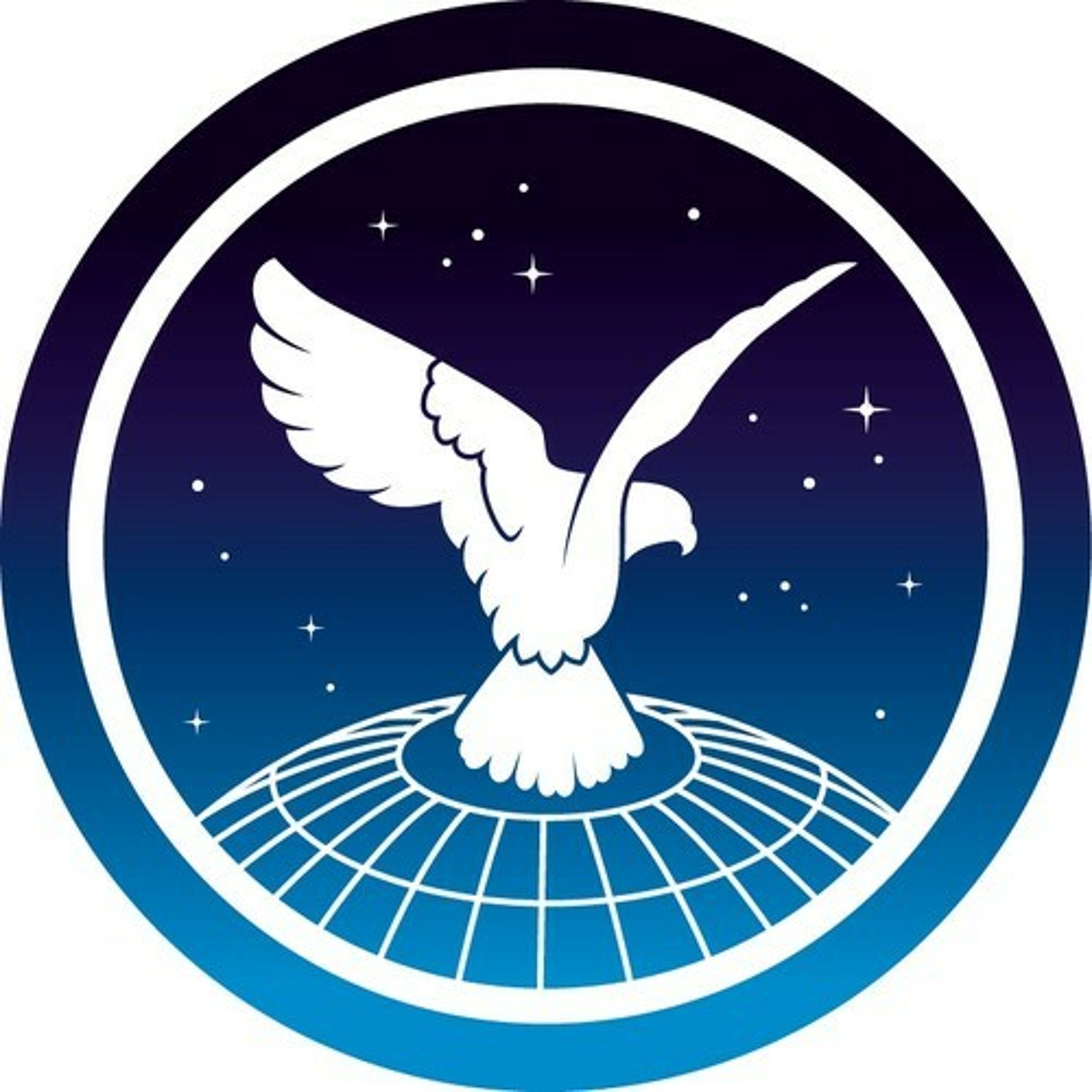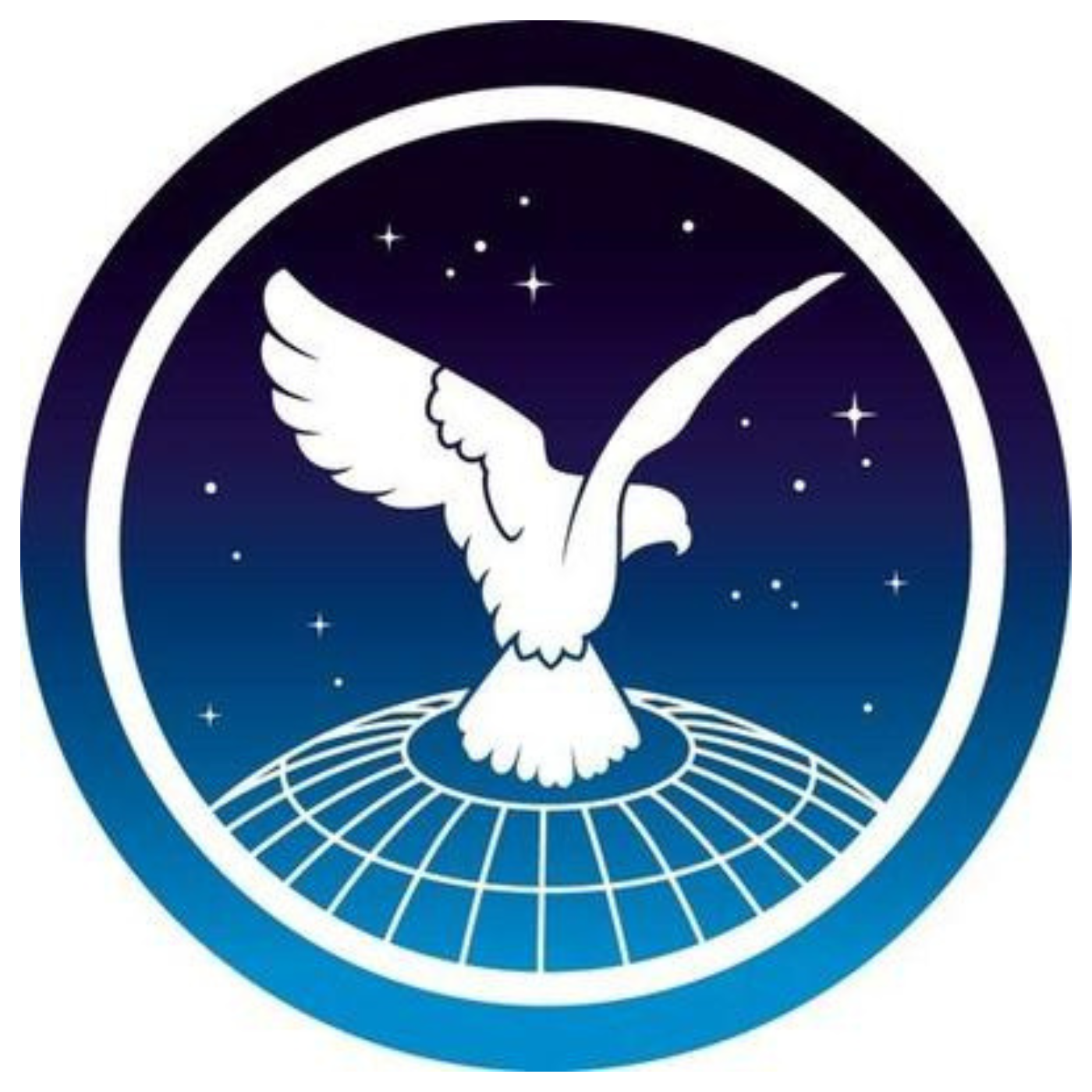
Royal Aeronautical Society Podcast
AeroSociety Podcast
The Royal Aeronautical Society is the world’s only professional body dedicated to the entire aerospace community. Established in 1866 to further the art, science and engineering of aeronautics, the Society has been at the forefront of developments in aerospace ever since.
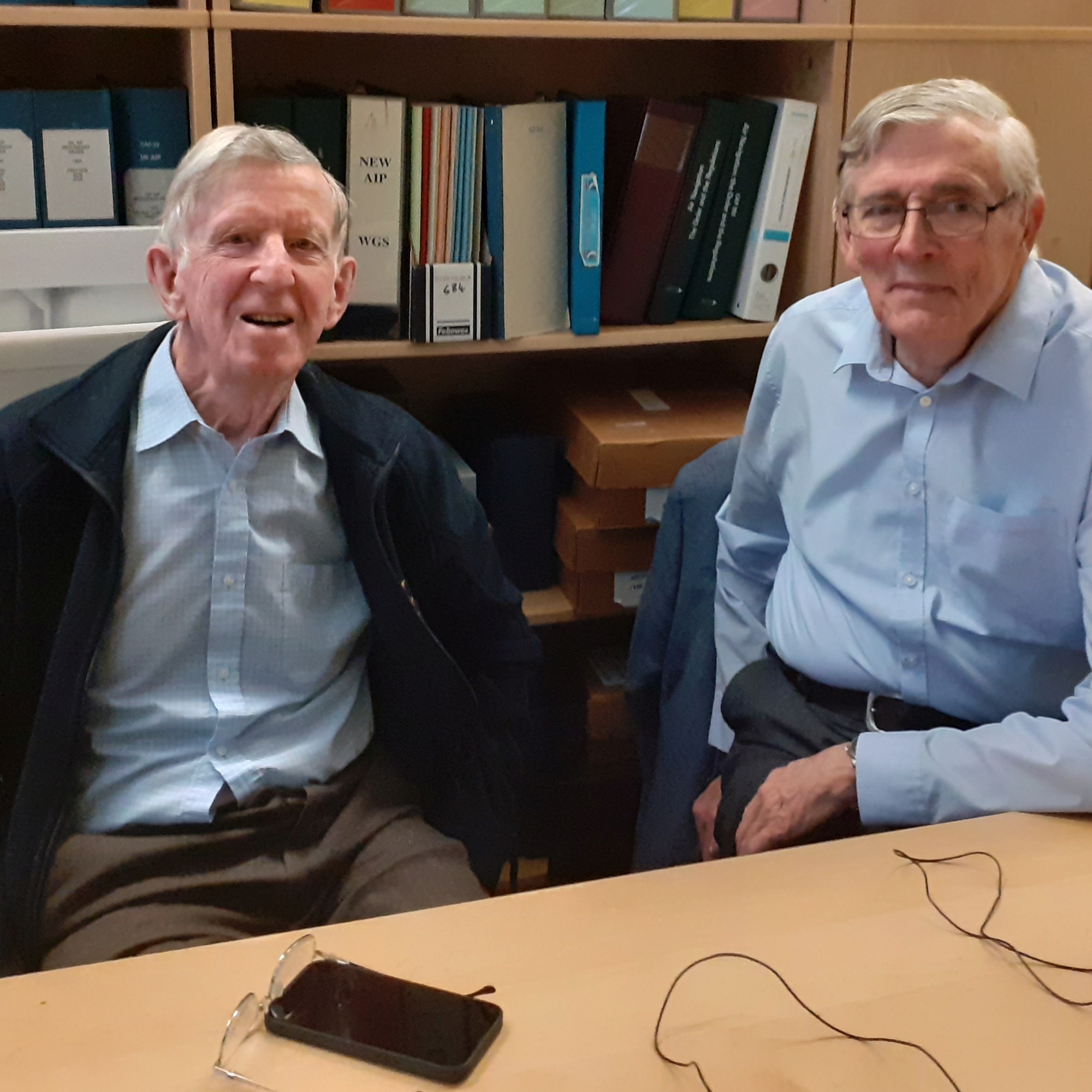
Cansdale talks to…. Sir Donald Spiers HonFRAeS
After their formal oral history interview, former MOD Director of Aircraft Sir Donald Spiers and former Royal Aircraft Establishment officer Roger Cansdale sat down to mull over the past and future of aviation. In their fascinating wide-ranging discussion, Roger and Donald swap stories on the closure of the RAE and its apprenticeship programme, successes of private venture aircraft, retiring at 60, dealing with interpreters, Donald’s national service, visiting Vietnam during the Vietnamese War,
Feb 24, • 40:27

An interview with Dr C G B (Kit) Mitchell FRAeS…. Making public transport disability-friendly the RAE way
As well as working at the Royal Aircraft Establishment (RAE) for many years, Kit Mitchell worked at what became the Transport Research Laboratory (TRL) at various times from 1970 to 1994. During this part of the interview, Kit talks about his work researching public transport and the effects of transport policies and provision on different groups of people, including elderly and disabled people. As well as being the man behind ‘Dial-a-bus’, Kit regards his team’s work on British and later Europe
Feb 19, • 28:23
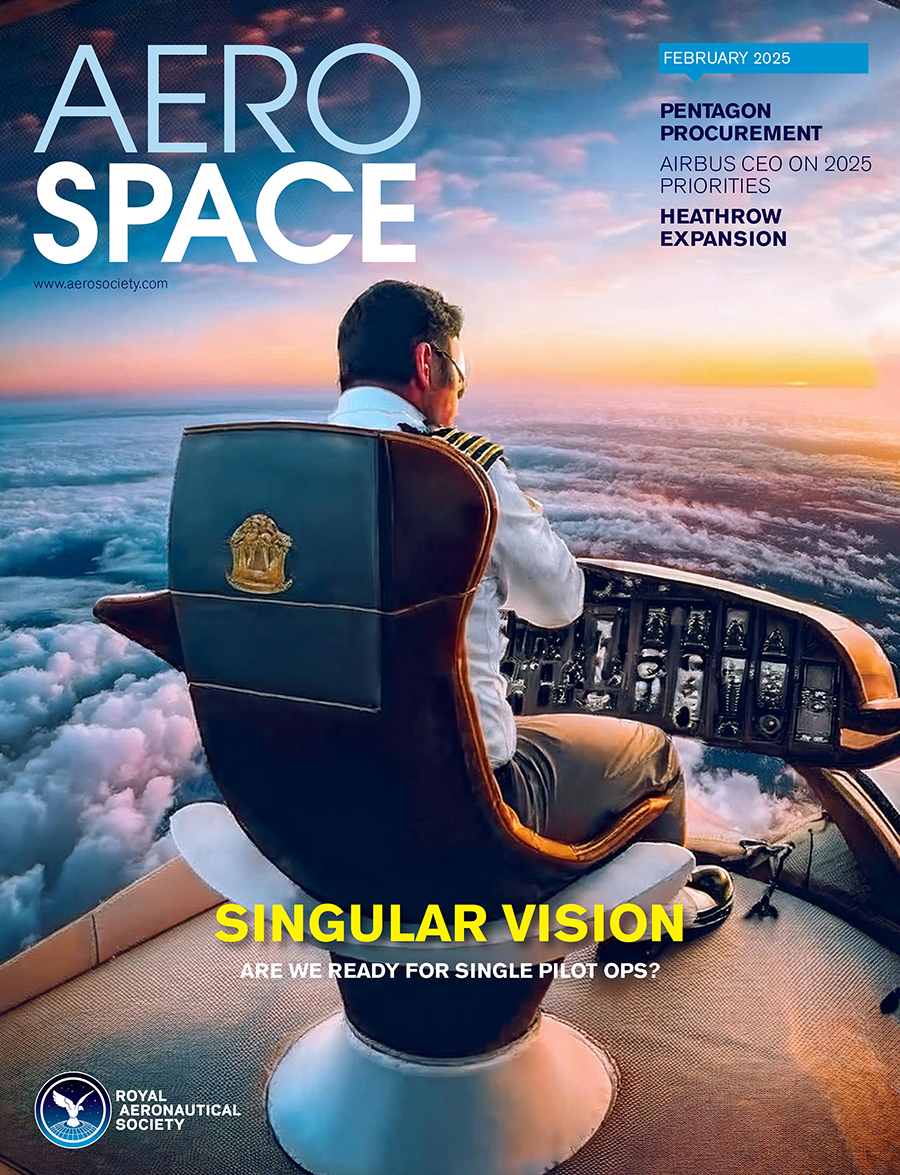
AEROSPACE NOTAM - February 2025
In this podcast series from the Royal Aeronautical Society's monthly AEROSPACE magazine, Editor in Chief Tim Robinson, Deputy Editor Stephen Bridgewater and Features Editor, Jack Richardson analyse recent aviation, aerospace and space news - and preview the latest (February 2025) edition of the magazine. In this episode, we also have the Specialist Group Insight with Seth Moffat, Chair of the RAeS Flight Operations Group along with Steven Green, who discuss the complex and busy airspace around W
Feb 7, • 57:18

An interview with……Don Cameron MBE FRAeS, ballooning pioneer
The pioneer of modern-day hot air ballooning takes us through how he and a group of friends came up with the idea of building western Europe’s first modern hot air balloon from his 1970s basement flat in Bristol, before transforming his hobby into Cameron Balloons which, for over 50 years has become one of the world’s largest and most innovative producers of hot air balloons. Don regards the development of the Roziere balloon, a combination helium and hot air balloon, as one of his greatest achi
Jan 22, • 1:11:19
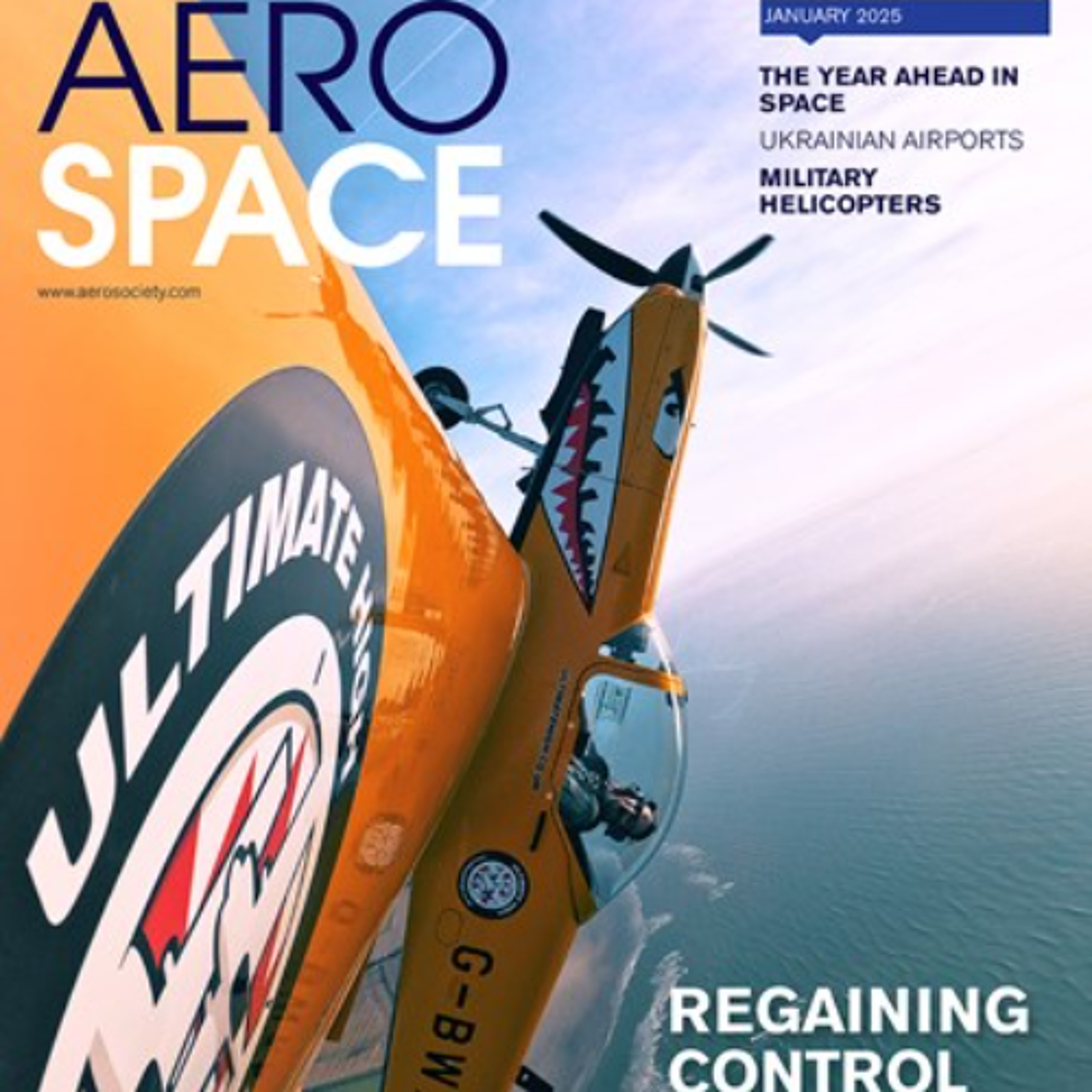
AEROSPACE NOTAM - January 2025
In this podcast series from the Royal Aeronautical Society's monthly AEROSPACE magazine, Editor in Chief Tim Robinson, Deputy Editor Stephen Bridgewater and Features Editor, Jack Richardson analyse recent aviation, aerospace and space news - and preview the latest (January 2025) edition of the magazine. In this episode, we also have Specialist Group Insight with Seth Moffat, Chair of the RAeS Flight Operations Group. (Get in contact with FOG via membership@aerosociety.com) Find out more at www.a
Jan 8, • 1:33:32

AEROSPACE NOTAM - December 2024
In this podcast series from the Royal Aeronautical Society's monthly AEROSPACE magazine, Editor in Chief Tim Robinson, Deputy Editor Stephen Bridgewater and Features Editor, Jack Richardson analyse recent aviation, aerospace and space news - and preview the latest (December 2024) edition of the magazine. In this episode, we also have Specialist Group Insight with Seth Moffat, Chair of the RAeS Flight Operations Group in conversation with Captain Robert Scott and Prof Don Harris, Professor of Hum
Dec 4, 2024 • 1:40:43
An interview with Stewart John FREng FRAeS on engineering for post-war airlines
Former Engineering manager at BOAC and British Airways and Engineering Director at Cathay Pacific, Stewart takes us through the challenges of selecting and keeping aircraft in the air in both the Far East and in the UK. Though starting life as a BOAC apprentice, Stewart spent his early years on secondment to Kuwait Airways and Malaysia-Singapore Airline and he tells us about life living away from home often as the only engineer certified to maintain the airline’s types. Back in the UK, Stewart s
Nov 19, 2024 • 51:33

AEROSPACE NOTAM - November 2024
In this podcast series from the Royal Aeronautical Society's monthly AEROSPACE magazine, Editor in Chief Tim Robinson, Deputy Editor Stephen Bridgewater and Features Editor, Jack Richardson analyse recent aviation, aerospace and space news - and preview the latest (November 2024) edition of the magazine. In this episode, we also have Specialist Group Insight with Seth Moffat, Chair of the RAeS Flight Operations Group in conversation with Captain Robert Scott who discuss the upcoming single pilot
Nov 5, 2024 • 1:19:14

Jackson Smith Interview - celebrating Black History Month 2024
In this special episode celebrating Black History Month 2024 at the Royal Aeronautical Society, we’re thrilled to welcome Jackson Smith, CEO of Fantasy Wings and a passionate advocate for diversity in aviation. We’ll explore his professional journey as a Black pilot, the challenges he has faced, his achievements, and the vital role of representation in the industry. Join us for an inspiring conversation about the impact of diversity in shaping the future of aviation!II
Oct 31, 2024 • 19:43

Elvis Tinago Interview - celebrating Black History Month 2024
In this special episode celebrating Black History Month 2024 at the Royal Aeronautical Society, we’re excited to welcome Elvis Tinago, an aerospace engineer and advocate for diversity and inclusion. We’ll discuss his professional journey as a Black engineer, the challenges he has faced, his achievements, and the importance of representation in the industry. Join us for an engaging conversation about the impact of diverse voices in shaping the future of aerospace!
Oct 31, 2024 • 26:18

National Mentoring Day 2024: alta Mentoring Spotlight
National Mentoring Day is celebrated on 27 October and has put a spotlight on the benefits of mentoring for everyone, no matter who they are or where they are in their career, for the past 10 years. This year, to celebrate, the Royal Aeronautical Society recorded this podcast in which we discuss mentoring with esteemed mentors, Wg Cdr Daniela Nowalski and Judith Milne FRAeS. The Society also welcomed some of the women that Daniela and Judith are currently mentoring to hear all about their experi
Oct 28, 2024 • 1:12:32
An interview with AVM Graham Skinner...a varied and distinguished engineering career in the RAF
Air Vice Marshal Graham Skinner has had a long, varied and distinguished career in the Royal Air Force, specialising in engineering. Passionate about aviation as a young boy, he joined the RAF straight from school. However, his exceptional abilities were soon recognised, resulting in his being sent to Bristol University to undertake a BSc in aeronautical engineering. Despite qualifying as a pilot with the University Air Squadron, Graham opted to continue his career in the Air Force specialising
Oct 9, 2024 • 1:11:37

AEROSPACE NOTAM - October 2024
In this podcast series from the Royal Aeronautical Society's monthly AEROSPACE magazine, Editor in Chief Tim Robinson, Deputy Editor Stephen Bridgewater and Features Editor, Jack Richardson analyse recent aviation, aerospace and space news - and preview the latest (October 2024) edition of the magazine. In this episode, we also have Specialist Group Insight with Seth Moffat, Chair of the RAeS Flight Operations Group in conversation with Captain Alex Fisher who discuss Loss of Control Incidents (
Oct 2, 2024 • 1:18:27
An interview with Katrina Sudell…‘lady engineer’ with BAC in the 1970s
Katrina talks about her university education and early employment before describing how she got into aeronautical engineering. Katrina provides a fascinating insight into what it was like to work as an engineer in the 1970s whilst working in the Spares Department of the British Aircraft Corporation in Preston working on the MRCA (Multi-Role Combat Aircraft) which became the Panavia Tornado. Katrina was able to put to advantage her language and communication skills whilst employed on the spare p
Sep 18, 2024 • 40:24
An interview with Sir Donald Spiers HonFRAeS…from graduate apprentice to MOD Controller of Aircraft
Sir Donald Spiers HonFRAeS talks about his early life before sharing stories from his remarkable career in the aerospace sector including some personal recollections of encounters with politicians. After retirement, Donald continued to share his knowledge and experience in the field of aerospace including serving as President of the Royal Aeronautical Society. Here are the significant points from the interview: • Born 1934 in Wimbledon. • Left Raynes Park County Grammar School aged 18 • National
Sep 18, 2024 • 51:26
An interview with Mike Howlett…flying aircraft for 70 years in the RAF and BOAC
Michael ‘Mike’ Howlett’s talks about his experience of flying successive generations of aircraft during his career as a pilot spanning over 70 years. Having learnt to fly on a Tiger Moth bi-plane, he flew first-generation jet fighters (the Meteor and Vampire), then the first generation long-haul, land-based piston-engine airliners in the form of the Boeing Stratocruiser. This was followed by flying the first of the long-range, swept-wing jets, the Boeing 707, and then the first of the ultra-lar
Sep 18, 2024 • 52:30
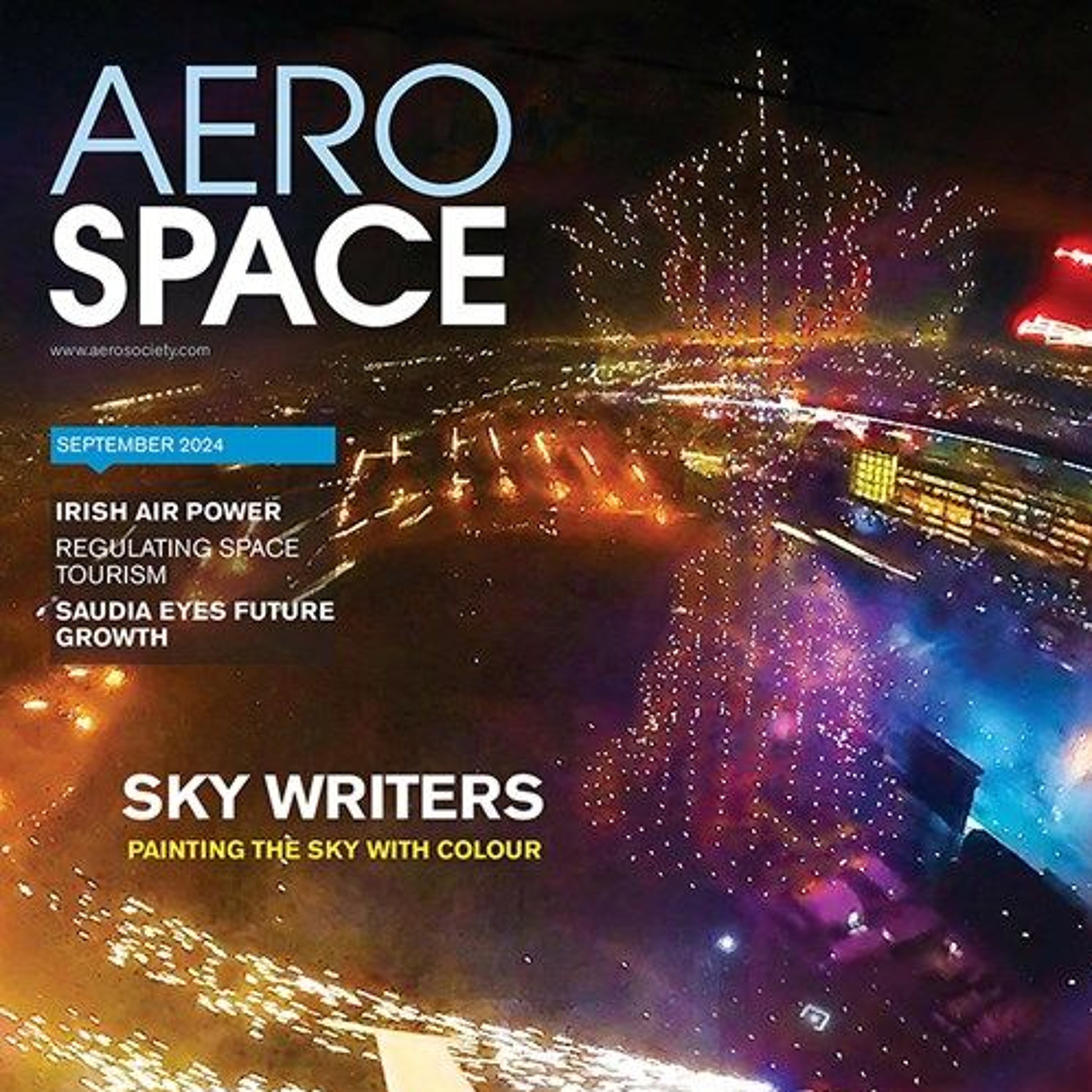
AEROSPACE NOTAM - September 2024
In this podcast series from the Royal Aeronautical Society's monthly AEROSPACE magazine, Editor in Chief Tim Robinson, Deputy Editor Stephen Bridgewater and Features Editor Bella Richards analyse recent aviation, aerospace and space news - and preview the latest (August 2024) edition of the magazine. In this episode, we also have Specialist Group Insight with Seth Moffat, Chair of the RAeS Flight Operations Group in conversation with Dr. Sunjoo Advani who discuss Upset Prevention and Recovery Tr
Sep 5, 2024 • 1:08:48
An interview with...Sir Harry Garner at the RAE and beyond
The First World War took Garner away from astronomy into ‘one of the most lovely places you could possibly imagine’- the Royal Aircraft Establishment. Here he describes designing experimental flying projects, including making measurements of drag using prop stop glides. He also describes some of the characters he worked with, including AA Griffiths during the period Griffiths was working on glass fibres. He was transferred to Felixstowe in time to work on the Schneider Trophy, where he pioneer
Sep 3, 2024 • 19:16
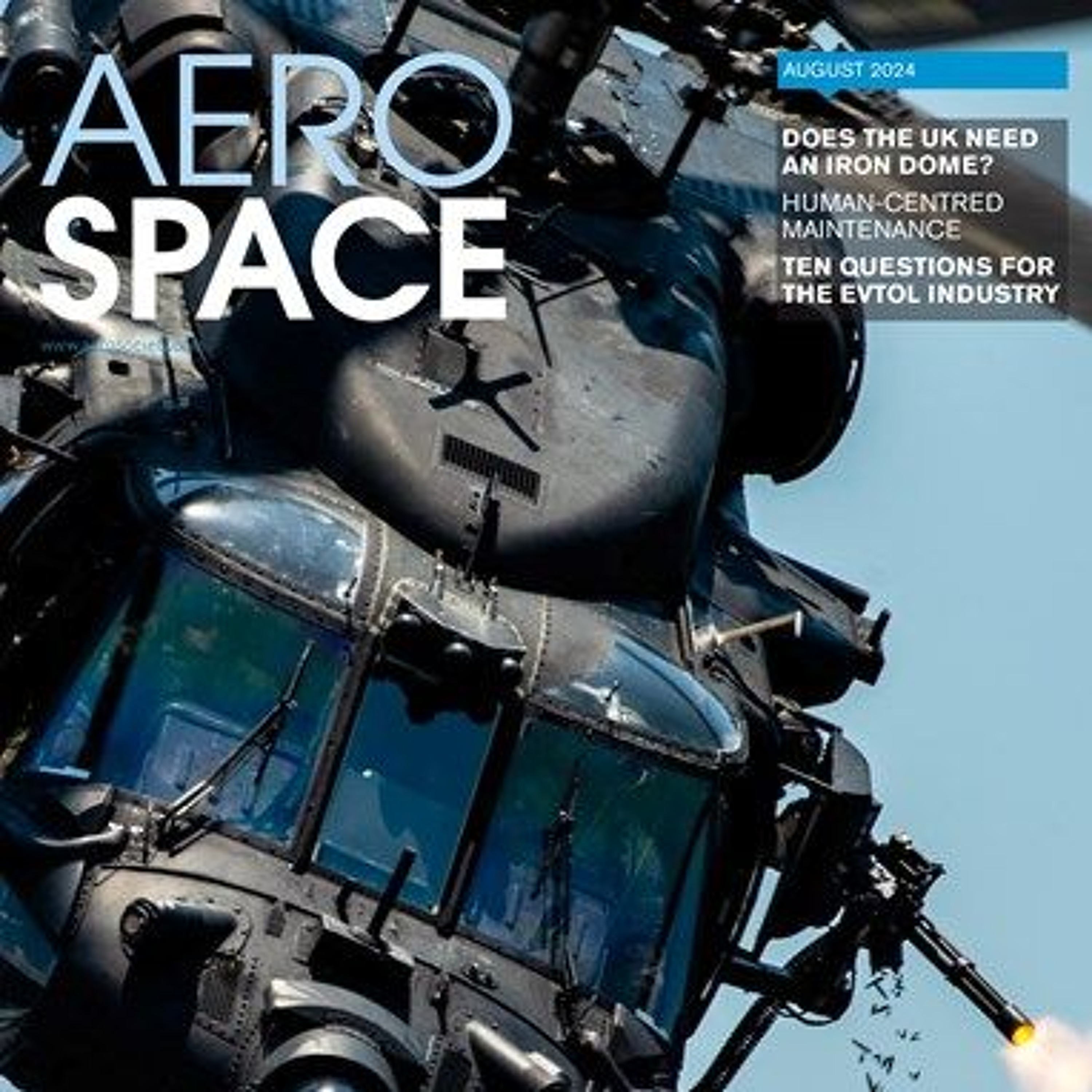
AEROSPACE NOTAM - August 2024
In this podcast series from the Royal Aeronautical Society's monthly AEROSPACE magazine, Editor in Chief Tim Robinson, Deputy Editor Stephen Bridgewater and Features Editor Bella Richards analyse recent aviation, aerospace and space news - and preview the latest (August 2024) edition of the magazine. In this episode, we also have Specialist Group Insight with Seth Moffat, Chair of the RAeS Flight Operations Group in conversation with Sten Rossby who discuss the GPS jamming and spoofing threat to
Aug 5, 2024 • 1:07:50
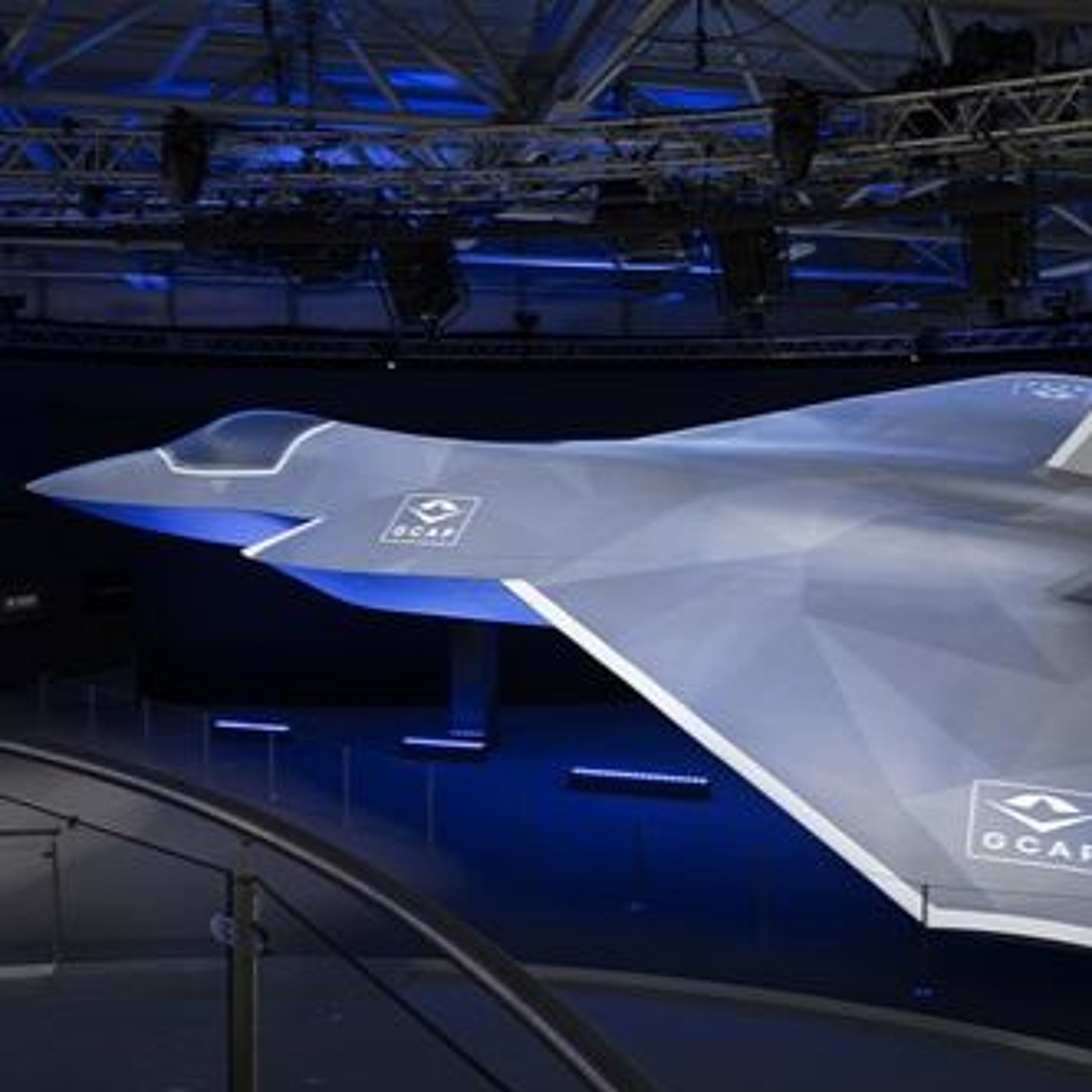
AEROSPACE NOTAM - Farnborough Air Show 2024
AEROSPACE Editor in Chief Tim Robinson, Deputy Editor Stephen Bridgewater and Features Editor Bella Richards sum up the 2024 Farnborough Air Show. Plus special guests Angelika Kochajkiewicz and Aleena Joshy from the RAeS Solent Branch. Our thanks to the Farnborough Air Sciences Trust (FAST) Museum for arranging access to this recording location.
Jul 25, 2024 • 23:11
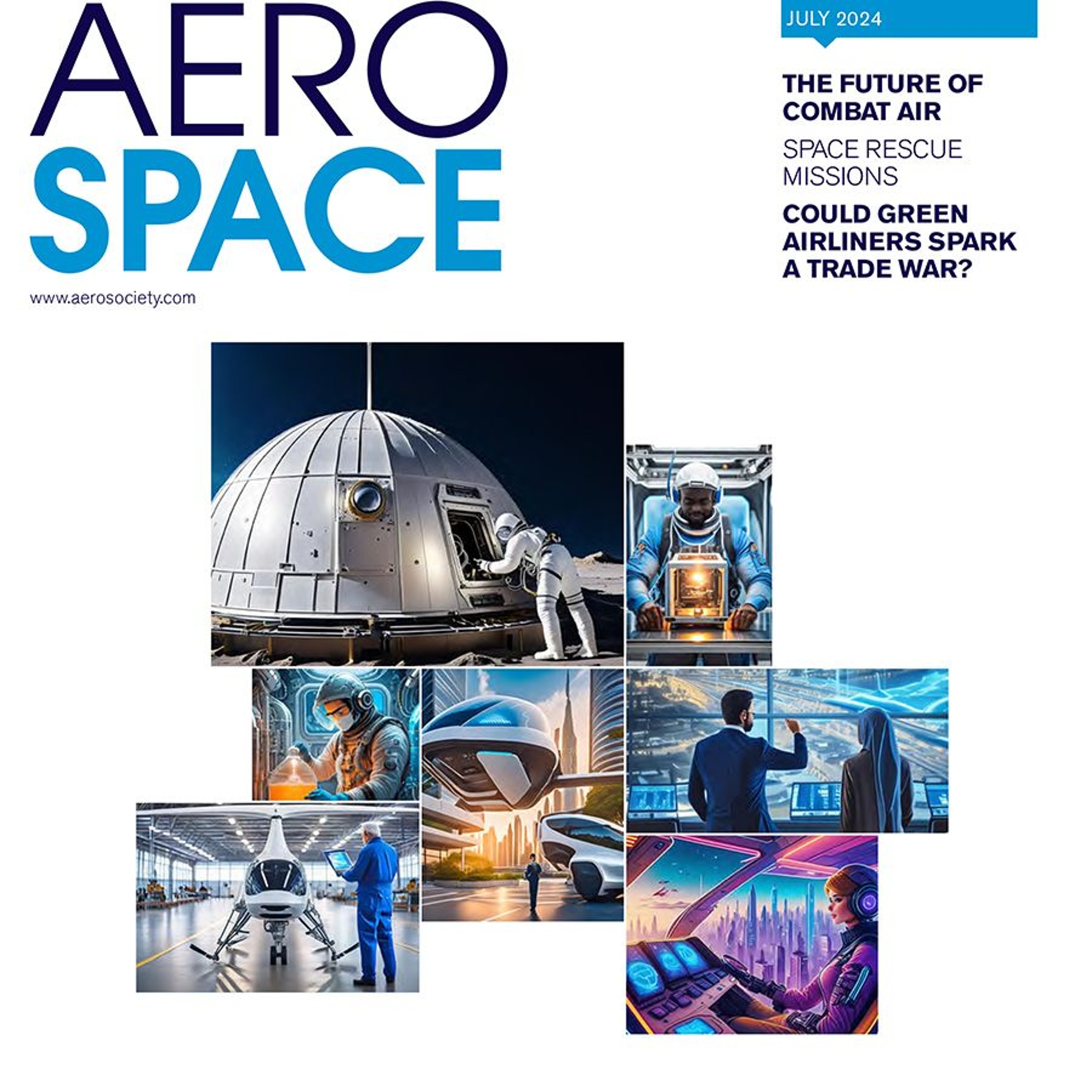
AEROSPACE NOTAM - July 2024
In this podcast series from the Royal Aeronautical Society's monthly AEROSPACE magazine, Editor in Chief Tim Robinson, Deputy Editor Stephen Bridgewater and Features Editor Bella Richards analyse recent aviation, aerospace and space news - and preview the next (July 2024) edition of the magazine. New this month, is Specialist Group Insight with Seth Moffat, Chair of the RAeS Flight Operations Group. (Get in contact with FOG via membership@aerosociety.com) Find out more at www.aerosociety.com
Jul 3, 2024 • 1:01:45
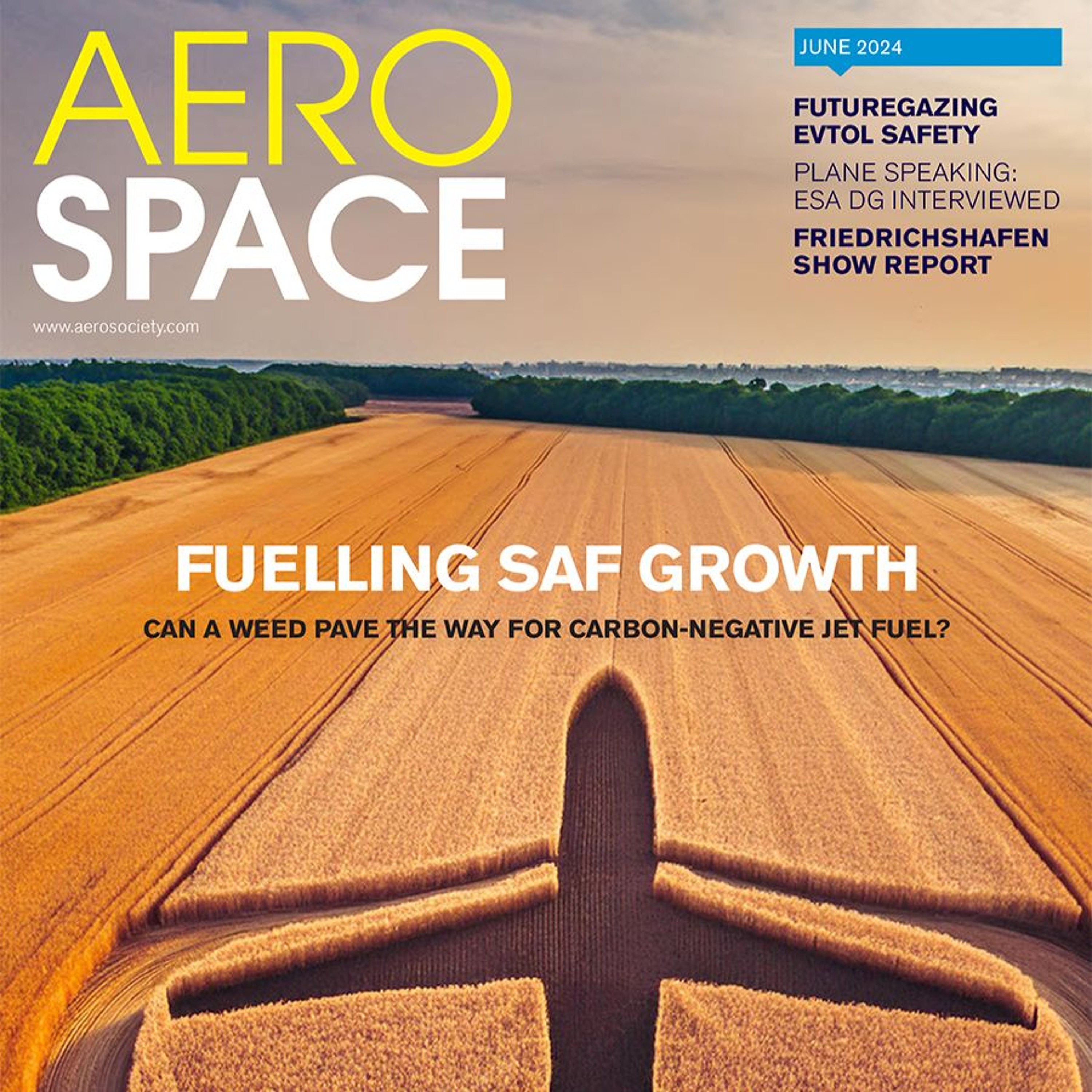
AEROSPACE NOTAM - June 2024
In this podcast series from the Royal Aeronautical Society's monthly AEROSPACE magazine, Editor in Chief Tim Robinson, Deputy Editor Stephen Bridgewater and Features Editor Bella Richards analyse recent aviation, aerospace and space news - and preview the next (June 2024) edition of the magazine. Special guest this episode is new RAeS President David Chinn. Find out more at www.aerosociety.com
May 31, 2024 • 1:38:43
Classic Podcasts - Triumph Tears : British Aviation from 1945-75 by Peter Reese
In 1945 confidence in British aviation was sky-high. Yet decades later, the industry had not lived up to its potential. What happened? The years that followed the war saw the Brabazon Committee issued flawed proposals for civil aviation planning. Enforced cancellations restricted the advancement of military aircraft, compounded later on by Defence Minister Duncan Sandys abandoning aircraft to fixate solely on missiles. Commercially, Britain's small and neglected domestic market hindered the deve
May 15, 2024 • 50:33
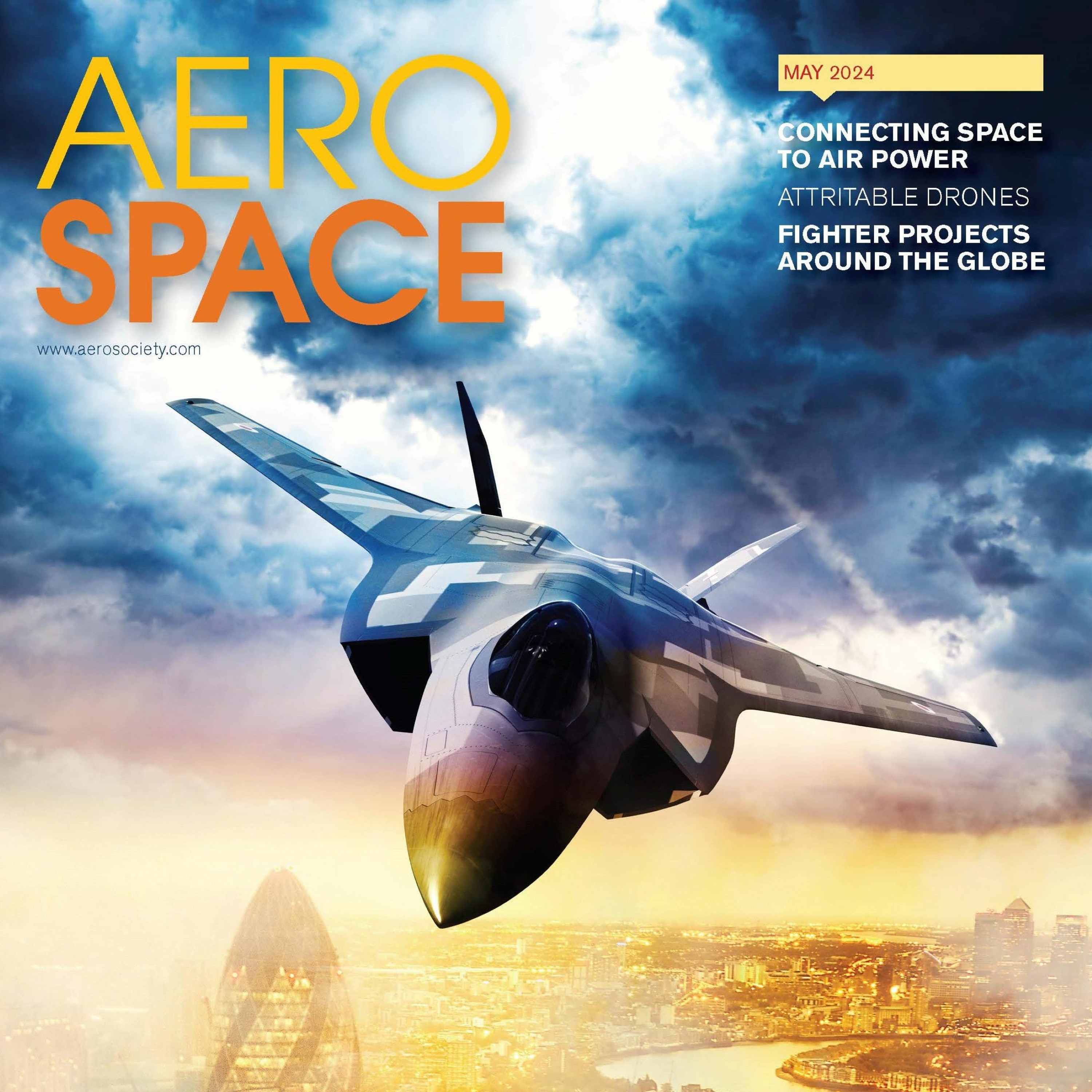
AEROSPACE NOTAM - May 2024
In this podcast series from the Royal Aeronautical Society's monthly AEROSPACE magazine, Editor in Chief Tim Robinson, Deputy Editor Stephen Bridgewater and Features Editor Bella Richards analyse recent aviation, aerospace and space news - and preview the next (May 2024) edition of the magazine. Special guest this episode is outgoing RAeS President Kerissa Khan. Find out more at www.aerosociety.com
Apr 30, 2024 • 1:15:25
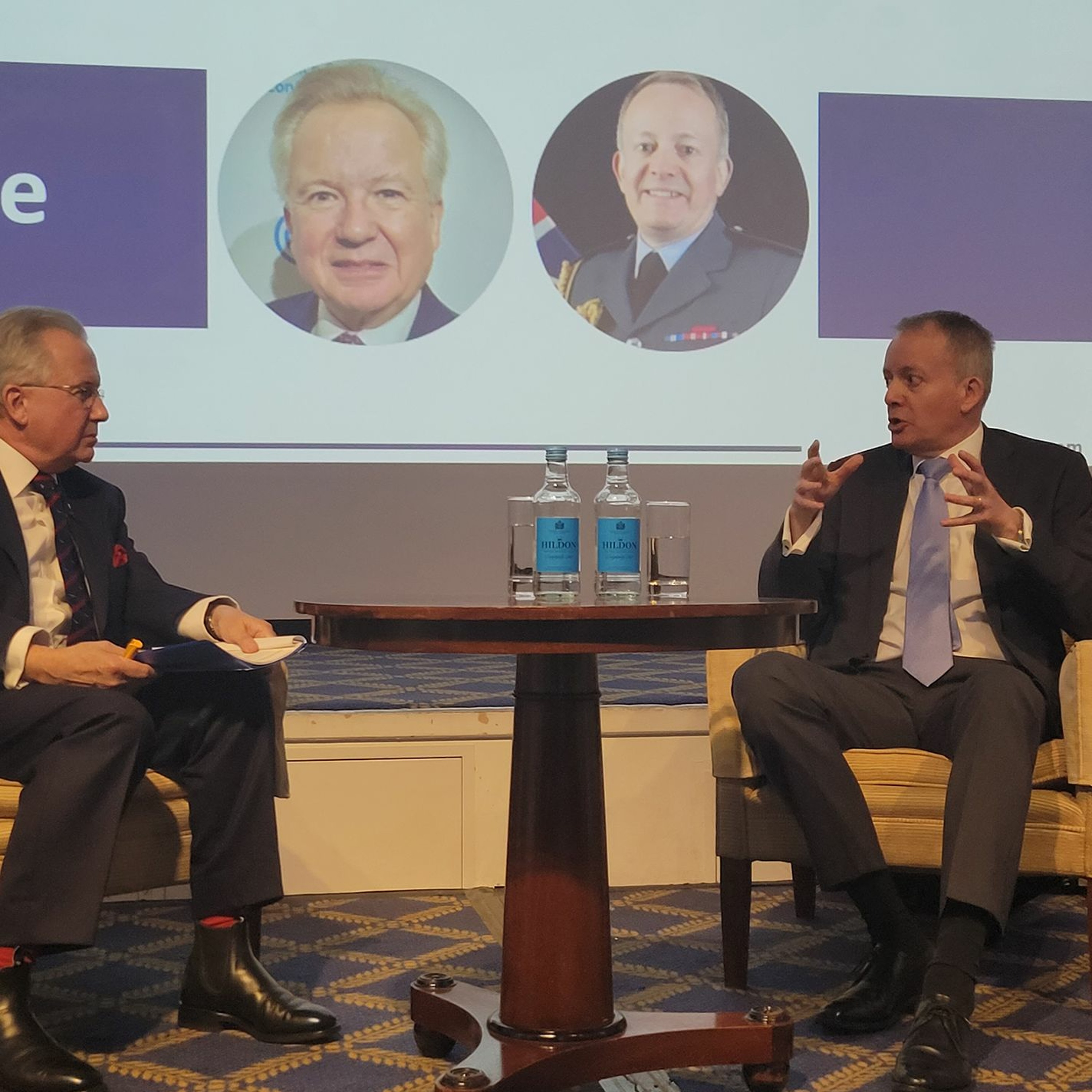
RAeS Corporate Partner Briefing: Fireside Chat with Air Chief Marshal Sir Richard Knighton RAF
Listen to the Royal Air Force, Chief of the Air Staff, Air Chief Marshal Sir Richard Knighton in conversation with Air Marshal Sir Christopher Harper at a Royal Aeronautical Society Corporate Partners briefing, held on 9 April.
Apr 24, 2024 • 41:42
Rewind – The Schneider Trophy by W. Cox
The ultimate test of the great powers’ pilots, aircraft and powerplants in the interwar period, the Schneider Trophy seaplane contest pushed forward aviation design to new heights and directly led to the Spitfire and Merlin engine. W. Cox, a member of the trophy winning Supermarine team, takes us through each contest, starting with the pre-World War II contests and highlights how the key technological developments in aircraft design were represented in the race. Please note, due to the age of t
Apr 10, 2024 • 1:12:55
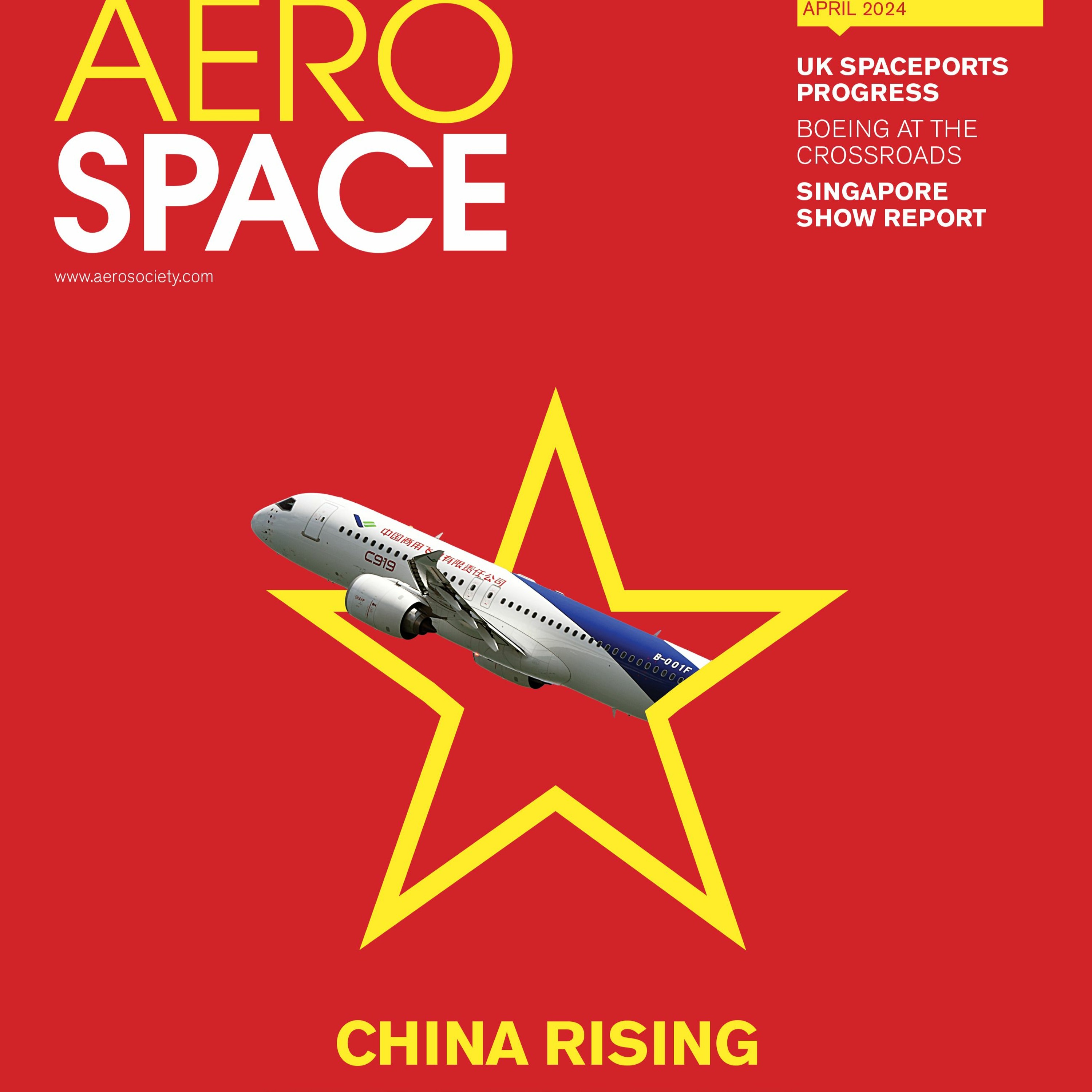
AEROSPACE NOTAM - April 2024
In this podcast series from the Royal Aeronautical Society's monthly AEROSPACE magazine, Editor in Chief Tim Robinson, Deputy Editor Stephen Bridgewater and Features Editor Bella Richards analyse recent aviation, aerospace and space news - and preview the next (April 2024) edition of the magazine. Find out more at www.aerosociety.com
Mar 29, 2024 • 58:06
Classic Lectures - The Contribution of Power Jets Ltd to Jet Propulsion by G. B. R. Feilden
After being redeployed from Unilever to a small firm just outside Rugby in May 1940, Bob Feilden played a key role in the development of Whittle’s jet engine, working with his colleagues to transform the jet from theory into practice. Starting with the early history of Whittle’s jet engine and its early testing, Feilden takes us inside the firm to give us a first-hand account of the jet’s flight trials, in the Gloster E28/39 and how they overcame the technical challenges to develop the W1 engin
Mar 7, 2024 • 1:13:26
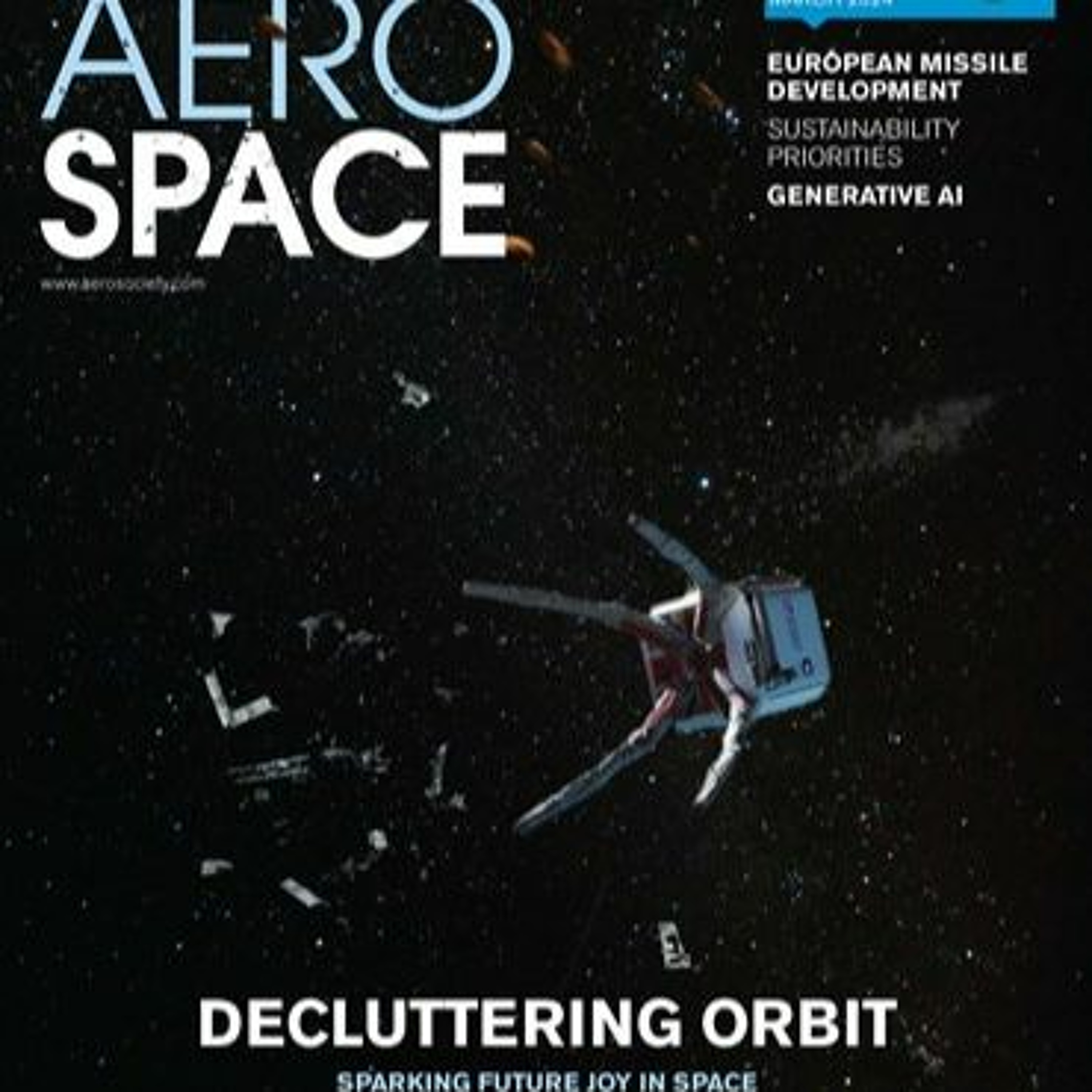
AEROSPACE NOTAM - March 2024
In this podcast series from the Royal Aeronautical Society's monthly AEROSPACE magazine, Editor in Chief Tim Robinson and Deputy Editor Stephen Bridgewater analyse recent aviation, aerospace and spaceflight news - and preview the next (March 2024) edition of the magazine. Find out more at www.aerosociety.com
Mar 1, 2024 • 47:13
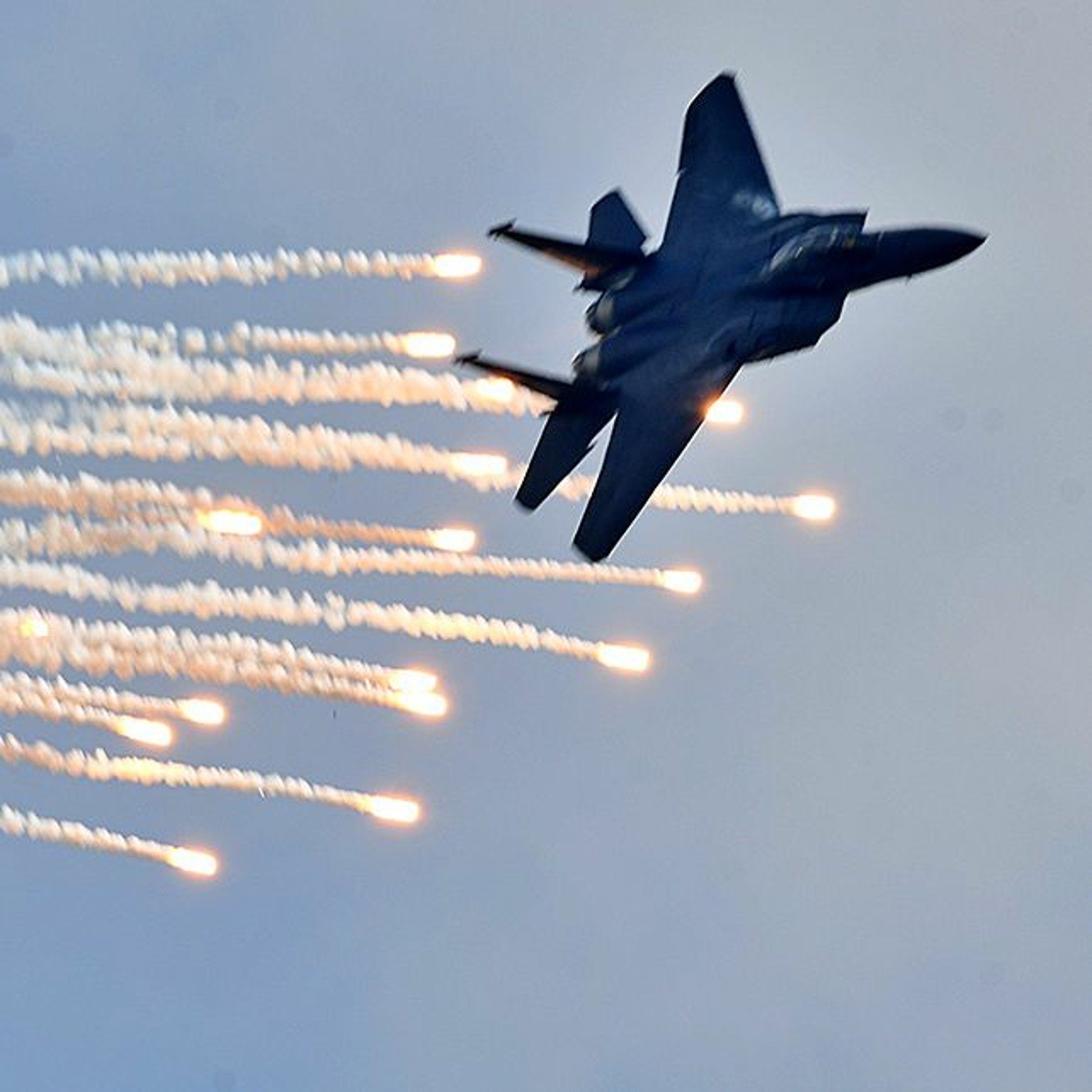
AEROSPACE NOTAM Singapore 2024
AEROSPACE Editor-in-Chief Tim Robinson and Deputy Editor Stephen Bridgewater sum up the 2024 Singapore Air Show
Feb 23, 2024 • 40:23
An interview with the civil pioneers….. life flying the HP.42 and seaplanes for Imperial Airway
RAF turned Imperial Airways pilot, Captain Parker, gives us a flavour of what life was like working for Imperial in the 1930s. He tells us about operating the Handley Page HP.42 and recounts a story of being stranded in the desert after an aircraft was forced down. After flying landplanes he was transferred to seaplanes and gives us insights into life operating flying boats before and after the Second World War. Captain Parker was interviewed by David Jones in around 1975. This recording is part
Feb 14, 2024 • 13:34
Interview with the civil pioneers.. the first Brisbane-Singapore route to post-war Qantas management
Captain Crowther operated the first service from Brisbane to Darwin and then onto Singapore in 1934 and recalls life flying a DH.86 on that route. He also describes the time when he was transferred to flying boats, including the period he flew between Australia and Ceylon during World War II. Crowther also gives us a view of managing the 'Kangaroo Route' in the early post-war years from his position as their Manager of the Western Region. Captain Crowther was interviewed by David Jones in aro
Feb 14, 2024 • 18:02
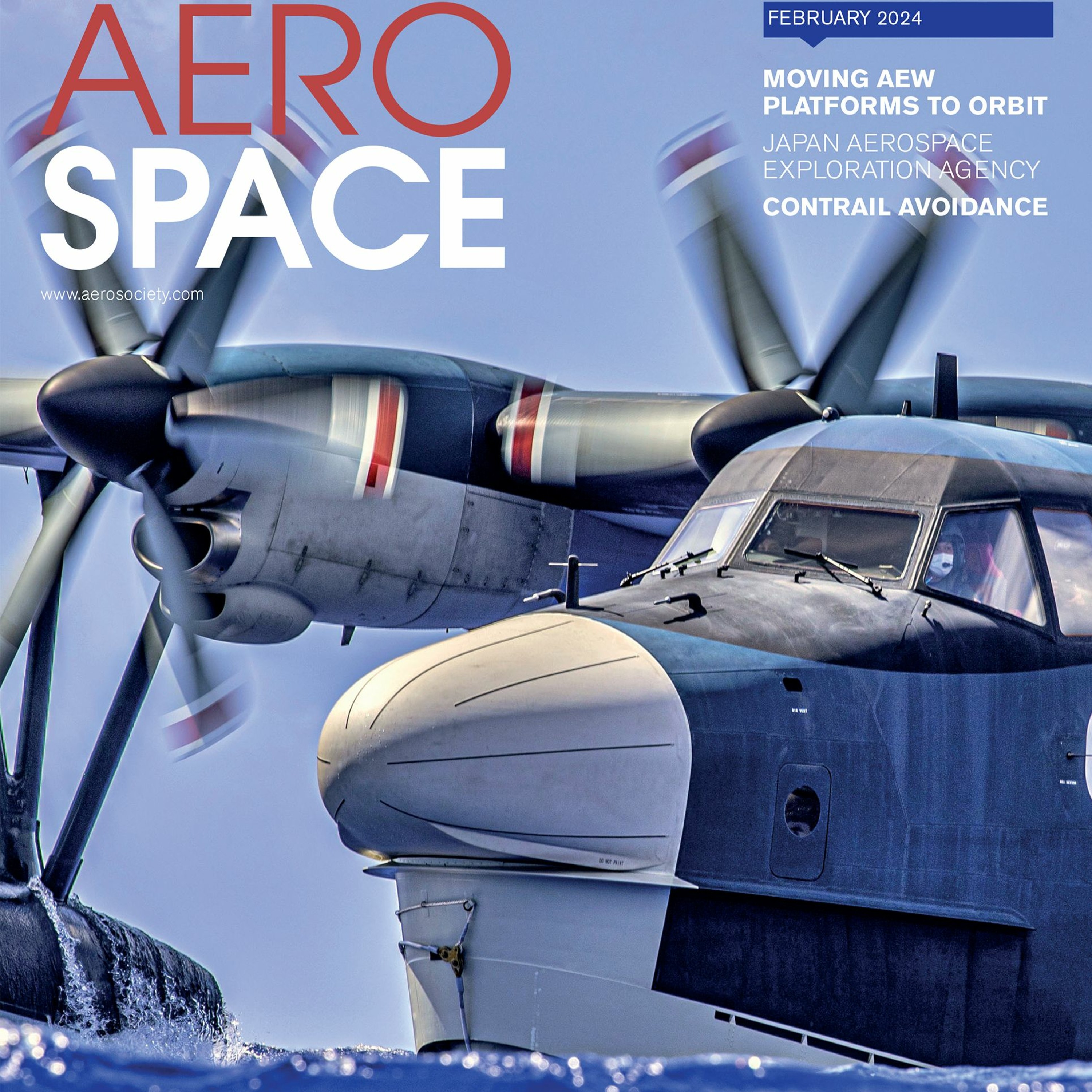
AEROSPACE NOTAM - February 2024
In this podcast series from the Royal Aeronautical Society's monthly AEROSPACE magazine, Editor in Chief Tim Robinson, Deputy Editor Stephen Bridgewater and Features Editor Bella Richards analyse recent aviation, aerospace and space news - and preview the next (January 2024) edition of the magazine. Find out more at www.aerosociety.com
Jan 30, 2024 • 1:12:32
Rewind - Fair Names & Famous - Naming of British Aircraft & Engines by Gordon T. Wansbrough-White
What’s in a name? This lecture takes us through the evolving picture of how manufacturers were required to name their military aircraft and engines and shows how different aircraft followed and deviated from the Ministry’s requirements. Gordon T. Wansbrough-White FRAeS addressed a meeting organised by the Royal Aeronautical Society’s Historical Group on 28 November 1966. The lecture was introduced by J. L. Nayler FRAeS FAIAA, the recording was digitised thanks to a grant from the RAeS Foundat
Jan 17, 2024 • 1:22:41
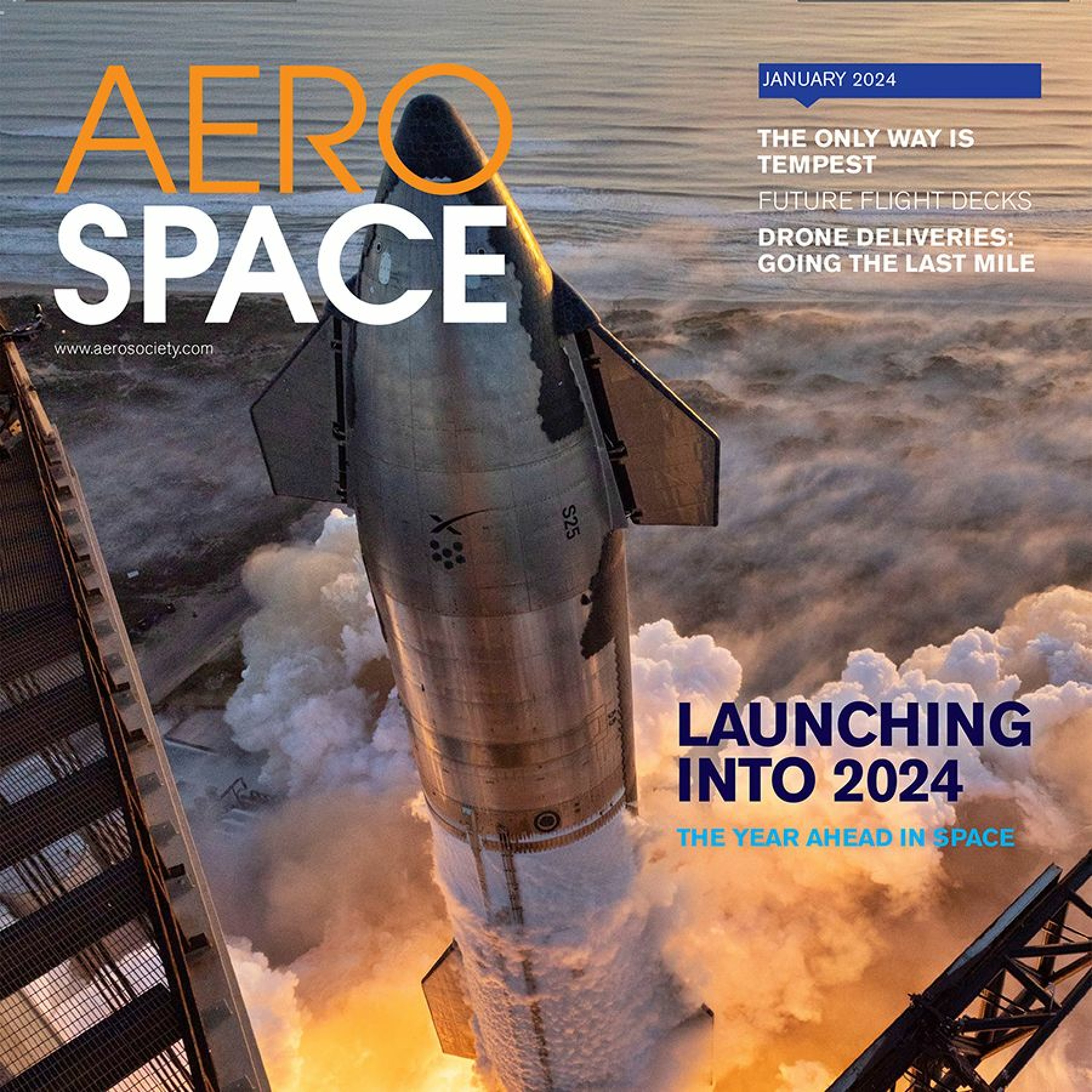
AEROSPACE NOTAM - January 2024
In this podcast series from the Royal Aeronautical Society's monthly AEROSPACE magazine, Editor in Chief Tim Robinson, Deputy Editor Stephen Bridgewater and Features Editor Bella Richards analyse recent aviation, aerospace and space news - and preview the next (January 2024) edition of the magazine. Find out more at www.aerosociety.com
Jan 2, 2024 • 1:01:10
Classic Lecture: The invention of the aeroplane near Scarborough at the time of Trafalgar
“Oh come on, surely it was the Wright Brothers who did this!” In his lecture Dr John Ackroyd FRAeS tries to persuade us that Sir George Cayley, not the Wright Brothers, defined the concepts behind the aeroplane and flew it in 1804. After exploring Sir George’s early life and some of his non-aeronautical designs of early tractors, engines and artificial hands, Dr Ackroyd explores Cayley’s key breakthrough, his discovery in 1799 that flapping wings would not lead to flight and what was needed was
Dec 27, 2023 • 1:07:51
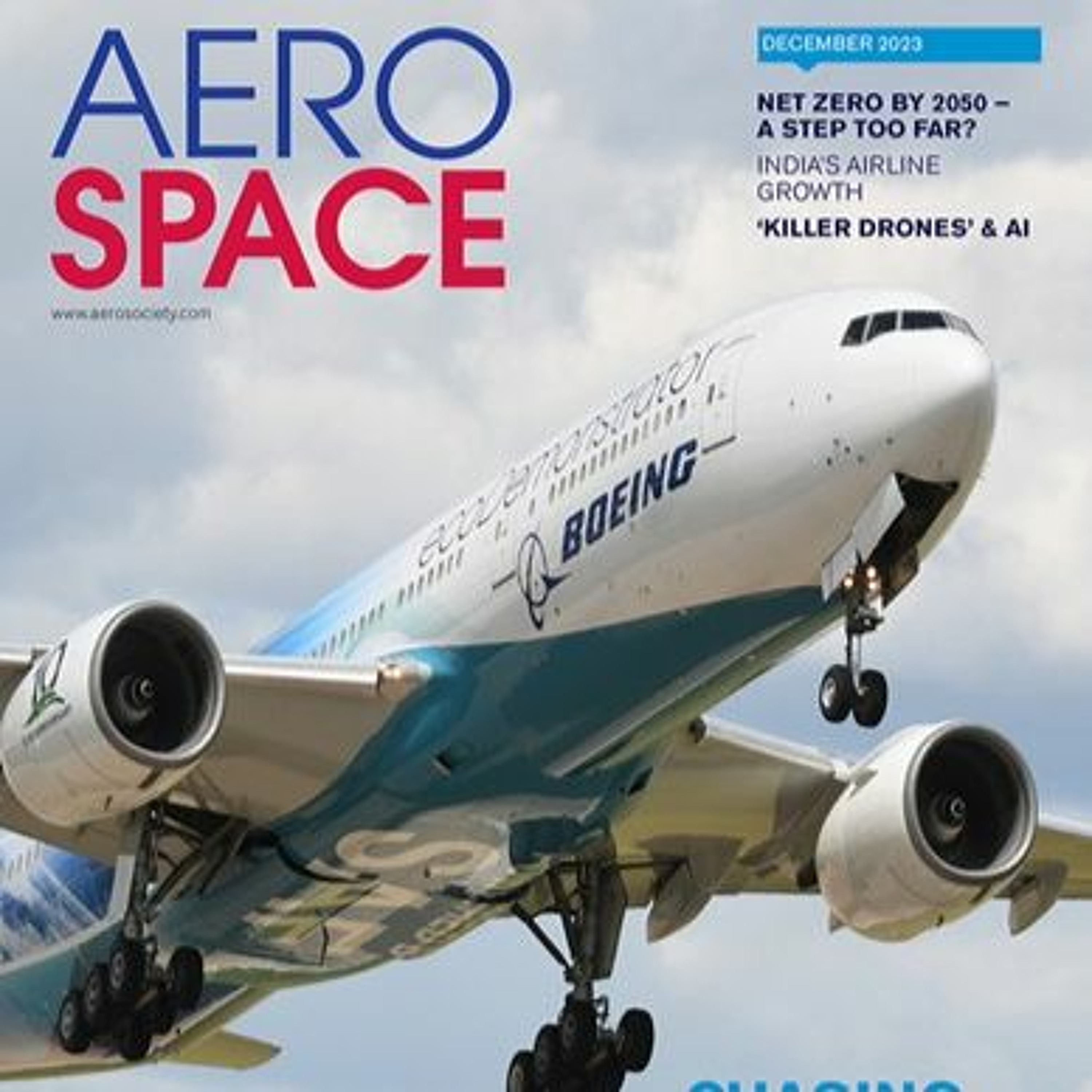
AEROSPACE NOTAM - December 2023
In this podcast series from the Royal Aeronautical Society's monthly AEROSPACE magazine, Editor in Chief Tim Robinson, Deputy Editor Stephen Bridgewater and Features Editor Bella Richards analyse recent aviation, aerospace and space news - and preview the next (December 2023) edition of the magazine. Find out more at www.aerosociety.com
Nov 28, 2023 • 46:52
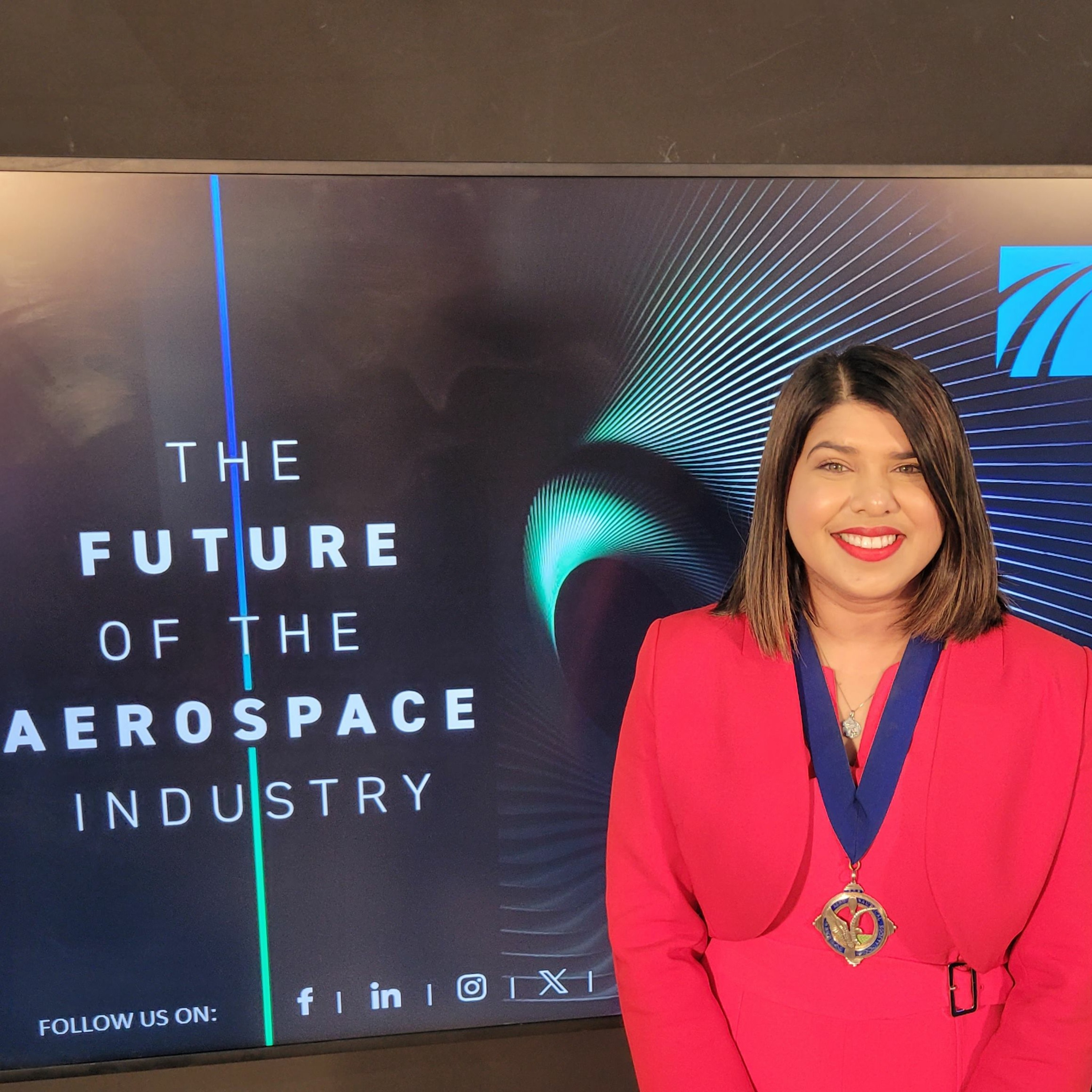
AEROSPACE NOTAM Dubai 2023
AEROSPACE Editor-in-Chief Tim Robinson and Features Editor Bella Richards sum up the 2023 Dubai Air Show and speak to special guest Royal Aeronautical Society President, Kerissa Khan.
Nov 17, 2023 • 44:08
An interview with the civil pioneers… Kingsford Smith & Australian National Airways between the wars
After service in World War I, Capt Allan moved to the other side of the world and joined the fledgling Australian National Airways. He retells stories of his time with the airline, including his experiences of flying Avro 10s between Australian cities, and shares his opinions of the company’s two guiding lights: Charles Kingsford Smith and Charles Ulm. Allan went onto play a part in many of the key events in spreading civil aviation across the southern hemisphere, including pioneering airmail f
Nov 14, 2023 • 50:58
An interview with the civil pioneers….. Flying for Qantas between the wars by Captain Russell Tapp
Tapp joined Qantas when it employed 25 people, including just seven pilots. His path to Australia started after service with the Royal Air Force and a spell promoting the Westland Widgeon light aircraft. From there Captain Tapp heard about Qantas, wrote a letter to Hudson Fysh and, after a test with de Havilland, were off to Australia in 1928. He gives us a flavour of flying for the company in those years, tells us about the characters who worked for the airline, including engineer Arthur Baird,
Nov 14, 2023 • 29:46
An interview with the civil pioneers….. Creating Australian airfields by Lt Cdr A. D. S. Murray
Aircraft not only need to fly, but also need to land safely. A. D. S. Murray spent his early years in Australia surveying the country or emergency and permanent landing grounds. In this interview, he describes some of the challenges he faced and characters he met during this part of his career.
Nov 14, 2023 • 14:46
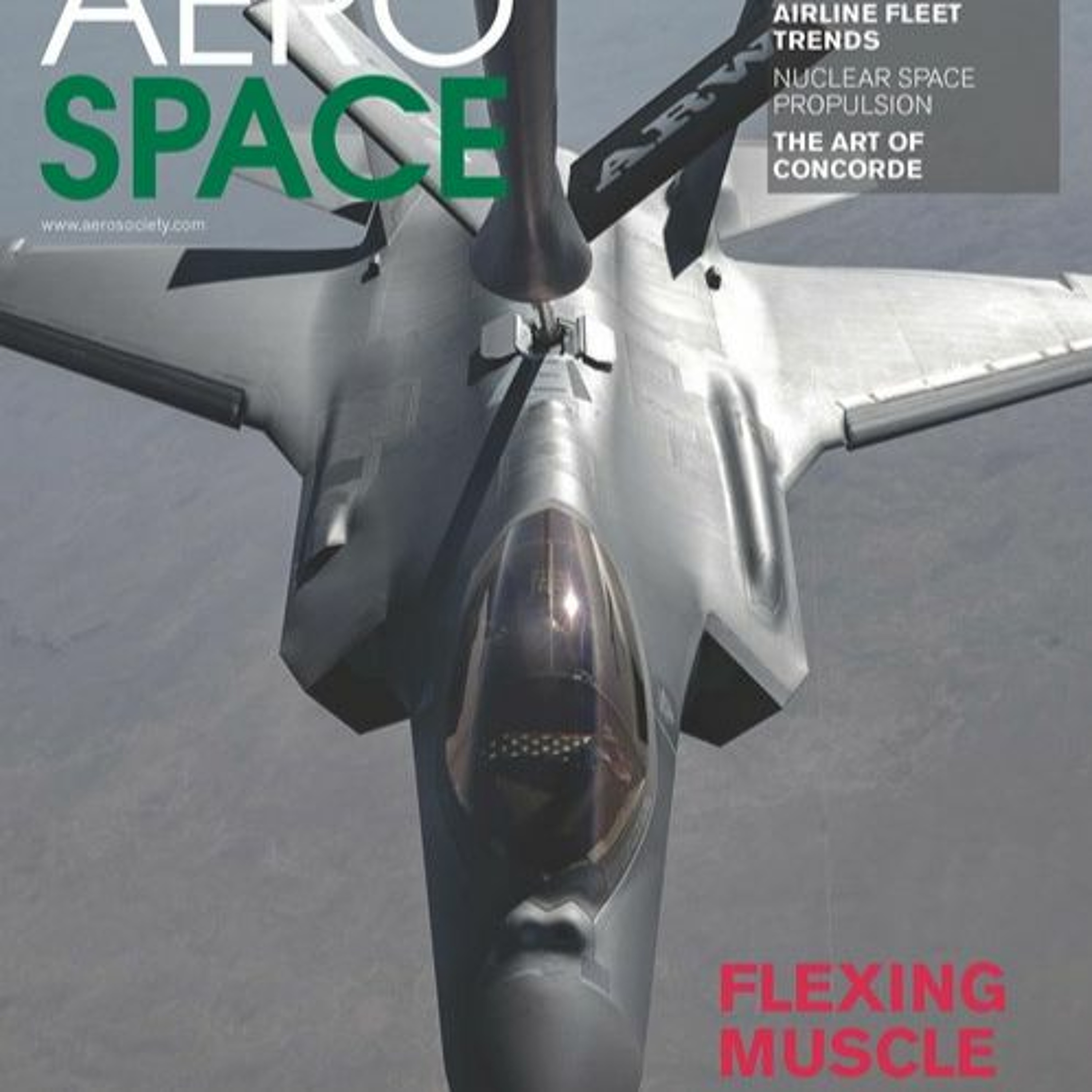
AEROSPACE NOTAM - November 2023
In this podcast series from the Royal Aeronautical Society's monthly AEROSPACE magazine, Editor in Chief Tim Robinson, Deputy Editor Stephen Bridgewater and Features Editor Bella Richards analyse recent aviation, aerospace and space news - and preview the next (November 2023) edition of the magazine. Find out more at www.aerosociety.com
Oct 31, 2023 • 52:05
Rewind – Aeronautical Aspects of the Spanish Civil War by Brian Armstrong MRAeS
The Spanish Civil War came at a significant period in the development of aviation and foreshadowed aerial warfare in the Second World War. But how much was the Royal Air Force taking notice of what was happening on the continent and what lessons did they learn? In this lecture, Brian Armstrong challenges the impression that those in command of Britain’s air forces were blithely ignorant of the Spanish Civil War. He takes us into the world of British air intelligence to explore their work and th
Oct 10, 2023 • 1:53:52
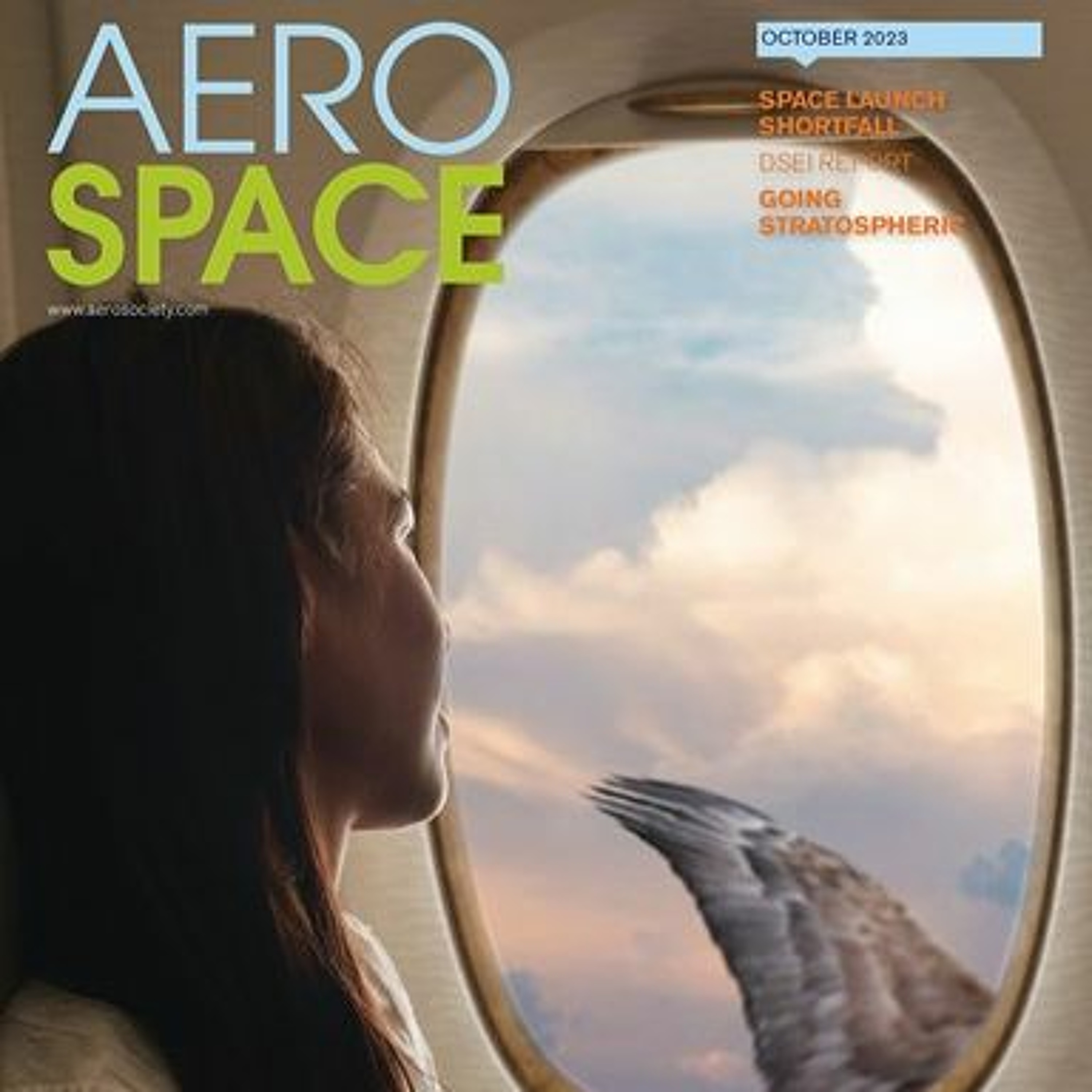
AEROSPACE NOTAM - October 2023
In this podcast series from the Royal Aeronautical Society's monthly AEROSPACE magazine, Editor in Chief Tim Robinson, Deputy Editor Stephen Bridgewater and Features Editor Bella Richards analyse recent aviation, aerospace and space news - and preview the next (October 2023) edition of the magazine. Find out more at www.aerosociety.com
Sep 29, 2023 • 36:38
An interview with the civil pioneers….. Flying for Imperial Airways in the 1930s and 1940s
After training with the RAF just after the First World War and service in India, Capt Mollard made his way to Imperial Airways, and tells us about life at Croydon Airport and the London to Paris route. In 1929 Mollard was transferred to Cairo and, as Imperial flew further towards Australia, so did he. Here he co-piloted Captain Alger in the hair-raising first experimental mail flight to Australia in 1931 and delivered one of the first Armstrong-Whitworth Atalantas that would serve on the soon to
Sep 11, 2023 • 23:00
An interview with the civil pioneers... Karachi to New Zealand Catalina Flying Boat survey flight
The captain of the 1937 flying boat survey flight from Karachi to New Zealand explains how he became involved in the historic event and how they prepared for the flight, before retelling the story of the eventful trip. He also discusses the warm welcome they received in New Zealand and further afield. Captain Burgess was interviewed by David Jones in around 1975. This recording is part of the AeroSociety Podcast series, Development of Civil Aviation from the UK to Australasia, it was digitised
Sep 11, 2023 • 12:09
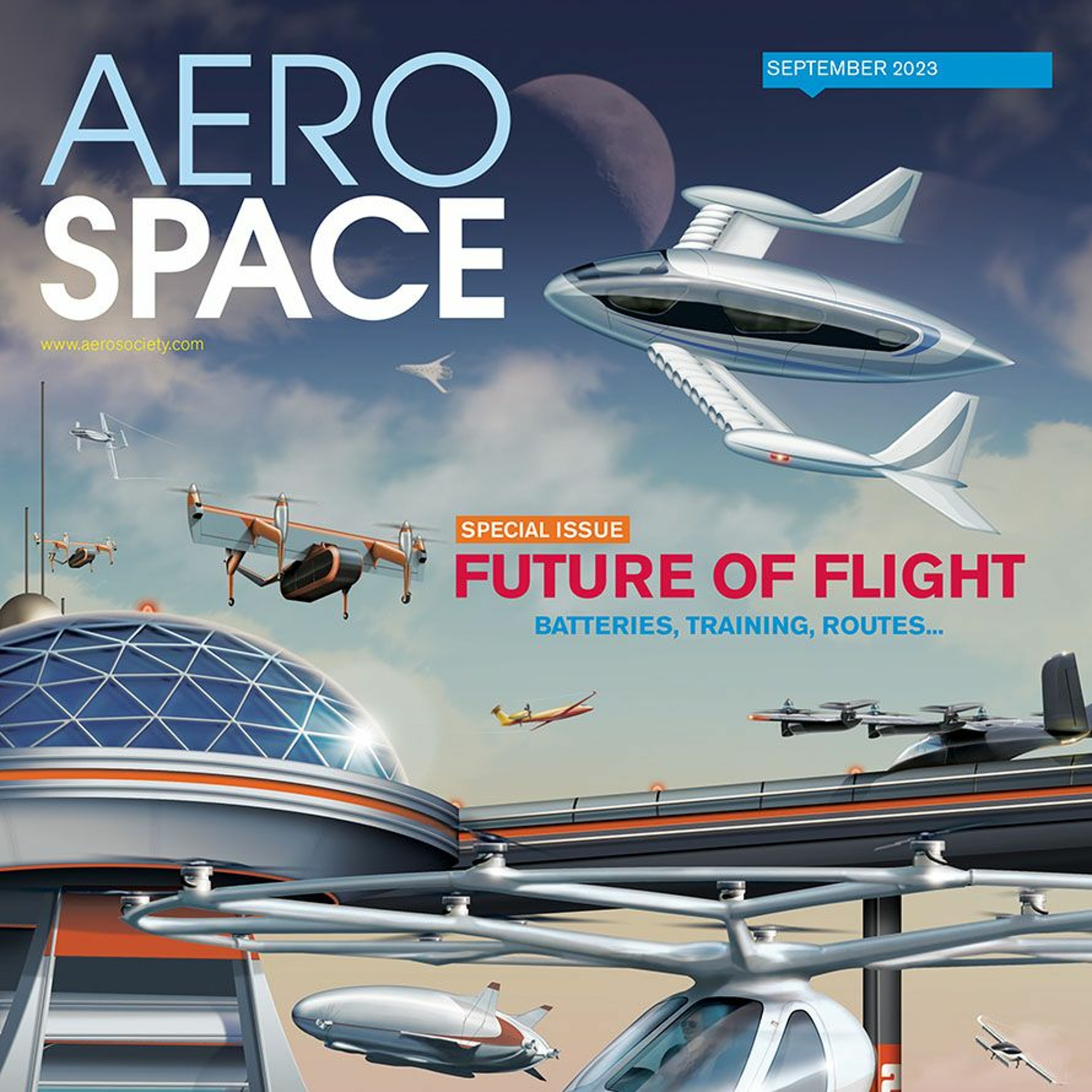
AEROSPACE NOTAM - September 2023
In this podcast series from the Royal Aeronautical Society's monthly AEROSPACE magazine, Editor in Chief Tim Robinson and Deputy Editor Stephen Bridgewater analyse recent aviation, aerospace and space news - and preview the next (September 2023) edition of the magazine. Find out more at www.aerosociety.com
Aug 29, 2023 • 54:32
An interview with the civil pioneers…. early days of the Karachi to Singapore route
Captain Egglesfield commanded some of the earliest commercial flights over India and the Far East including the first scheduled service from Karachi to Calcutta in July 1933 in an Armstrong Whitworth AW.15 Atalanta, the first scheduled Karachi to Rangoon service, and the second survey flights on flying boats between Karachi and Singapore. In this interview he tells us about these pioneering flights, the aircraft he flew, the challenges he faced and gives us a flavour of what life was like flying
Aug 16, 2023 • 27:45
An interview with the civil pioneers…. first experimental civil flight between Karachi and Darwin
In April 1931 Captain Alger was asked to fly the first experimental airmail flight between Karachi and Darwin in his de Havilland DH.66, the City of Cairo. In this interview Alger retells the story of this eventful flight. Captain H. W. C. Alger was interviewed by David Jones on 8 June 1975. This recording is part of the AeroSociety Podcast series, Development of Civil Aviation from the UK to Australasia, it was digitised thanks to a grant from the RAeS Foundation and the podcast was edited by
Aug 16, 2023 • 15:07
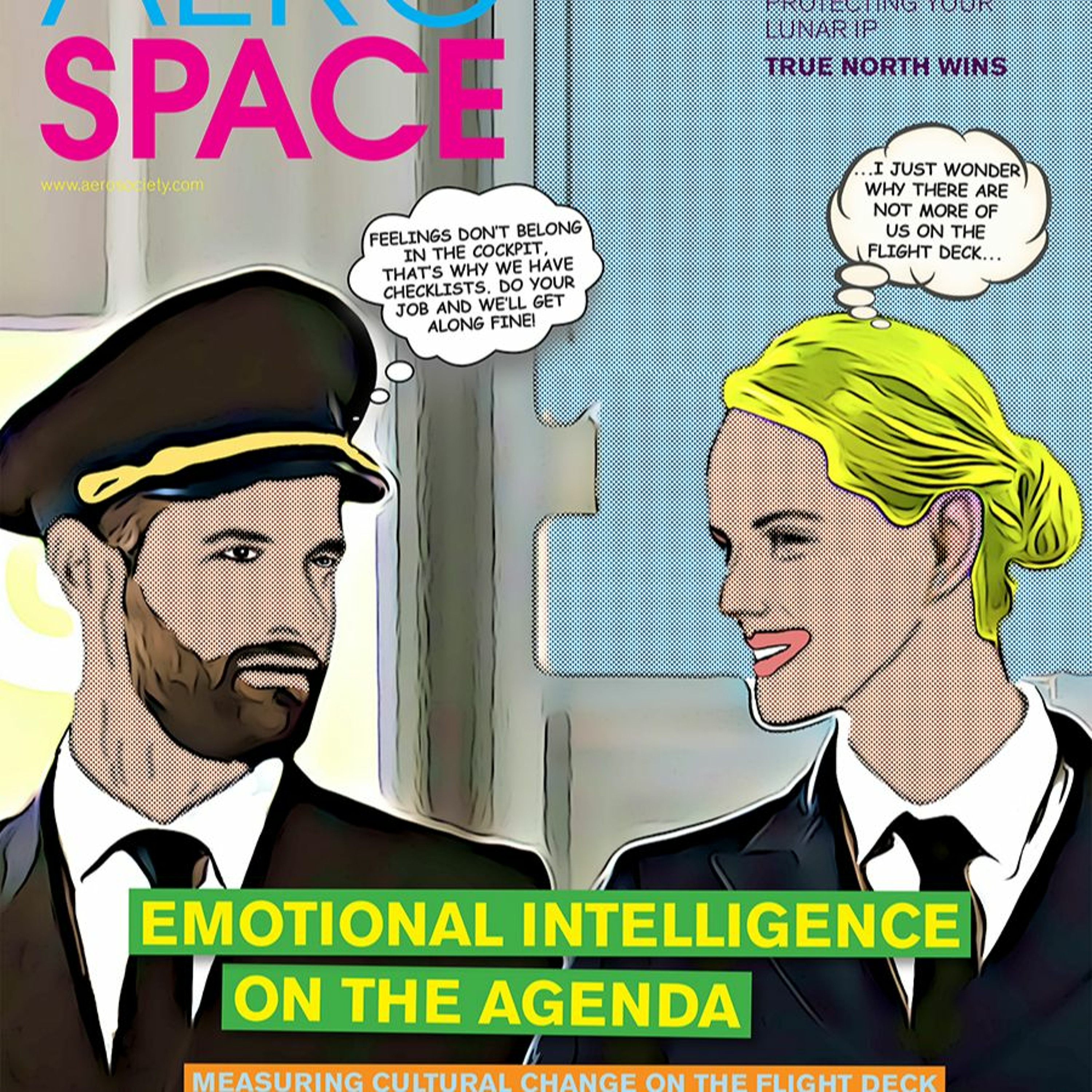
AEROSPACE NOTAM - August 2023
In this podcast series from the Royal Aeronautical Society's monthly AEROSPACE magazine, Editor in Chief Tim Robinson and Deputy Editor Stephen Bridgewater analyse recent aviation, aerospace and space news - and preview the next (August 2023) edition of the magazine. Find out more at www.aerosociety.com
Jul 28, 2023 • 58:32
Classic Lecture - TSR-2: Panel Discussion
Was the incoming Labour Government right to cancel TSR-2? Was there a possibility of creating an Anglo-French military aircraft programme in the early 1960s? Who was the panellists’ favourite villain in the TSR-2 story? These and many other questions were posed to the conference speakers, and we hear their frank conclusions.
Jul 11, 2023 • 59:07
Classic Lecture - TSR-2: A Warning for Tempest? By Dr Michael Pryce MRAeS
What lessons did the UK’s aerospace industry learn from TSR-2 and what key points can we take into today’s aerospace projects? As a student, Michael Pryce lived close to Ivan Yates, the man who Warton sent to liaise with Weybridge. In his retirement, Yates told Pryce about many of the mistakes that were made on the TSR-2 project and how he learnt from them on his later projects, most notably when he served as the UK’s man on the Jaguar, Tornado and Typhoon. Many of Yates’s observations are of ke
Jul 11, 2023 • 32:00
Classic Lecture - TSR-2: What could have been? By Benjamin Goodlad
What would have happened if Britain decided to keep TSR-2? Benjamin Goodlad explores the possible strategic and tactical use of the aircraft, discusses the gaps it would have filled and considers which aircraft it could have replaced. He also asks how the RAF armed with an operational TSR-2 would have looked from a bomber and strike command perspective. He also speculates on the impact a successful TSR-2 would have had on its international competitors. This session is followed by a short questio
Jul 11, 2023 • 32:06
Classic Lecture - TSR-2: Empty Skies: British procurement dilemmas and opportunities following TSR-2
The cancellation of TSR-2 left a large gap in the RAF’s armoury, but how should the gap be filled? Samuel Hollins explores the immediate procurement dilemmas faced by Britain upon the death of TSR-2 and examines the viability of the procurement options that presented themselves prior to Tornado. He then goes onto suggest that the Europeanising turn in defence procurement that Britain took from the late-1960s onwards was a partial consequence of the opportunities that emerged in a world without T
Jul 11, 2023 • 29:49
Classic Lecture - TSR-2: A ‘melancholy spectacle’: the downfall of the TSR-2 by Clive Richards
How did those in the corridors of power see the development of the TSR-2 project once it had been awarded? Clive Richards explores the political and strategic debates that took place within Whitehall between 1957 and the cancellation of the project in 1965.
Jul 11, 2023 • 28:41
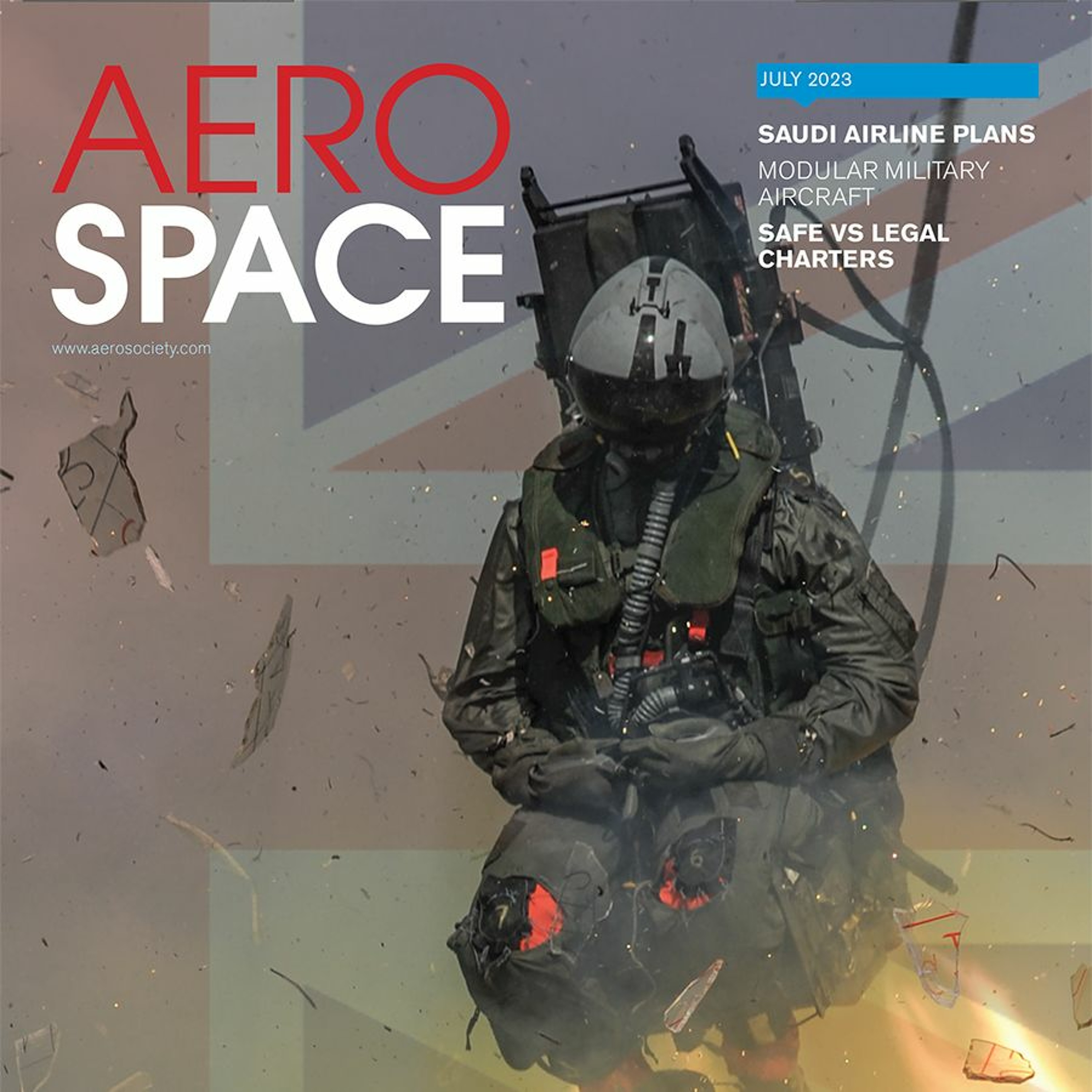
AEROSPACE NOTAM - July 2023
In this new podcast series from the Royal Aeronautical Society's monthly AEROSPACE magazine, Editor in Chief Tim Robinson and Deputy Editor Stephen Bridgewater analyse recent aviation, aerospace and space news - and preview the next (July 2023) edition of the magazine. Find out more at www.aerosociety.com
Jun 30, 2023 • 1:00:09
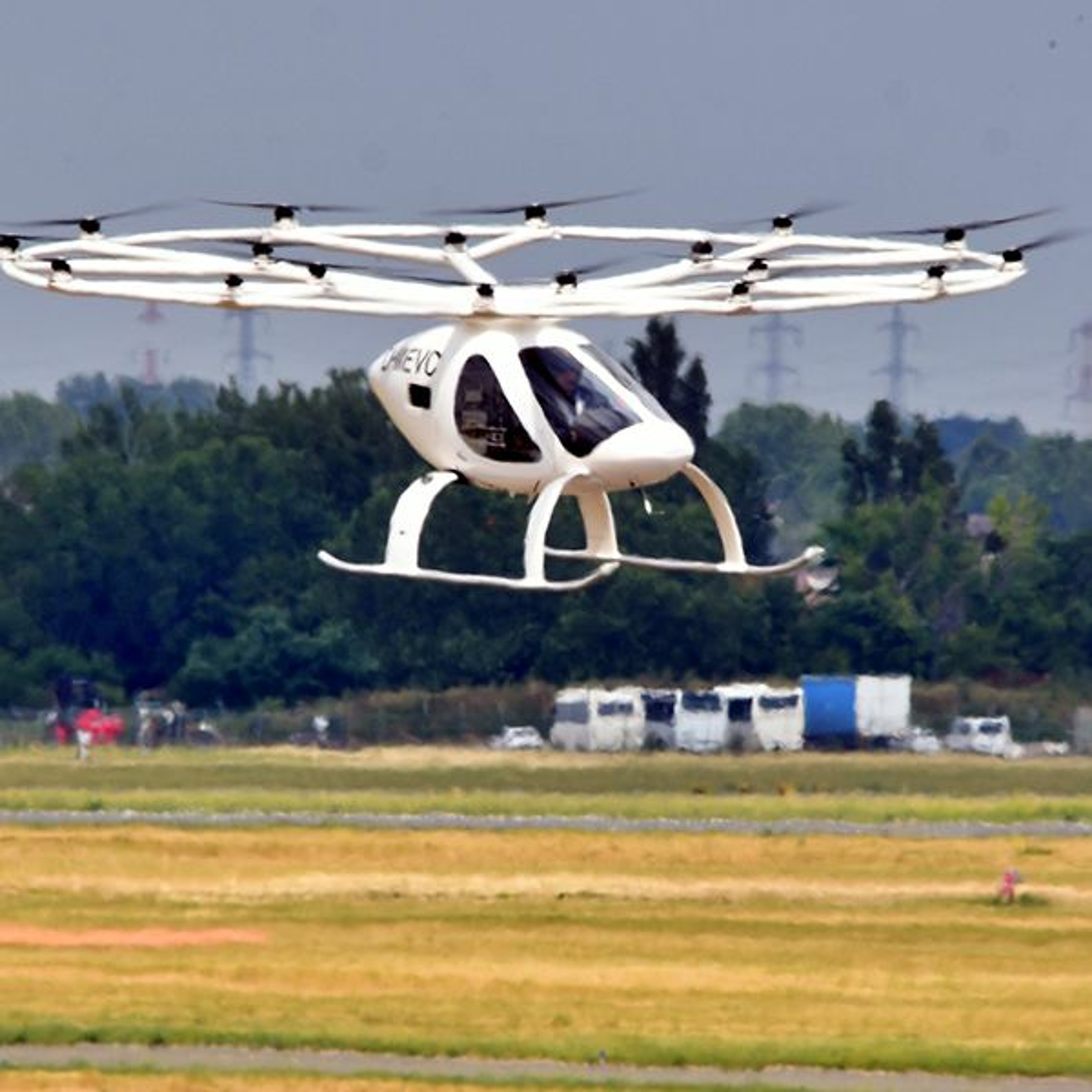
NOTAM - Paris 2023
Listen to the AEROSPACE team sum up the 2023 Paris Air Show.
Jun 23, 2023 • 57:57
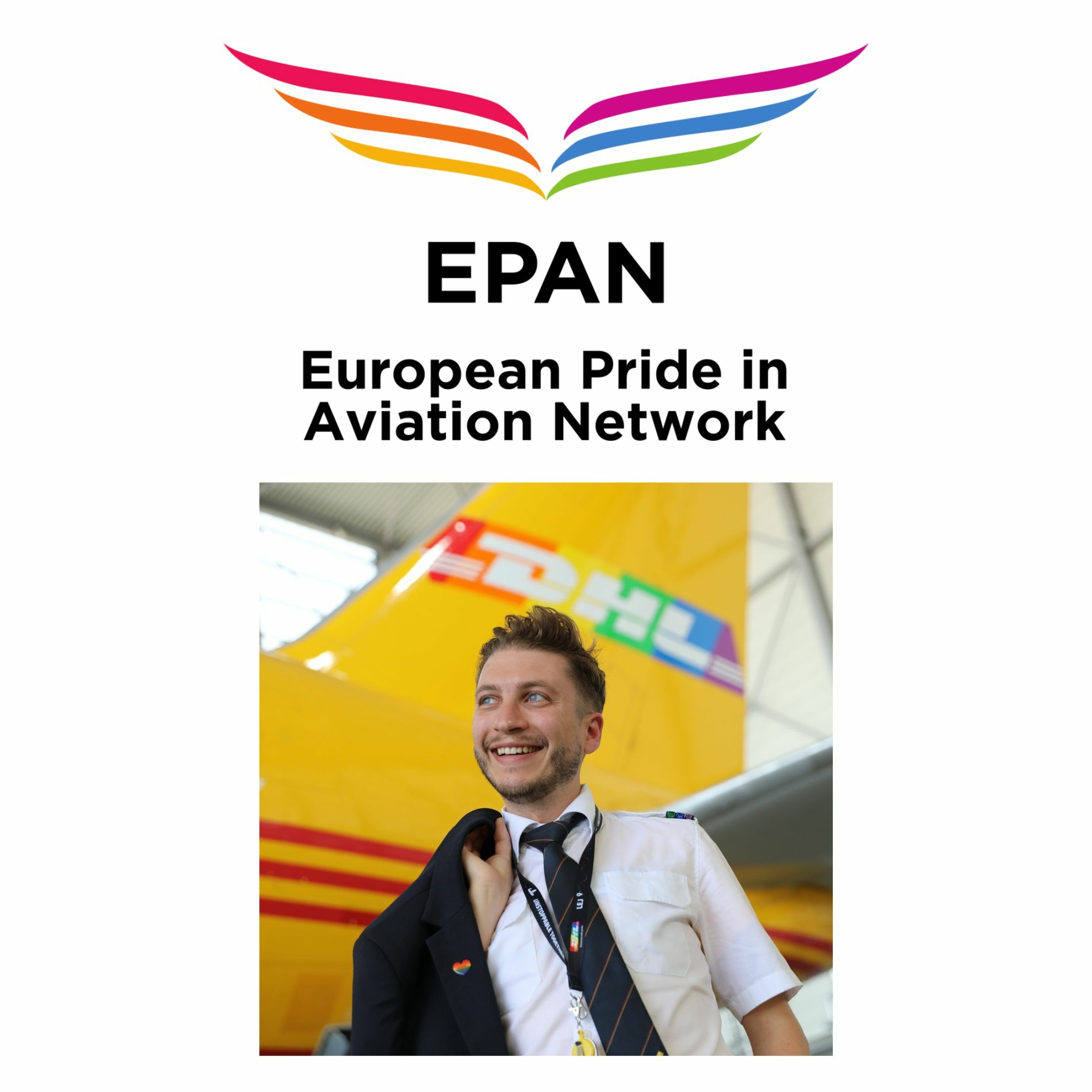
Pride Month 2023 - Supporting LGBTQ+ People in Aviation: A conversation with EPAN
Happy Pride Month! Supporting LGBTQ+ people in the industry is so important, in this podcast we spoke with Zac Brown, the President of the European Pride in Aviation Network about all the amazing work they’re doing to support LGBTQ+ people in aviation! For more information about EPAN you can go to their website: www.prideinaviation.org/ and to find out more about Diversity at RAeS you can visit our website: www.aerosociety.com/diversity
Jun 21, 2023 • 21:06
Classic Lecture - TSR-2: Off-the-Shelf Options by Paul Stoddart FRAeS
How effective would the Royal Air Force have found a completed TSR-2 compared to its rivals? Paul Stoddart compares the aircraft’s actual and potential performance data with its competitors in the international military aircraft market: the F-4C Phantom, BAC Buccaneer S.2B, Mirage IVA, RA-5C Vigilante and GD F-111C.
Jun 14, 2023 • 39:32
Classic Lecture - TSR-2: Building the industrial coalition by Prof Keith Hayward FRAeS
Keith Hayward explores the politics and personalities behind the TSR-2 project, which, at its heart, was a tension between two separate design teams in two different companies, with the young pretenders at English Electric headed by Frederick Page and the shrewd Sir George Edwards heading the team at Vickers. Pressure was added to the relationship as the TSR-2 contract was used to encourage the rationalisation of the UK aerospace industry, with the Vickers and English Electric on to form the cor
Jun 14, 2023 • 29:54
Classic Lecture - TSR-2: From Paper to Hardware by Tony Buttler AMRAeS
Tony Buttler takes us through the runners and riders that competed with the combined Vickers/English Electric design that became TSR-2, chief amongst them a proposal from Hawker Siddeley. He then goes onto explore TSR-2’s path to the first flight, highlighting aspects of the aircraft’s advanced design.
Jun 14, 2023 • 40:46
Classic Lecture - TSR-2: The path to GOR339, 1951-1957 by Clive Richards
Clive Richards explores the debate within the Air Ministry and Ministry of Supply on the need to procure a replacement for the English Electric Canberra bomber, culminating with the release to industry of General Operational Requirement 339 in 1957.
Jun 14, 2023 • 27:25
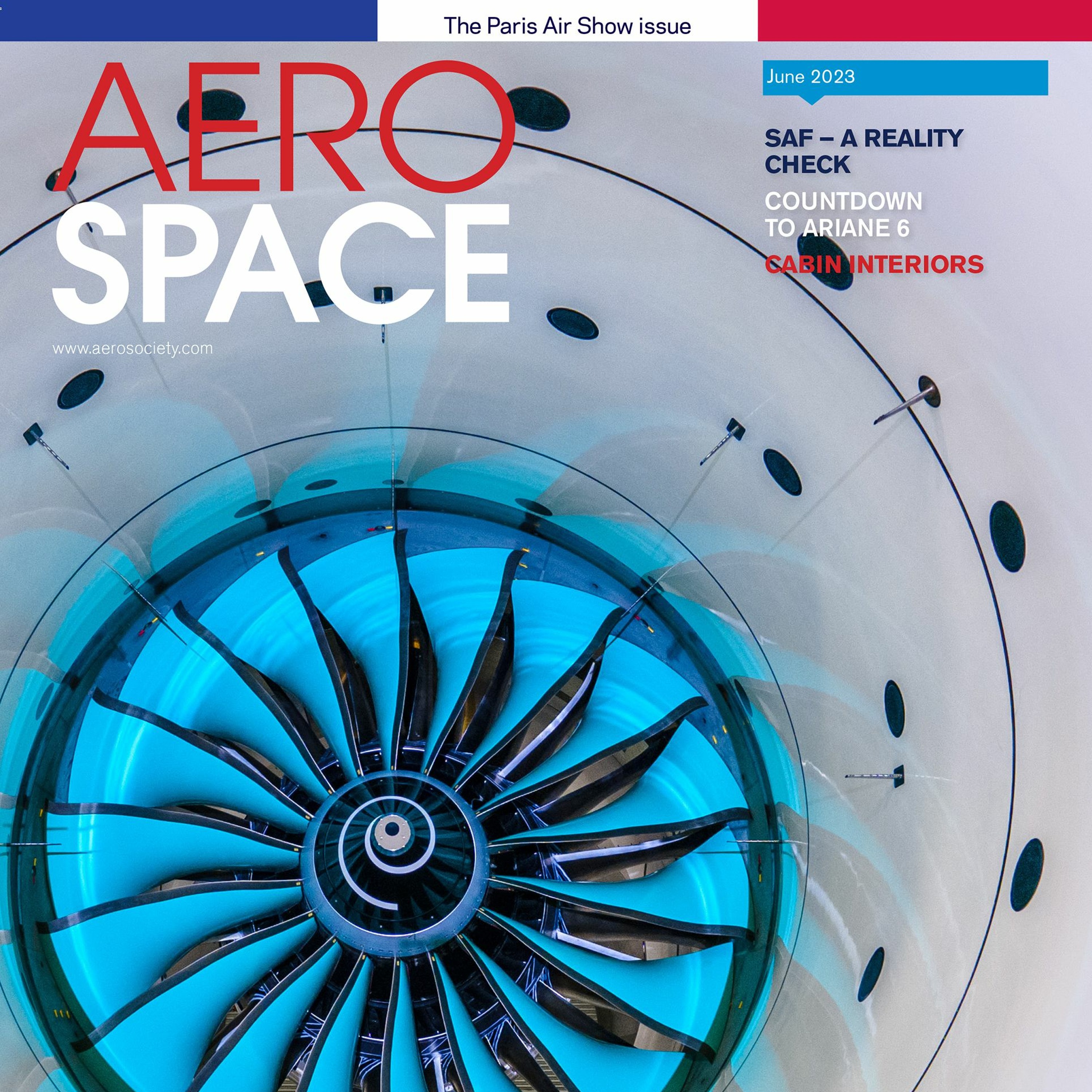
AEROSPACE NOTAM -June 2023
In this new podcast series from the Royal Aeronautical Society's monthly AEROSPACE magazine, Editor in Chief Tim Robinson and Deputy Editor Stephen Bridgewater analyse recent aviation, aerospace and space news - and preview the next (June 2023) edition of the magazine. Find out more at www.aerosociety.com
May 30, 2023 • 47:53
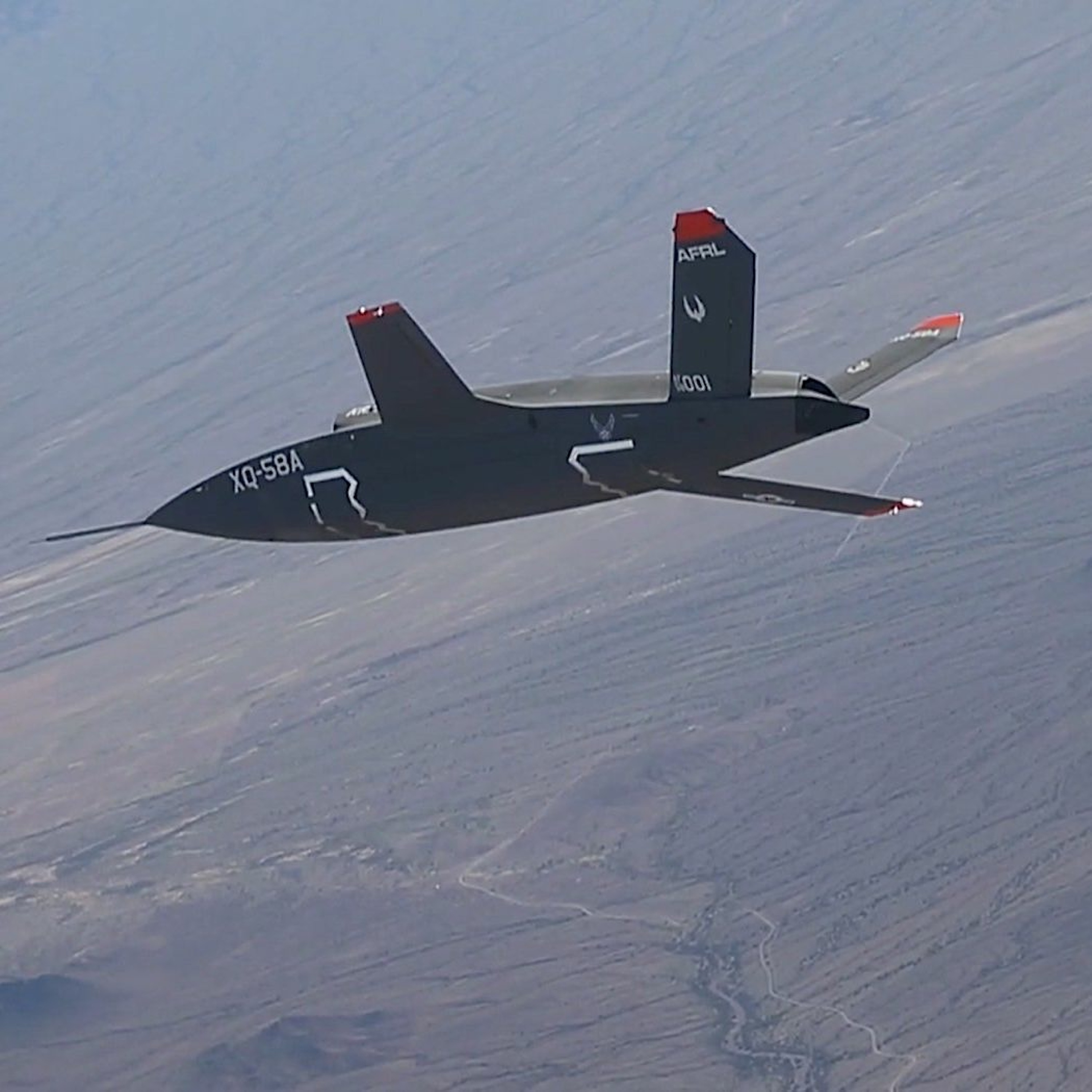
NOTAM Combat Air Space Summit
What is the future of combat air and space capabilities? AEROSPACE TIM ROBINSON FRAeS and STEPHEN BRIDGEWATER round-up two days of high-level debate and discussion at the RAeS Future Combat Air & Space Capabilities Summit.
May 26, 2023 • 50:45
An interview with the civil pioneers.... flying over the Middle East with Capt H. W. C. Alger
Captain H. W. C. Alger first began flying Vickers Vernons on the Cairo to Baghdad airmail route when serving in the RAF and, when Imperial Airways took over the route, he was selected to join the national carrier, this time flying de Havilland DH.66s. In this interview he describes the Desert Air Route and takes us through some hair-raising stories. Captain H. W. C. Alger was interviewed by David Jones on 8 June 1975. This recording is part a AeroSociety Podcast series, Development of Civil Avia
May 9, 2023 • 33:53
An interview with the civil pioneers….. aircraft maintenance in the desert with Capt W. L. Garner
Though flying the early civil aircraft could be a challenge, so could maintaining the aircraft along the desert air route. Capt. Garner explores the challenges supporting aircraft as a ground engineer in North Africa, first for the Royal Air Force and then as part of Imperial Airway’s Ground engineering staff. Not only did he have a number of adventures with the airline’s aircraft, he also helped to support some of the civil record breakers, including Charles Kingsford Smith in the Southern Cros
May 9, 2023 • 28:54

AEROSPACE NOTAM - May 2023
In this new podcast series from the Royal Aeronautical Society's monthly AEROSPACE magazine, Editor in Chief Tim Robinson and Deputy Editor Stephen Bridgewater analyse recent aviation, aerospace and space news - and preview the next May 2023 of the magazine. Find out more at www.aerosociety.com
Apr 28, 2023 • 48:32
An interview with the civil pioneers... early days of flying over the Outback with Capt Lester Brain
Captain Brain was one of Qantas’ first pilots, taking the airline from converted World War I bombers to Catalinas in World War II. In the interview, Brain explains what life was like in the early days flying over the Outback, including the early days of the flying doctor service and searching for crashed aircraft. He looks at the impact of the brave adventurers such as Alan Cobham and Bert Hinkler and the real pioneers, the men and women who made civil aviation sustainable in Australia. He also
Apr 19, 2023 • 1:28:05
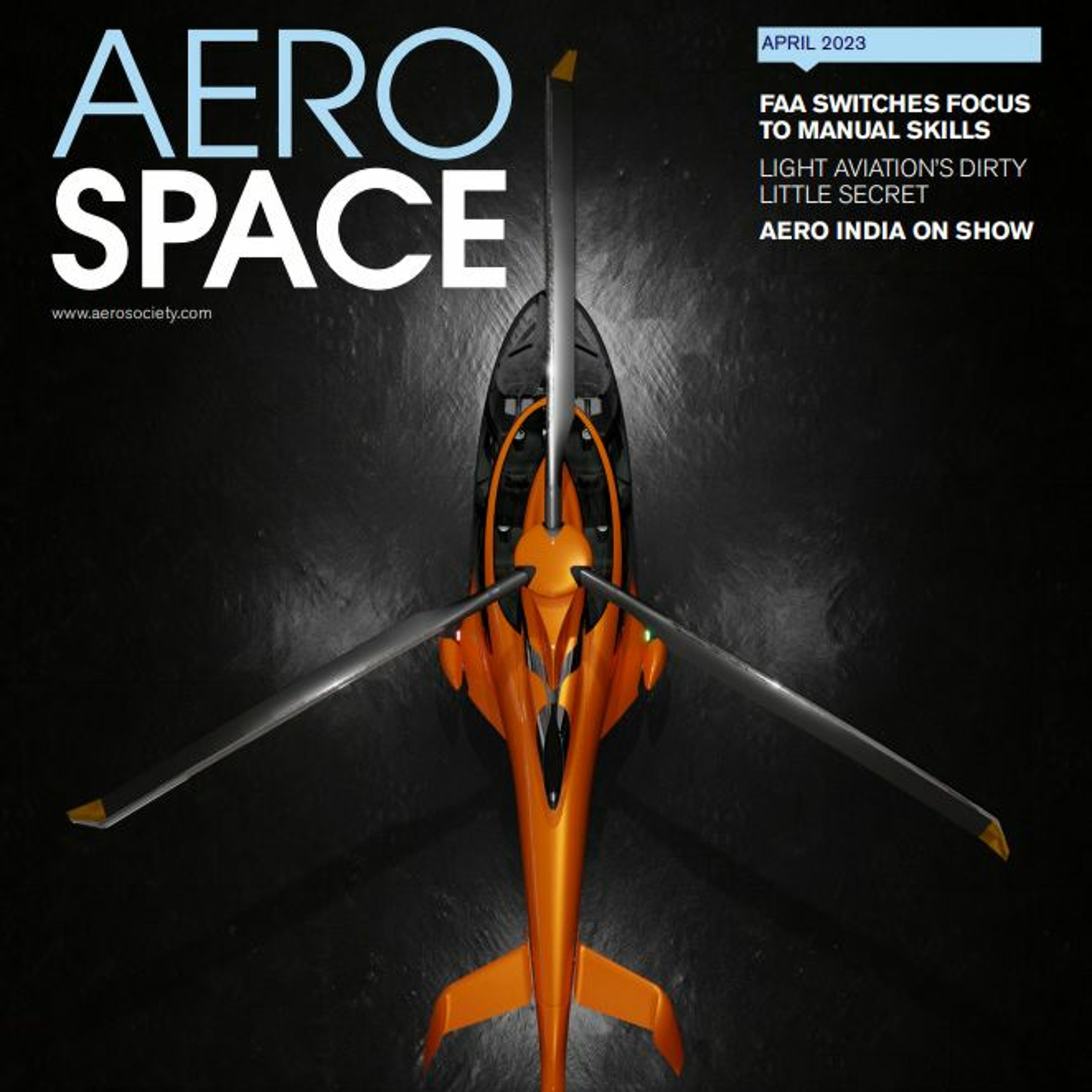
AEROSPACE NOTAM - April 2023
In this new podcast series from the Royal Aeronautical Society's monthly AEROSPACE magazine, Editor in Chief Tim Robinson and Deputy Editor Stephen Bridgewater analyse recent aviation, aerospace and space news - and preview the next edition of the magazine. Find out more at www.aerosociety.com
Mar 31, 2023 • 1:15:08
Rewind - The History of the SRN Series of Hovercraft by Ray Wheeler FRAeS
The SRN-1 was the world’s first amphibious hovercraft and it led to a series of craft designed and built on the Isle of Wight. Though most famous for civil uses, the SN series was adapted for military uses and models were sold across the world. There were also schemes to use hovercraft technology for other industrial uses. Ray Wheeler gives an insider’s view of how and why the series evolved and how they overcame a host of technical and design challenges, from corrosion protection to structural
Mar 29, 2023 • 1:29:14
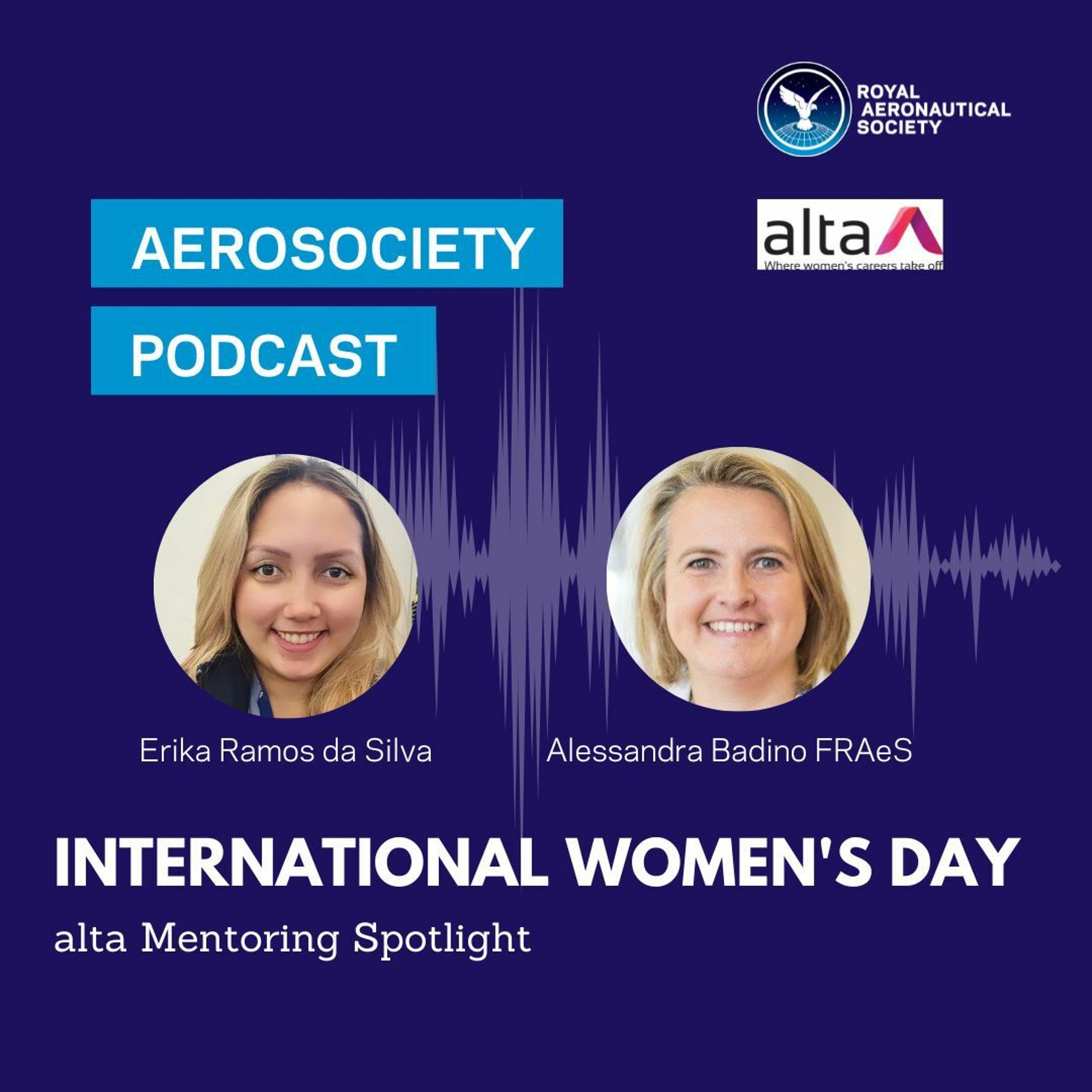
International Women's Day 2023: alta Mentoring Spotlight
Happy International Women’s day! As part of our celebrations this year we are showcasing our alta mentoring platform, a platform by women, for women. This podcast features Alessandra Badino FRAeS and Erika Ramos da Silva, a mentor and mentee on the platform, they discussed their experiences on the platform and with mentoring as a whole.
Mar 7, 2023 • 28:07
Greener by Design Group Debate: Aviation will not meet net zero by 2050
The Royal Aeronautical Society Greener by Design Group with the Young Persons Committee held a debate on this motion on Friday 9 December 2022 (https://www.aerosociety.com/events-calendar/raes-greener-by-design-group-debate-aviation-will-not-meet-net-zero-by-2050/). An informed and knowledgeable set of speakers introduced the arguments. Finlay Asher of Safe Landing proposed the motion, seconded by Matt Finch of Transport & Environment. The opposition was led by Jonathon Counsell, Group Head of
Mar 1, 2023 • 1:51:12
Classic Lecture: Flying the X-15 by Robert M. White
The North American X-15 was the record-breaking high-speed and high-altitude research aircraft that played an important part in the race to the moon. In this lecture the test pilot who pegged up most ‘firsts’ in the X-15 gives his British peers insights into the aircraft’s flight test programme, including the aircraft’s stability and control and handling qualities, and goes onto describe the cockpit set-up and the programme’s use of simulation. He also explored the aircraft’s and the programme’s
Feb 22, 2023 • 1:46:08
Apprenticeship Lowdown
Find out more about becoming an apprentice from current apprentices in the aerospace and aviation industry.
Feb 8, 2023 • 31:53
Why Run an Apprenticeship
It’s #EmployerTuesday! Are you an employer interested in running an #apprenticeship? Or do you want to hear from those who hire them? Take a listen to our employer podcast with 2Excel Aviation and Marshall ADG
Feb 7, 2023 • 23:21
Rewind: Challenges in the age of hybrid warfare by ACM Sir Christopher Moran FRAeS
After a posting that included a role in the command and control for the International Security Assistance Force (ISAF) for Afghanistan, the then recently appointed Commander-in-Chief Air Command, Royal Air Force, draws on his experiences to explore the challenges faced by the RAF in the age of hybrid warfare, including the threats posed by Counterterrorism and Counterinsurgency (COIN). Towards the end of the lecture Sir Christopher also singles out the Expeditionary Air Wing concept and the RAF’
Jan 10, 2023 • 47:49
Classic Lecture: History of Supermarine by A.N. Clifton FRAeS
Supermarine had a proud design record headed by the Spitfire and Schneider Trophy aircraft. A.N. Clifton, who started as Mitchell’s structures man and ended up, forty years later, as its Chief Designer, gives us the insiders view of the aircraft designed and developed by the company from just before the First World War to the loss of the Supermarine name in 1960. As well as discussing many of the aircraft types designed by the company, Clifton explores how Supermarine’s faced the challenges of
Dec 12, 2022 • 1:20:41
Rewind: Evolution of Air Sea Rescue around the Second World War by Gp. Capt. R. L. Flower
Spurred on by the desire to save lives, boost morale and preserve trained manpower, Air Sea Rescue was transformed during the Second World War. After a career in the service, the former high speed rescue launch captain explores how air sea rescue developed in the years before, during and just after the Second World War and reflects on how changes in people, technology, techniques, training and increases in manpower moved the service forward. He also gives us a flavour of what life was like using
Nov 24, 2022 • 1:04:06
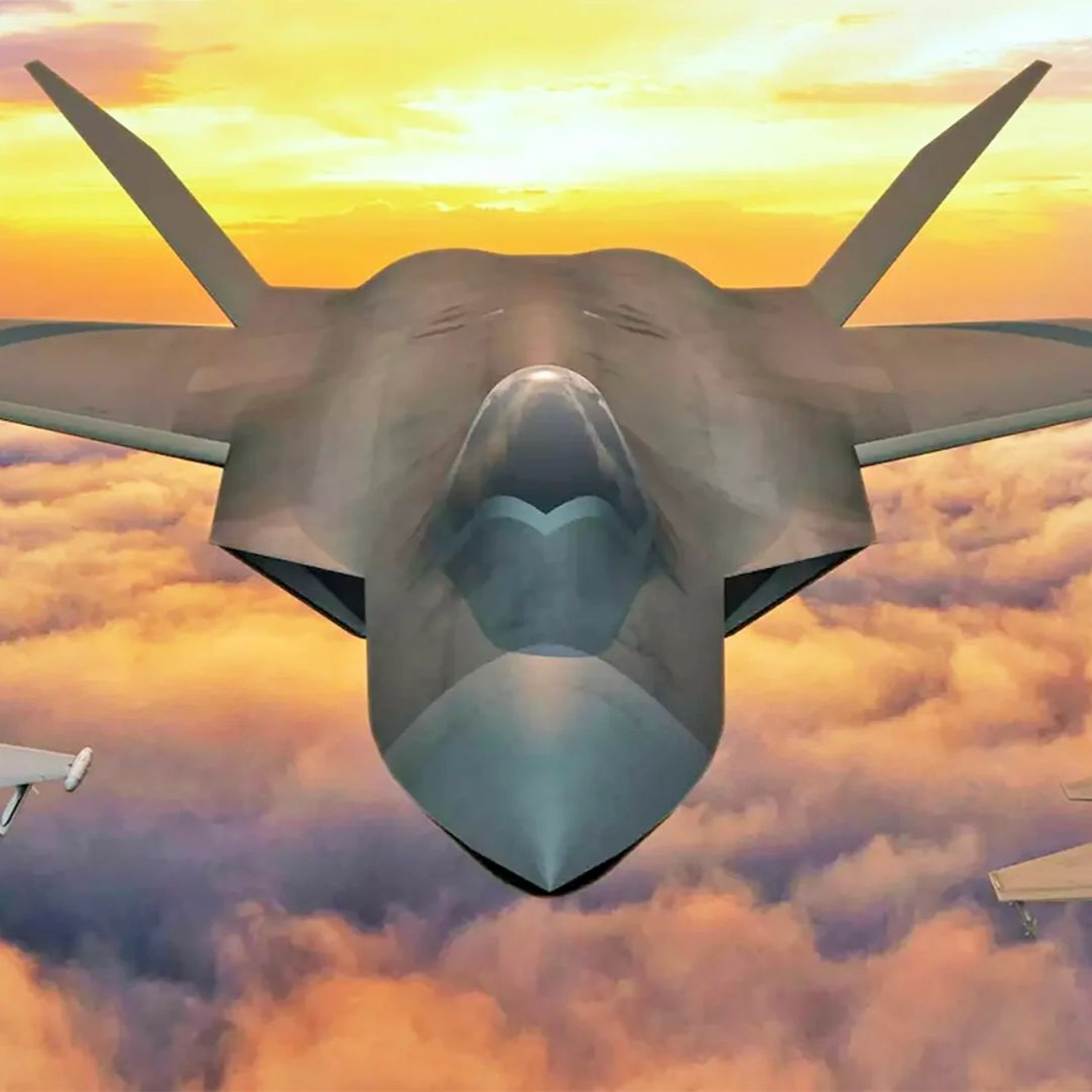
RAeS Team Tempest Roundtable Podcast
Richard Berthon, UK Director of Combat Air, Herman Claesen, FCAS Managing Director, BAE Systems and Air Cdre Jonny Moreton, UK Programme Director, Future Combat Air Acquisition Programme, UK discuss the highlights from a recent Royal Aeronautical Society roundtable on the FCAS/Team Tempest future fighter project.
Nov 8, 2022 • 19:20
Rewind: Rotary Wing Aspects of Air Power in Land Operations by Rear-Adm Tony Johnstone-Burt FRAeS
What were the future challenges facing the armed forces and the Joint Helicopter Command in particular? How could the defence industry help to create a more effective battlefield helicopter capability? In order to help answer these two questions, Rear-Adm Johnstone-Burt explores the strengths of rotorcraft and the Joint Service approach and the strategic challenges that the Joint Helicopter Command and the UK’s armed forces more broadly faced, including those brought about by the use of social m
Oct 7, 2022 • 1:04:43
Rewind - Charles A Lindbergh: a pioneer remembered by John Grierson
Lindbergh undertook one of the most remarkable flights in history. John Grierson takes us through every step of the epic flight which led Lindbergh to become the first man to fly the Atlantic single-handed. Grierson, an old friend of Lindbergh’s, also paints a portrait of the man, both before and after his epic flight, exploring his reluctance for the USA to enter the war, his polar flights and his interest in wildlife conservation. The recording includes a second tribute to Lindbergh, this time
Sep 20, 2022 • 1:17:57
Classic Lecture - F-35 flight testing by Wg Cdr Jim Schofield FRAeS
The RAF’s F-35 Lightning II Requirements Manager and former project test pilot, Wg Cdr Jim Schofield FRAeS, starts his lecture by exploring how the F-35 would meet some of the UK’s defence needs up to 2050 and discusses the aircraft’s capabilities and many of its systems. He then describes his 2009 to 2012 tour as the MOD’s flight test pilot in the United States, including taking us through some of his test flights, including those trials at sea and at night. He concludes by telling us about the
Aug 12, 2022 • 1:10:29
Farnborough Air Show 2022 AEROSPACE wrap-up podcast
Tim Robinson, Steven Bridgewater & Bella Richards review their highlights from their week at the 2022 Farnborough Air Show.
Jul 22, 2022 • 35:03
Classic Lecture: Conquering the Atlantic : Alcock & Brown by Peter Elliott & David Broughton
Soon after the end of the First World War, Britain’s aircraft manufacturers’ minds were drawn back to a £10,000 prize for the first to fly an aeroplane across the Atlantic Ocean. Join Peter Elliott & David Broughton as they take us into the Vickers Vimy cockpits with pilot John Alcock and navigator Arthur Whitten Brown as they race to be the first to leave Newfoundland, fly and navigate across nearly two thousand miles of sea and finally set foot on European soil. Peter Elliott & David Broughto
Jul 11, 2022 • 1:24:31
Classic Lecture – The history of polar aviation by John Grierson
The first man to successfully fly over the Greenland ice cap chronicles how he, together with other figures such as Charles Lindbergh and Edward Byrd, used balloons, airships and aeroplanes to fly over the world’s great wildernesses and, in so doing, lay the path for air service routes across the roof of the world. John Grierson lectured to the Royal Aeronautical Society’s Prestwick Branch on 12 March 1964. The recording was digitised thanks to a grant from the RAeS Foundation and the podcast wa
Jun 13, 2022 • 1:07:12
Classic Lecture: Farnborough 1945 : Farewell to the Luftwaffe - pointers to the future
In late 1945 the Royal Aircraft Establishment hosted displays of German and British aircraft and equipment. It was the first opportunity that many people had to see - in detail and up close - a wide range of aircraft that until recently had been either closely guarded, such as the Spiteful and Martin Baker MB 5, or cause for alarm, such as the Dornier Do 335 and Messerschmitt Me 262. German missiles as well as German and British jet engines were also shown, giving a fascinating glimpse of what m
May 13, 2022 • 1:00:50
Classic Lecture: Getting the first man on the moon – a view from 1965 by Col. John Glenn
How was the USA’s quest to get the first man on the moon going halfway between JFK’s pledge and Neil Armstrong’s first giant step? Colonel John Glenn, the first American to orbit the earth, reviews NASA’s achievements before giving us a stage-by-stage view of how NASA was planning to get an astronaut to the moon and back. The lecture concludes with a fascinating question and answer session. A longer version of this recording, which includes Glenn talking through a range of images from the Space
Apr 19, 2022 • 56:50
Classic Lecture: Cody – the hero? By Peter Reese AMRAeS
An American showman turned aviator, Samuel Franklin Cody used his imagination, endless courage and engineering virtuosity to become the first man in Britain to fly in an aircraft of his own making. But can he rightly take a place amongst the world’s heroes? In this lecture, historian Peter Reese tells the story of how a man moved from performing a Wild West Show to becoming an aeronautical pioneer by building and flying some of the earliest man-carrying kites and aeroplane, before showing how,
Mar 14, 2022 • 1:01:47
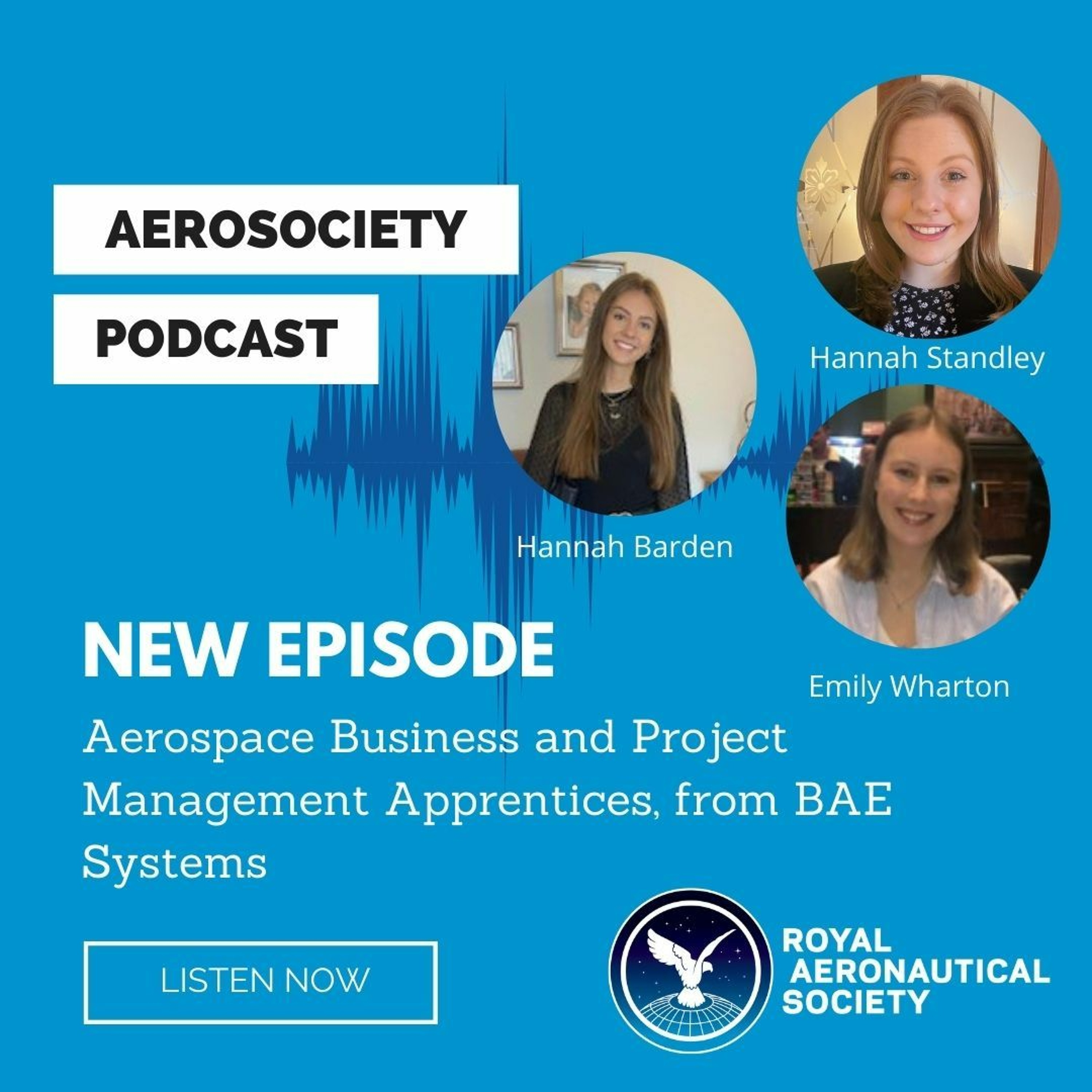
RAeS Podcast with Aerospace Business and Project Management Apprentices, from BAE Systems.
RAeS has joined with Apprentices From BAE Systems to let you know what to expect from an apprenticeship. This Podcast hears Hannah, Emily and Hannah talk about why they chose an apprenticeship, how they felt about the application process, what their days work looks like and so much more.
Feb 9, 2022 • 48:56
Rewind: A History of Martinsydes by J. M. Bruce MRAeS
One of the first aircraft manufacturers in the UK, Martin & Handasyde, later to be known as Martinsyde Ltd, became Britain’s third biggest manufacturer during the First World War and designed aircraft for the race across the Atlantic and from the UK to Australia. J. M. Bruce explains the history of this short-lived company and untangles the ‘threads of development’ that linked each of Martinsyde’s aircraft types. The recording concludes with a short question and answer session that includes remi
Feb 8, 2022 • 1:48:06
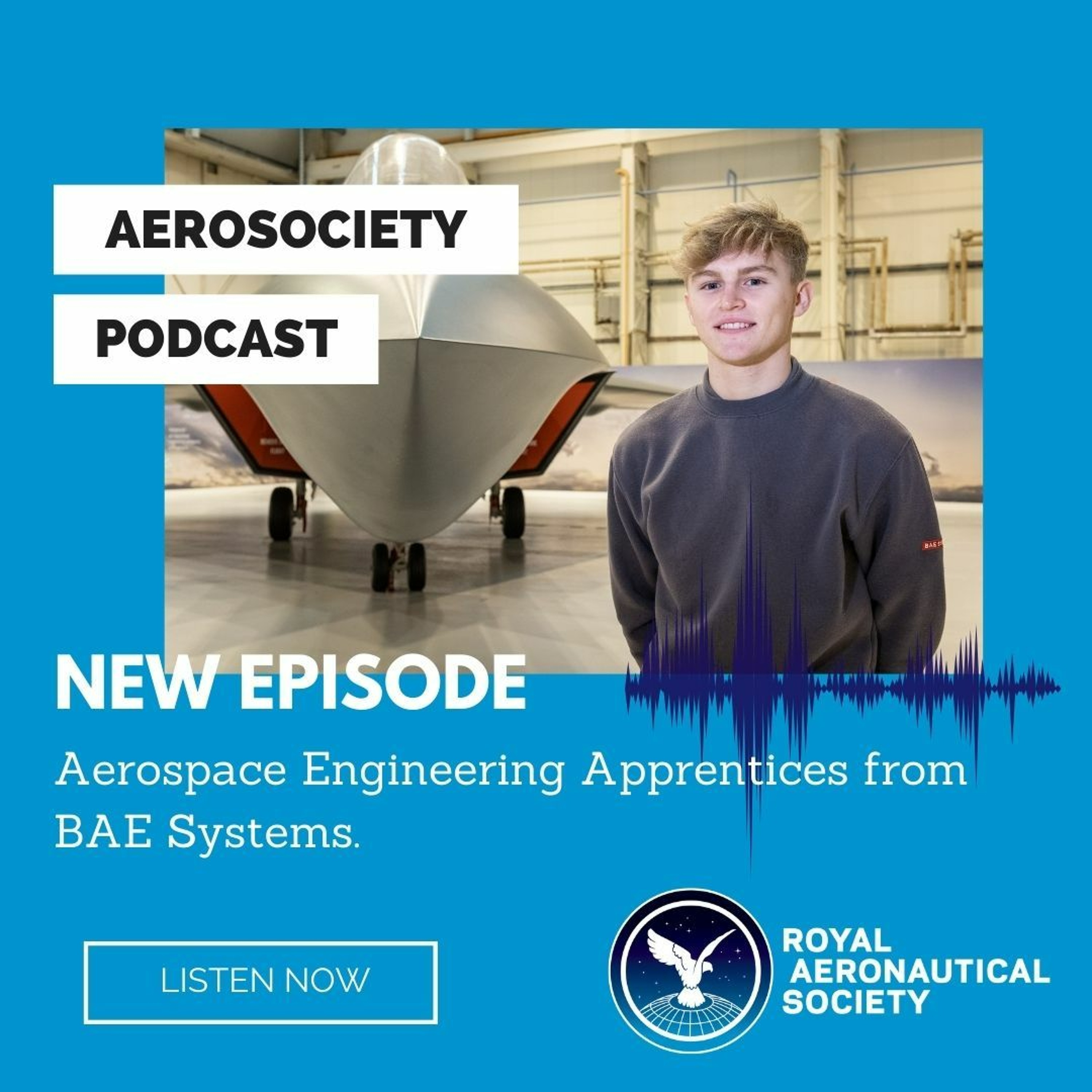
Aerospace Engineering Apprentices from BAE Systems.
RAeS has joined with Apprentices From BAE Systems to let you know what to expect from an apprenticeship. This Podcast hears Chris and Jay talk about why they chose an apprenticeship, how they felt about the application process, what their days work looks like and so much more.
Feb 7, 2022 • 36:20
Classic Lecture: Concorde and the Americans by Kenneth Owen FRAeS
Kenneth Owen takes us through the twists and turns of the Anglo-French campaign to persuade the Americans to allow the supersonic aircraft to land in New York. He highlights how the French Aérospatiale and British BAC used different strategies to persuade American politicians and the judiciary to accept Concorde on the transatlantic route and shows the hoops that the manufacturers had to jump though in order to overcome environmental concerns held in both Washington DC and New York. Owen begins
Jan 11, 2022 • 1:45:53
An interview with…Sir John Charnley on blind landing and life at the RAE’s Aero Flight
In the heat of World War II, John Charnley was sent from his red-brick university to the heart of aero research in the UK, the Royal Aircraft Establishment in Farnborough. In this archive recording, Sir John describes the transition into the RAE Aerodynamics Department’s Flight Test Division and his work on many of the problems associated with high-speed flight, starting with work on the Gloster E.28/39 which tested Whittle’s jet engine. After twelve years Sir John moved from the very fast to t
Dec 1, 2021 • 45:00
Rewind: The long winding legal road from Warsaw 1929 to Montreal 1999 by George Tompkins Jnr FRAeS
The ‘Warsaw Warrior’, George Tompkins Jnr, has probably defended more cases involving the Warsaw Convention than anyone else. In this fascinating lecture, Tompkins takes us into the courtrooms and corridors of power where he helped to shift the USA’s stance on the limitation of liabilities that passengers faced when litigating against airlines in the USA. He then takes us to the Montreal Treaty negotiations where, as legal aid to IATA at the conference, the rules were re-written, before making s
Nov 19, 2021 • 1:11:35
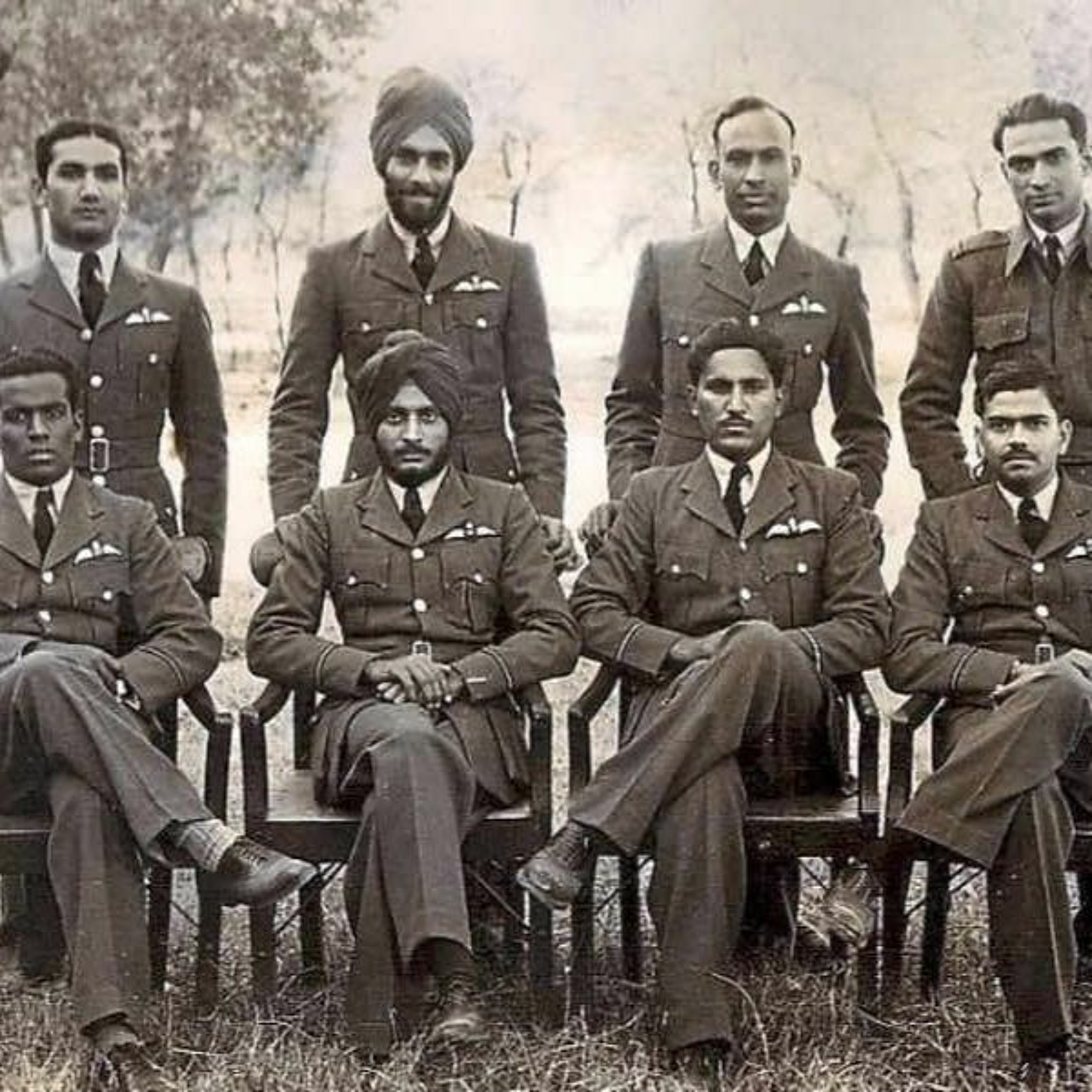
Black History Month RAeS Podcast - Hidden Figures: Interview with author Andrew Rajan Thanks
To celebrate and acknowledge the contribution of Black British Aviators to UK aerospace, the RAeS podcast speaks to filmmaker, writer, actor, and social commentator; Andrew Rajan. We will look at some of the little-known stories of achievement by people of colour within Britain's military forces and how they may inspire the black and brown people of today's UK.
Nov 9, 2021 • 41:21
Classic Lecture – The BAE Hawk in the 21st century : A British Success Story by Prof Andrew Bradley
BAE Hawk Chief Engineer, Andrew Bradley, explains how the aircraft developed from the turn of the millennium. He looks at the demands of foreign customers, such as those in India, South Africa and Australia, and explores the Hawk T.Mk.2 programme, which was brought into service with the RAF during 2008. He concludes by predicting how the Hawk story would continue into the 2010s. The paper finishes with a question-and-answer session, in which Andrew Bradley is joined by Harry Fraser-Mitchell FRAe
Oct 1, 2021 • 59:59
Classic Lecture - Test Flying the Hawk Aircraft : A British Success Story by Chris Roberts
BAE Hawk test pilot, Chris Roberts, takes us through the challenges faced by the flight test team that put the Hawk T1 to T45 through their paces. He starts off by explaining the main problems with the T1, before describing the demands of foreign buyers, including the Finnish Air Force and, most importantly, the challenges of producing the T45 Goshawk for the US Navy. Chris Roberts gave the second paper in an evening dedicated to the Hawk Aircraft : A British Success Story. The evening was organ
Oct 1, 2021 • 24:00
Classic Lecture - Creating the Hawk Aircraft : A British Success Story by Harry Fraser-Mitchell
BAE Hawks’ first Chief Aerodynamicist explores the creation of the last all-British military aircraft. He takes us from the first concept, to fulfil the RAF’s demand for a new trainer, through the major design decisions and challenges facing the project’s development, and shows how the team brought the project in on time, on cost and on spec. The full story of the Hawk can be found in Harry Fraser-Mitchell’s paper in the Journal of Aeronautical History, which can be accessed via https://www.aero
Oct 1, 2021 • 31:17
Rewind: Brooklands - Cradle of Aviation by Dr H. H. Gardner FRAeS
Brooklands was the experimental flying grounds used by many of our early aero pioneers, including the firm that would later dominate its aviation history, Vickers. Dr Gardner, who spent over forty years with Vickers and BAC, takes us through the story of Brooklands. After starting with its archaeology and pre-motoring history, Gardner moves on to explore how the aviation pioneers used a car racing circuit to solve some of the mysteries of heavier than air flight and reminisces about the days of
Sep 14, 2021 • 1:01:06
Rewind: Air-to-air Photography by Cyril Peckham
The last of the aircraft photography pioneers takes us step-by-step through a typical air-to-air photographic flight during the 1960s. He also describes the different aircraft he used before and after the Second World War and the extra challenges faced by those who take photographs from aircraft carriers and parachutes. Please note, due to the age of this recording, there are periods of poor sound quality throughout. Cyril Peckham gave his lecture, History of Air Photography, to a meeting orga
Aug 24, 2021 • 1:00:06
Rewind: Designing & flying a man-carrying Ornithopter by Prof James DeLaurier MRAeS
On 8 July 2006 a team from the University of Toronto flew a full-sized, piloted, flapping-wing aircraft. In this entertaining lecture the project’s leader, Prof James DeLaurier, shows us the inspiration behind the project and guides us through the research, design, testing, construction and certification stages, before taking us through the events of an early morning in 2006 when a pilot flew the Ornithopter No.1, nick named “The Big Flapper”, for fourteen seconds over Bombardier’s Airfield in T
Jul 12, 2021 • 51:03
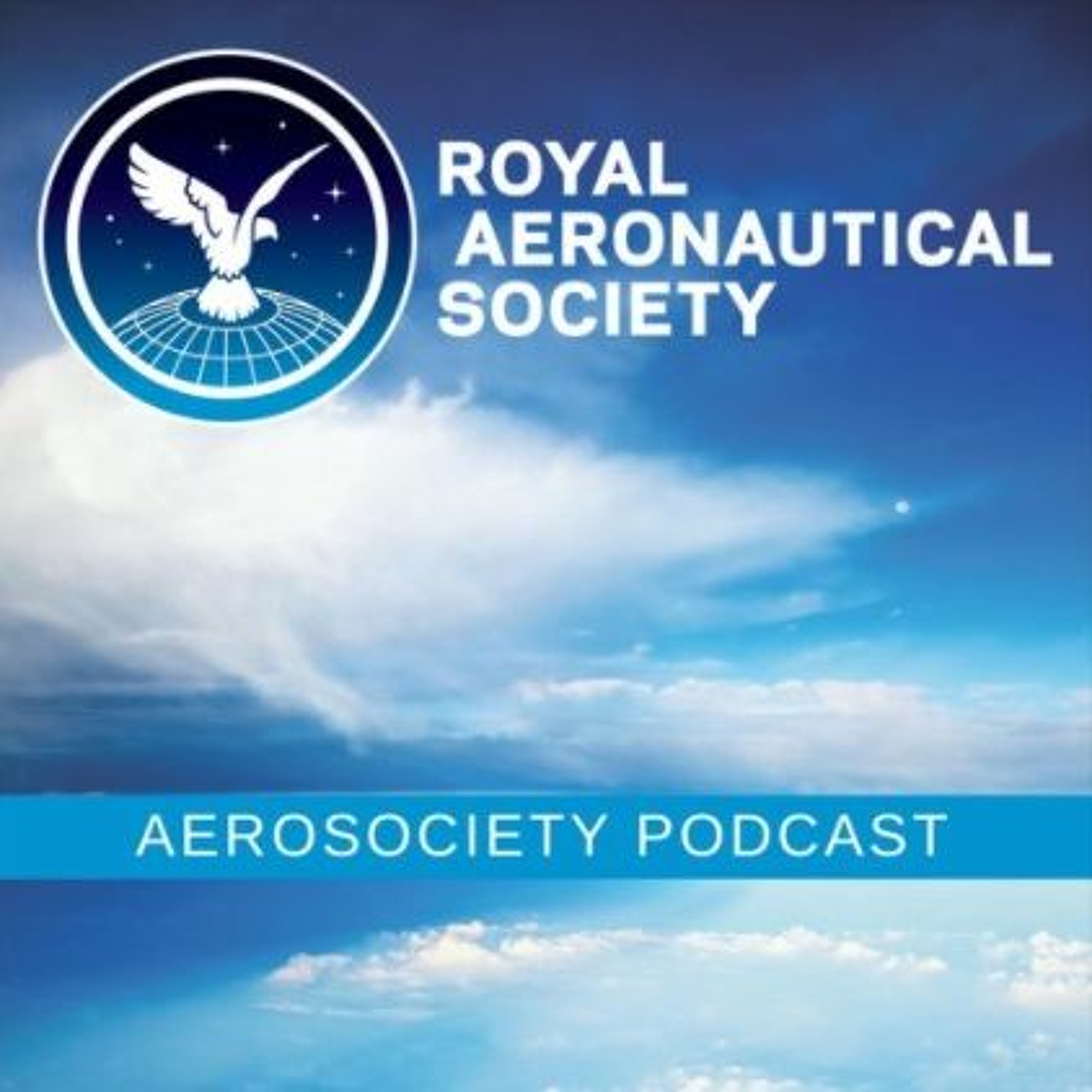
Rewind: Buckling and Stability by Prof Nicholas J. Hoff FRAeS
Stable columns may have been used by the ancient Greeks, but studies into stability and buckling did not begin until the eighteenth century. In this lecture, Prof Hoff looks at how our knowledge of these phenomena during flight was developed by the Wright Brothers and Theodore von Kármán, before exploring how he and others moved our knowledge forward in the early post-war years. Prof Hoff’s written paper that accompanied this lecture can be read via the Aeronautical Journal Archive. RAeS members
Jul 5, 2021 • 1:08:31

Classic Lecture : Memories of a pre-World War I Chief Test Pilot by Sqn Ldr S. C. Winfield Smith DSO
As the third man to serve as Chief Test Pilot at Farnborough, Sqn Ldr Winfield Smith flew many of the pre-World War I aircraft types before they entered service. In this entertaining lecture, he tells us about his time learning to fly at Brooklands and recounts stories from the early years of his flying career, including the time he became the first Briton to loop-the-loop in a British aircraft and when he broke the world height record. He also takes us through many of the aircraft types he flew
Jun 28, 2021 • 1:07:02
RAeS Careers team INWED 2021 Podcast
For this year's celebration, the RAeS Careers Team will bring you a podcast with Laura Hoang, Sophie Harker, Erika Ramos and Poppy Howe to provide an insight into their experiences of joining the industry, mentoring and other aspects of what inspired them to pursue a career in our sectors. Sophie Harker is a senior aerodynamicist at BAE Systems, where she is developing future Flight Control technologies for Team Tempest as a lead integration engineer. Laura Hoang is a Chartered Engineer working
Jun 22, 2021 • 46:09
Classic Lecture: A History of Glosters by Hugh Burroughes FRAeS
Glosters specialised in bringing high-speed aircraft to the market, including the Sparrowhawk, Grebe, Gamecock, Gladiator, the E.28/39 which tested Sir Frank Whittle's jet engine and the Meteor which was the first Allied aircraft to enter service powered by a jet. Co-founder of the company, Hugh Burroughes, gives a personal history of the Gloster Aircraft Company (GAC). Starting with its roots in the Aircraft Manufacturing Company during World War I, Burroughes charts the challenges of developi
Jun 21, 2021 • 1:19:03
Rewind – Is the future unmanned? by Prof Ian Poll FEng FRAeS
What role will unmanned aerial vehicles play in the years ahead? In 2002, Prof Ian Poll took the long view of UAVs, by drawing lessons from such figures as Sir George Cayley, the Wright Brothers and Samuel Langley. Arguing that the UAV is a concept whose time had come, he explored the key issues facing the exploitation of military and civil unmanned flight in 2002, pointed out opportunities and made predictions for the future. Prof Ian Poll FREng FRAeS gave the Royal Aeronautical Society’s 91st
Jun 14, 2021 • 58:49
Classic Lecture - Smith-Barry & the Gosport School of Special Flying 1917-18
Robert Smith-Barry and his Gosport System revolutionised how pilots were trained in the heat of World War I. In this two-handed lecture, Gp. Capt. Tredrey explores the life of Smith-Barry and how he became convinced that the way the Royal Flying Corp trained its pilots was ripe for change. The story is taken over by C. A. N. Bishop who, as a schoolboy, had a temporary pass for the School’s headquarters whilst Smith-Barry was in command. Bishop explains the key points of the Gosport System, desc
Jun 7, 2021 • 1:25:38
Rewind: My 53 Years as a Flight Simulation User by John Farley OBE AFC
Royal Aircraft Establishment and Harrier Test pilot John Farley first got into a flight simulator in 1958. In this entertaining lecture, he draws on stories throughout his career to share his view on the ways simulators should be used for both research and pilot training and the qualities that make a good simulator. In the context of research, he suggests there are parallels between the raw data produced from simulation and the raw data measured in wind tunnels and why, in his view, there are tw
May 31, 2021 • 53:22
Rewind: F-35 Lightning II Program update by Brig Gen Charles Davis
In this recording from 2007, the USAF’s Program Executive Officer gives a thorough briefing on the early testing, development and expectations of the international stealth multirole combat aircraft, eight years before it entered operational service. Brig Gen Charles Davis gave the RAeS Sir James Martin Memorial Lecture on 8 May 2007. The lecture was introduced by the then RAeS President Elect, Capt. David Rowland FRIN FRAeS, and the podcast was edited by Eur Ing Mike Stanberry FRAeS.
May 24, 2021 • 1:09:37
Classic Lecture: From Sopwith Aviation to Hawker Siddeley Aviation at Kingston by John Crampton
Hawker Siddeley Aviation executive Sqn Ldr John Crampton takes listeners through the aircraft and designers that made up the fascinating history of aircraft manufacturing at Kingston-upon-Thames. He begins with its origins in Sopwith Aviation and continues with the role of Hawker Siddeley Aviation to 1971, when this lecture was given. The talk includes audio recordings featuring several of the famous names involved, including Bill Humble and Philip Lucas. The lecture includes discussion of many
May 17, 2021 • 1:09:03
Rewind - Aviation Medicine Research: An Unending Adventure by Dr Charles Billings MS MD FRAeS
Perhaps best known as the architect of the NASA Aviation Safety Reporting System (ASRS), which pioneered the use of confidential incident reporting, Charles E. Billings had an entertaining and inspiring career in aviation medicine. Taking the story of his career ‘as he lived it’, Dr Billings tells his audience his path from music college to aviation medicine, his service as a flight surgeon in the US Air Force, his work as an academic and at NASA’s Ames Research Center. Throughout his career he
May 10, 2021 • 1:07:22
Rewind - Aviation Journalism by Major Oliver Stewart
This warts and all view into the world of aviation journalism in the early 1960s was given in an era when a new form of aero magazine was replacing the old. With forty years in journalism and twenty as editor of Aeronautics behind him, Major Stewart explores the constraints on journalists, whether from D-notices, the language dictated by style sheets, the spokesmen or the new breed of owners and managers in the industry. He also looks at the three areas of aviation journalism in the period: the
May 3, 2021 • 55:45
Rewind: Gagarin's achievement, the view from the press box by Reg Turnill
As BBC’s Aviation & Space Correspondent throughout the 1960s, Reg Turnill witnessed the achievements of Gagarin and his contemporaries from the press box. In his paper, he shares his memories of covering Gagarin and Alan Shepard’s flights into space from the contrasting atmospheres at Moscow and Cape Canaveral. He also explores the differing selection processes for the first cosmonaut and first astronaut and shares the challenges of writing about the Soviet side of the space race. The recording
Apr 26, 2021 • 1:19:16
Rewind: An Exchange of Visions: Commonality in Russian and British Space Thinking by Mark Hempsell
Garagin's flight was a triumph for the team of engineers led by Korolyov that produced both the R7 launcher and the Vostok spacecraft. In this paper, Mark Hempsell examines the culture of the Russian space industry and argues that it was dominated by a pre-war vision of astronautics, whereas in the United States and Europe space was seen more as an adjunct to the aeronautical industry. The only other nation with a similar outlook to Space, he argues, is the United Kingdom although the history of
Apr 26, 2021 • 21:55
Rewind: The Space Flight of Yuri Alekseyevich Gagarin by Nick Spall
60 years ago, 27-year-old Russian cosmonaut Yuri Alexeivich Gagarin was strapped into a Vostok capsule and launched 188 miles out into space. On a spring morning at 06.07 am UT on April 12th 1961, ascending slowly from a Baikonur cosmodrome launch-pad set in the Kazakhstan steppes, he was to make history. Gagarin became the first ever human being to leave the Earth's surface and experience a new environment in the zero-gravity of the cosmos. He completed what was very nearly a full orbit of the
Apr 19, 2021 • 28:59
Rewind: I'm not that interested in space! How Gagarin took John Kennedy where he did not want to go
Six weeks after Gagarin’s space flight, President John Kennedy proclaimed: 'I believe that this nation should commit itself to achieving the goal, before this decade is out, of landing a man on the moon and returning him safely to the Earth.' That proclamation has earned Kennedy praise as a space visionary, though in private Kennedy confessed that he was 'not very interested in space'. Prof DeGroot explores how and why the reluctant space policies of the Eisenhower and Kennedy administrations w
Apr 19, 2021 • 30:08
From the Archive – Mervyn O’Gorman on the Royal Aircraft Factory, 1909-16
The real basis for scientific advance in British aviation was created by Mervyn O’Gorman whilst he was in charge of Farnborough’s Royal Aircraft Factory, the forerunner to the Royal Aircraft Establishment. In this archive recording, O’Gorman explains how he brought in a number of bright young researchers to develop both the science of aeronautics and many of the key aircraft types that served during the First World War. This podcast was edited by Eur Ing Mike Stanberry FRAeS and it was digitised
Apr 12, 2021 • 2:48
From the Archive – L.H.T. Ashburner on learning to fly with the RFC and serving with the ATA
After seeing his first aircraft flying above his school in around 1910, Ashburner knew where he wanted to be. In this archive recording, we hear of how Ashburner learnt to fly in the Royal Flying Corp during the First World War and stories of his time as a club flyer in the 1930s. Ashburner goes on to paint a picture of civil aviation on the eve of the Second World War from his seat in Air Traffic Control first at Croydon and then at Heston Airport. World War II gave Ashburner the chance to be
Apr 12, 2021 • 33:42
Rewind: The final frontier – training technology vs pilot performance by Capt. Steve Billett FRAeS
For decades we have been told that each generation of aircraft has become safer and safer, though we have not been able to reach the ‘final frontier’ and eliminate air accidents. Capt. Billett draws on his experience as a trainer to explore the relationship between pilot performance and the reliance on training technology and questions whether, in our drive to enhance and improve the technologies we employ, we lost our battle to control pilot behaviour. Capt. Steve Billett FRAeS gave the RAeS Fl
Apr 6, 2021 • 54:54
Classic Lecture - Lanchester's contributions to aeronautics by Dr Theodore von Kármán HonFRAeS
Frederick Lanchester HonFRAeS gave his contemporaries valuable insights into the fundamentals of flight. In the first RAeS Lanchester Lecture from 1957, one of the biggest names in twentieth century aeronautics, Theodore von Kármán, explores Lanchester’s work on aerodynamics and flight mechanics and explains the importance of Lanchester’s classic 1897 paper and 1907 book, Aerodynamics. He also looks at Lanchester’s predictions on the future of civil aviation and his work on aircraft in warfare.
Mar 29, 2021 • 1:49:36
Rewind: Croydon Aerodrome in the early 1920s by C. V. Lane
Join C. V. Lane who, with the aid of his scrapbooks, takes us on a tour of London’s main aerodrome during the early days of British civil aviation. Drawing on memories from working at the aerodrome during the period, Croydon Aerodrome’s unofficial historian also talks about the early days of air traffic control, explores the research undertaken by Marconi and reminisces about the people and the aircraft who flew in and out of that part of South London. C. V. Lane addressed a meeting organised
Mar 22, 2021 • 58:49
Rewind - 1st Link Lecture: The Role of Simulation in the Defence Environment by Sir Jock Stirrup
“Edwin Link’s legacy is immense and today it is hard to imagine a time when simulation was not an integral part of training”. The then Chief of the Defence Staff, ACM Sir Jock Stirrip, started the Royal Aeronautical Society’s inaugural Edwin Link Named Lecture by telling the story of Edwin Link: the man who created the first flight simulator and then championed the technology before, during and after the Second World War. Sir Jock’s main theme was exploring how simulation was aiding the armed se
Mar 15, 2021 • 57:58
Classic Lecture - The History of Parachutes by S. B. Jackson FRAeS
It took little over a decade following the invention of the hot air balloon for André-Jacques Garnerin to make the first parachute jump from a balloon and, in this lecture, S. B. Jackson takes us through the evolution of the parachute over the next 150 years. After a brief look at the pre-ballooning concepts, Jackson examines the pre-1903 designs of Garnerin, Robert Cocking, John Hampton and others. Jackson then moves the story into the twentieth century where, after an initial reluctance to us
Mar 8, 2021 • 1:21:30
From the archive: Capt. L. J. Brain on flying for Qantas between the Wars
Captain Lester Brain joined Qantas in 1924, in an era when passengers flew in surplus World War I aircraft with an open cockpit. He takes us through the first thirty years of his flying career, reminiscing about the early years of flying over the outback, discusses undertaking rescue missions in an era without radios and then explains the importance of civil aviation to Australia during World War II. Captain Brain appeared in ABC’s “Armchair Chats” series, broadcast on 3 October 1954. The podcas
Mar 1, 2021 • 11:39
Classic Lecture: Handley Page & Higher Education by Chris Atkin FRAeS & Gordon F. Page HonFRAeS
Sir Frederick Handley Page was one of the UK’s early lecturers in aerospace engineering, teaching students at London’s Northampton Institute, a forerunner of City, University of London. This passion for education never left him and, in 1945, he became one of the first board members of the College of Aeronautics, Cranfield. In two fascinating lectures, Chris Atkin, then a Professor at City, explores HP’s early career and Cranfield’s then Pro-Chancellor, Gordon Page, looks back at HP’s role at the
Feb 22, 2021 • 1:04:50
Classic Lecture: Handley Page, Lachmann, flow control and future civil aircraft by J. E. Green FRAeS
Handley Page Ltd developed two key concepts: the slotted wing and laminar flow. The first can be found on all modern transport aircraft and the second has arguably the greatest potential of all technologies for reducing the fuel burn and environmental impact of future civil aircraft. In this lecture Dr John Green explores the development of the two concepts and the fascinating relationship between the two co-creators of the slot, Sir Frederick Handley Page and Dr Gustav Lachmann. The recording a
Feb 15, 2021 • 1:17:15
A History of Dowty Group by Ally McConnell
Sir George Dowty HonFRAeS was one of the great names of twentieth century aerospace manufacturing. His post-World War I innovations led to him creating the specialist firm focusing on the landing gears that were used on Lancasters, Typhoons and Halifaxes and which bore his name. In this lecture, Ally McConnell takes us through the life and work of the great man and how his company evolved during the twentieth century. She also explains how the story emerged during a project to catalogue the comp
Feb 8, 2021 • 32:52
RAeS Careers presents: National Apprenticeship Week Podcast with Zoe Garstang ARAeS
As part of 14th annual National Apprenticeship Week, we have recorded a podcast with Zoe Garstang ARAeS, Airworthiness Engineer at BAE Systems. Zoe has recently completed her apprenticeship and she is currently working in Future Programmes, including work on Team Tempest. Tune in to hear more about her apprenticeship journey, including how to find apprenticeship, her biggest highlights and her future career aspirations.
Feb 5, 2021 • 27:11
Classic Lecture – Barnstorming with Cobham by Sir Michael Knight FRAeS
Cobham’s Flying Circus brought the excitement and glamour, challenges and enthusiasm, thrills and spills of aviation to literally millions of people across Britain and parts of the Empire between 1932 and 1935. Sir Michael Knight explores three and a half years of flypasts, aerobatics, wing walking, parachute displays, upside-down flying and joy rides, which Sir Alan Cobham used to sell the potential of flying to the young and old alike and tells us many amazing stories along the way. A video
Feb 1, 2021 • 52:15
Classic Lecture – Sir Frederick Handley Page & the Royal Aeronautical Society by Keith Hayward FRAeS
When Handley Page joined the Society in 1907, he was described as ‘something of an enfant terrible and one of the most remarkable personalities in a cause [aeronautics] which boasts of more young men’s successes than any other’. In this entertaining lecture, Keith Hayward recalls the explosion that occurred once ‘the enfant terrible’ and his colleagues came up against the Aeronautical establishment and goes on to explore the contribution that HP made during his next fifty years of membership. T
Jan 25, 2021 • 42:29
Classic Lecture - The Handley Page Victor : Aircraft and Operational Roles by Andrew Brookes FRAeS
The third of the British V-bombers, the Victor was charged with delivering Britain’s nuclear deterrent in the late 1950s and 1960s, before taking on observation and tanker roles, including playing a key part in the Falklands Campaign. Historian and former Victor pilot Andrew Brookes takes us through the design, development and operation of the HP Victor and adds some personal recollections along the way. Andrew Brookes FRAeS presented the second paper in the conference ‘Handley Page Ltd : celebr
Jan 18, 2021 • 34:36
Classic Lecture – Handley Page Ltd : 60 years of achievement by Harry Fraser-Mitchell FRAeS
Over six decades Handley Page Ltd produced a series of innovative aircraft designs. Starting with a profile of the company’s founder and driving force, Sir Frederick Handley Page, Harry Fraser-Mitchell takes us decade by decade through the company’s aircraft designs and concepts, including their large World War I aircraft, the Halifax and the Victor. He also explains how HP developed their aerodynamic slot, which proved to reduce stall-spins and helped the company to survive during the lean inte
Jan 11, 2021 • 44:46
Classic Lecture – The Wellington by C. F. Andrews
The Vickers Wellington was Britain’s only bomber to serve throughout World War II, with double the number serving in the air force compared to its nearest rival. Its structure was designed by Sir Barnes Wallis who drew on his experience of airship construction to produce a geodetic structure that was able to absorb heavy damage. Charles Andrews takes us through the technical development of the bomber and tells the stories of the men who worked on it and flew it. The recording concludes with a f
Jan 4, 2021 • 1:29:03
Classic Lecture – Aviation & the environment by Dr John Green FREng FRAeS
The effect that aviation has on the environment is one of the biggest challenges that our sector faces in the twenty-first century. In his 2006 Wilbur & Orville Wright Lecture, John Green takes us through the different technical approaches open to the worldwide aviation community so that our sector can become ‘greener by design’. Following tradition, Dr Green starts his lecture by paying tribute to the two brothers who were the first to conquer the challenges of powered flight. Dr John Green FRE
Dec 17, 2020 • 1:15:30
Classic Lecture – Martin-Baker : Much More Than Ejector Seats by Brian A Miller OBE FRAeS
Aircraft designers turned world leaders in the design and manufacture of ejection and crashworthy seats, Martin-Baker has had a fascinating history. Life-long Martin-Baker man, Brian Miller, takes us through some stories from the company, including tales of its founder Sir James Martin, a ‘God-given natural engineer’, and the firm’s interwar fighter and light aircraft concepts. Later in the lecture, Miller goes on to discuss their work for NASA and ESA on lander systems. Of course, Martin-Baker
Dec 14, 2020 • 1:50:49
Classic Lecture – The History of Miles Aircraft by D. L. Brown FRAeS
This entertaining lecture on the enterprising Miles Aircraft company takes the listener on Miles’ journey from giving flying lessons on an Avro 504k during the 1920s to developing the M.52, the cancelled research aircraft that could have made Britain the first country to fly at supersonic speeds. The majority of Battle of Britain pilots trained on Miles' advanced trainer aircraft, the Master. The company also proposed a remotely piloted aircraft that would have carried a 1,000 lb bomb, though th
Dec 7, 2020 • 1:37:00
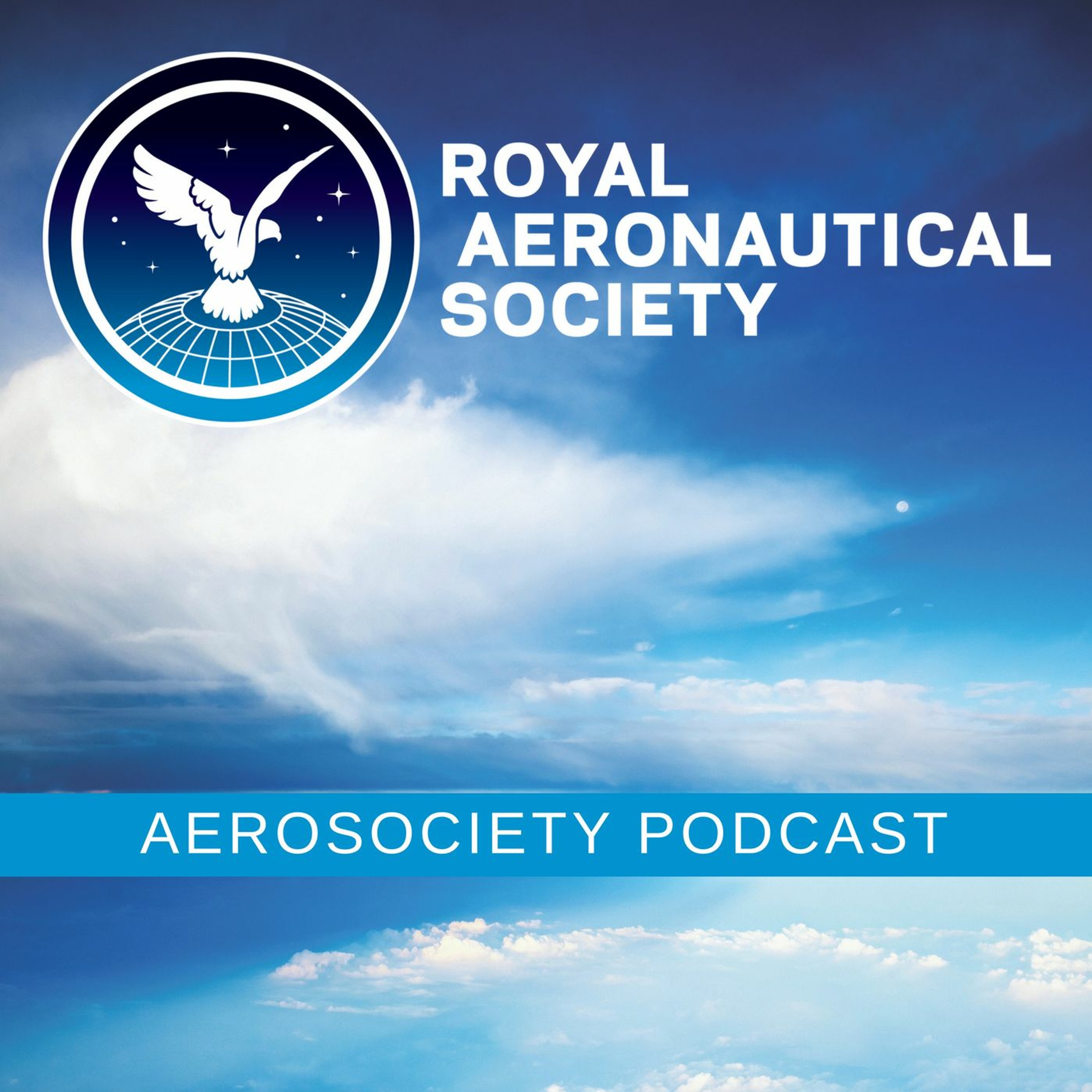
RAeS lecture: UK As A Global Space Power
The RAeS “National Space Programme” Webinar brought together leading figures from different parts of the UK Space sector to discuss the UK’s ambitions for Space in the 2020s. This webinar was sponsored by Telespazio UK : https://telespazio.co.uk/en/home The Space sector provides enabling capabilities that underpin global policy, defence, quality of life and the knowledge-based economy. In a competitive and strategically important field, the UK has set itself challenging objectives. In this webin
Dec 3, 2020 • 1:04:34
Classic lecture – The flight development of the Avro Vulcan by Tony Blackman FRAeS
The Avro Vulcan was one of Britain’s ‘most magnificent’ aeroplanes. Tony Blackman, one of the test pilots on the project, gives us an insight into the flight development programme which played such an important part in getting the delta-wing nuclear bomber ready for service. Blackman also tells us stories of the air demonstrations that spellbound the crowd at the Farnborough Air Show. The lecture concludes with a question and answer session, which includes contributions from those who flew and
Nov 30, 2020 • 49:02
Classic lecture - London's Aircraft Manufacturers by Dr Ron Smith FRAeS
London’s aircraft firms dominated the industry during the early part of the twentieth century and never more so than during World War I. In this lecture from 2012, Dr Ron Smith takes us on a tour of London’s airfields and manufacturers. As well as exploring the “Big five” – Grahame-White, Handley Page, de Havillands/Airco, Fairey & Sopwith/Hawkers – he looks at many of the smaller companies that were once found within London’s boroughs. Dr Ron Smith FRAeS addressed a meeting organised by the Roy
Nov 23, 2020 • 1:26:53
Rewind - Herschel & Planck: Europe launches the world’s largest space telescope by David Southwood
On the eve of launching the world’s largest telescope into space, the European Space Agency’s Director of Science & Robotic Exploration gives a wide-ranging lecture discussing the Herschel and Planck missions, ESA policy and programmes, ESAs astronomical work and his experience as an ESA director. The core of this lecture was an exploration of the Herschel and Planck missions. Herschel, named after Sir William Herschel who from his home in Slough discovered light beyond the visible spectrum and
Nov 16, 2020 • 1:15:29
Rewind: Boeing Commercial Airplanes at a crossroads by Jim Albaugh FRAeS
Boeing Commercial Airplanes’ CEO gives an interesting strategic view from the top of Boeing in 2011. He explores the trends affecting civil aviation, including the environmental considerations linked to the predicted expansion of airline operations and the resultant demands upon Air Traffic Management. He also sheds light on some of the manufacturing challenges encountered during the design and build of the 787 and explains some of the development options with the 777, 747-8 freighter, and wheth
Nov 9, 2020 • 51:55
Rewind: Technology of the airship by Dr Edwin Mowforth CEng MRAeS
One of the UK’s leading authorities on airship design gives a technical view of how airship design evolved from the first airship up to the mid-1970s. Mowforth also explores problems experienced in airship design in some detail, including static lift, aerodynamics, structures and materials. Dr Edwin Mowforth CEng MRAeS gave his lecture to the Airship Association Members Meeting at the Royal Aeronautical Society’s Lecture Theatre on 24 September 1975 and the podcast was edited by Eur Ing Mike Sta
Nov 9, 2020 • 1:41:55
Classic Lecture: Air Power in Ages of Austerity by Air Chief Marshal Sir Stephen Dalton FRAeS
After the financial crash of 2008 the Royal Air Force was faced with shrinking budgets. In his fascinating lecture, the then Chief of the Air Staff, Air Chief Marshal Sir Stephen Dalton, summarises historical events when the RAF had to adapt to changing threats during periods of austerity, including the Iraqi Uprising just after World War I, the Berlin Airlift and the Cold War. He also shows how flexibility, the ability to deploy rapidly and work with international and industrial partners were c
Nov 2, 2020 • 1:11:01
Classic Lecture – Into thin air & thick mud : aircraft accidents & how to survive them
A key role for the aviation medicine sector is to investigate the factors that impair our chances of safely surviving emergencies in flight. The RAF Centre of Aviation Medicine’s Head of Human Factors and Biomechanics and the principle investigator on over 130 aviation accident investigations gives a fascinating history of how we have developed our understanding of the subject before giving us his cardinal rules on surviving a crash, both for civilians and servicemen. Wg Cdr Matt Lewis MRAeS ga
Oct 26, 2020 • 55:10
Classic Lecture - Higher Education’s Contribution to Aeronautics by Prof Ian Poll FEng FRAeS
Britain’s higher education institutions have not only educated many of the world’s top aviation professionals, but academics both inside and outside aero engineering departments have made a ‘mind blowing’ contribution to the science that underpins aeronautics. Starting with the work of Sir Isaac Newton and the education of Sir George Cayley, Prof. Poll takes us on a journey exploring the late nineteenth century disagreement between Sir George Stokes and Lords Rayleigh and Kelvin on the possibili
Oct 16, 2020 • 1:33:41

The RAeS D&I Working Group presents...RAeS Council Member Kerissa Khan MRAeS
As part of our activities to celebrate Black History Month this October, we have recorded a podcast with Kerissa Khan MRAeS, RAeS Council Member and Innovation Lead for the UK FutureFlight. Tune in to hear more about her career story, what drew her to aerospace engineering, future technologies and meeting the green challenge. Kerissa also talks about the impact of Covid-19 and why diversity and inclusion matters, including what industry leaders can do to create and sustain a more diverse and inc
Oct 13, 2020 • 46:05
Classic Lecture - Maritime Air Power by Rear Admiral Tom Cunningham
The then Chief of Staff (Aviation and Carriers) gives his audience a masterful guide to the past, present and future of air power at sea, starting from when the aircraft carrier displaced the battleship as the Royal Navy's capital ship to looking forward to the commissioning of the Queen Elizabeth Class of carrier. Admiral Cunningham begins by listing the firsts achieved by the Royal Naval Air Service and how it evolved from the launch of the Mayfly in 1909, through into World War I and into th
Oct 12, 2020 • 50:13
Classic Lecture – Highlights of a life in aviation by Capt Eric ‘Winkle’ Brown HonFRAeS, RN
Legendary test pilot, Capt. Eric ‘Winkle’ Brown, highlights some of the record breaking 487 aircraft types he flew during World War II and his time at the RAE Farnborough, including the Gloster Gauntlet, the Grumman Wildcat & Hellcat, Miles M.52, General Aviation GAL.56 and the de Havilland DH 108 TG306. Brown also tells us the story of how he made the world’s first jet landing on an aircraft carrier, how he witnessed the first flight of a British jet aircraft and discusses his post-war mission
Oct 5, 2020 • 1:40:32
From the Archive – ‘Brab’ on the Wright Brothers
Lord Brabazon of Tara, the first man to hold a Royal Aero Club pilots’ licence and one of the great characters of the first 50 years of powered flight, gives a personal tribute to his contemporaries, Wilbur & Orville Wright. Lord Brabazon of Tara was giving an after-dinner speech at the Royal Aeronautical Society & the Royal Flying Club 50th Anniversary of Flight Dinner, 17 December 1953. The podcast was edited by Eur Ing Mike Stanberry FRAeS and it was digitised thanks to a grant from the Roya
Sep 28, 2020 • 16:22
From the Archive – ‘Brab’ on his first 80 years
Lord Brabazon of Tara, the first man to hold a Royal Aero Club pilots’ licence and one of the great characters of the first 50 years of powered flight, gives a masterclass on how to put together an after-dinner speech, all be it at the expense of his proposer and his hosts. Lord Brabazon of Tara was giving an after-dinner speech at his 80th Birthday Dinner organised by the Royal Aero Club, February 1964. The toast was proposed by HRH the Duke of Edinburgh, edited by Eur Ing Mike Stanberry FRAeS
Sep 28, 2020 • 24:33
Classic Lecture - Kept In The Dark: Air Intelligence & Politics in Whitehall 1939-1945
The RAF’s pilots and the codebreakers of Bletchley Park have been heralded as saviours of the nation for their work during World War II, but how did the work of Bletchley and other sources of intelligence effect the air war? In his controversial lecture, Wg Cdr Stubbington argues that a significant amount of damage was caused by the Whitehall figures whose duty was to act as the conduit between the intelligence and air services, most notably to the reputation of Bomber Command. Wg Cdr John Stubb
Sep 21, 2020 • 1:39:08
Classic Lecture - The Spin Behind the Story: The Human Centrifuge in Aero Medicine by Nicholas Green
The dangers of losing consciousness whilst flying has been a continual danger for airmen. ‘Spin Doctor’ Wg Cdr NicholasGreen gives a fascinating and entertaining history of G, G-protection and the medical and other uses of the centrifuge; a story that starts with Erasmus Darwin and Sir Harim Maxim, before moving onto the work of AVM Bill Stewart, the work of aviation medicine researchers at Farnborough and further afield and how centrifuges were used for pilot training, before making predictions
Sep 14, 2020 • 58:24
Classic Lecture – The Boxer, Utility Land Development Aircraft by David Lockspeiser FRAeS
Test pilot and aero engineer David Lockspeiser designed and built a prototype multi-purpose aircraft that could be simply built and maintained in agricultural regions across the world; and all done on a shoestring. The Boxer’s removable payload module enabled easy conversion between tasks and its rear-mounted pusher engine meant it could fly at low speeds for transporting people, livestock and cargo, as well as being used for crop spraying. In this entertaining lecture, Lockspeiser discusses the
Sep 7, 2020 • 1:36:12
Rewind – Flying in Space by Dr Piers Sellers
UK born astronaut, Dr Piers Sellers, talks about his experiences as an astronaut, flying on the US space shuttle and working on one of the last assembly missions for the International Space Station (ISS). Dr Piers Sellers gave the Royal Aeronautical Society’s 99th Wilbur & Orville Wright Memorial Lecture on 9 December 2010. The lecture was introduced by AVM D. C. Couzens FRAeS and the podcast was edited by Eur Ing Mike Stanberry FRAeS. This recording has been made available by kind permission of
Sep 1, 2020 • 50:54
An interview with……… Air Cdre Rod Banks HonFRAeS
One of the early aero engine pioneers, Air Cdre Rod Banks takes us through his eventful career. Banks fell in love with aircraft as a boy when his father took him to watch Farman fly in 1909 and it was Farman’s test pilot that first took him up in an aircraft a few years later. Too young to join the air services in World War I, Banks entered the Navy, snatching assignments with engines throughout his service, before joining the aero engines industry with Peter Hooker Ltd after the war. Banks the
Aug 24, 2020 • 44:11
Audio : Rewind – My 44 year journey through flight simulation by Wg Cdr Dick Eastman
Looking back at a career dominated by the use of flight simulation as a tool for operational training, Wg Cdr Eastman gives personal insights into flight simulation from the viewpoint of an RAF pilot, a commander of a training unit and a purchaser for the Ministry of Defence using the Public Finance Initiative. Eastman also shares his experiences of the technology used to train pilots to fly many of the aircraft used by the RAF in the last half of the twentieth century, including the BAC Jet Pro
Aug 20, 2020 • 55:58
Classic Lecture - Air Power : Past Lessons & Future Application by ACM Sir Glenn Torpy FRAeS
The Falklands, Bosnia and the two Gulf Wars presented the Royal Air Force with a myriad of different challenges. The then Chief of the Air Staff gives his audience an insight into the air power aspects of the RAF’s actions during the quarter of a century that started with the Falklands conflict, before examining the trends that dominated the period and finishes his lecture by examining what this history could teach us about the future. Air Chief Marshal Sir Glenn Torpy FRAeS delivered the Royal
Aug 13, 2020 • 1:09:26
Rewind - From the Mercury to the Buccaneer: the life & times of Robert Blackburn
In this personal history of the man and the aircraft company, the grandson and namesake of the founder of the Blackburn Aircraft Company gives an insight into the achievements of one of the ‘greats of early modern aviation’, talks through a selection of designs and explores his early life. Prof. Robert Blackburn QC, LLD, FRHistS addressed a meeting organised by the Royal Aeronautical Society’s Historical Group on 11 October 2012. The lecture was introduced by Peter Elliott and the podcast was ed
Aug 6, 2020 • 1:07:08
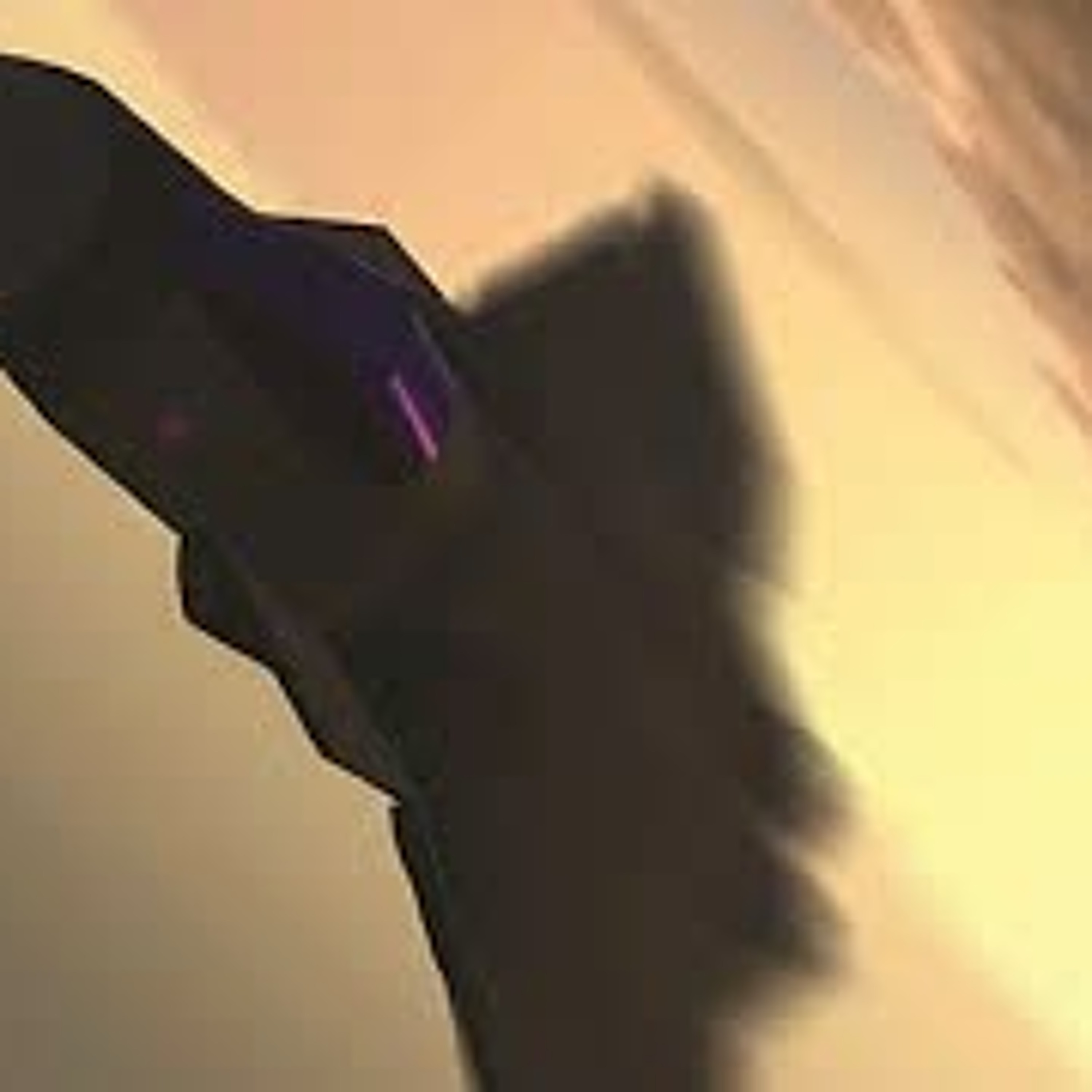
RAeS Webinar: The Supply of Future Combat Aircraft
This webinar will be delivered by Dr Michael John Pryce MRAeS, Senior Air Systems Analyst of Future Projects Research. Mike will explore the challenges in meeting the future needs for combat aircraft across the globe. He will also look at enduring issues that challenge the development and support of future combat aircraft, and how to overcome them within resource constraints and political limitations. Three main areas will be explored: - Design for Combat Air - A Low Cost Industry - Combat Air T
Aug 4, 2020 • 1:02:47
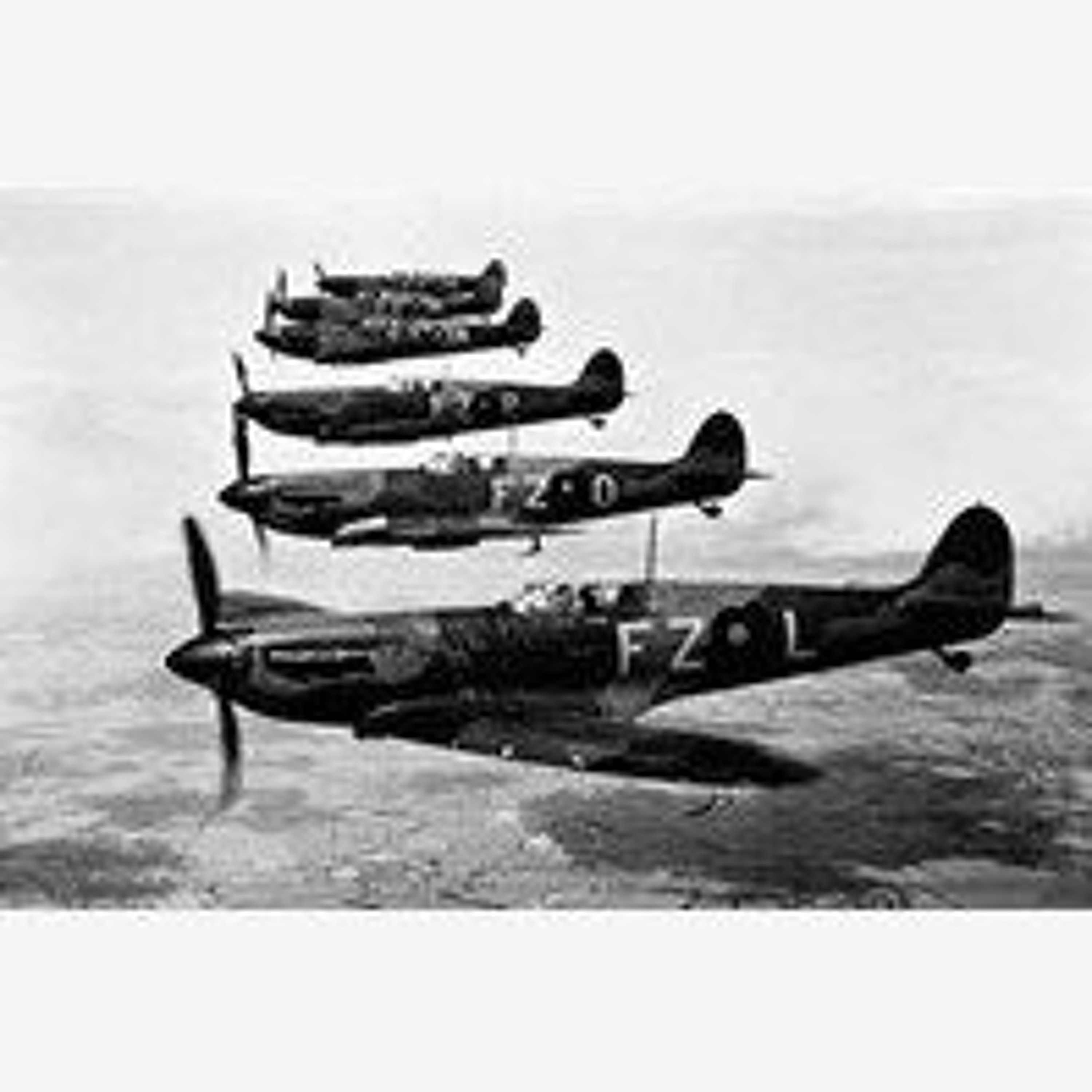
RAeS Webinar: Secrets of The Battle Of Britain
Britain has always been at the forefront of aeronautical research and development. When it was really needed, the country’s industry, research establishments and individuals stepped up to the mark – that was the summer of 1940. Today, we call the period between 10 July and 31 October of that year the Battle of Britain. This is the 80th year when RAF Fighter Command’s aircrew were the first line of defence – the tip of a long spear which included essential workers, civilians and those in uniform;
Aug 4, 2020 • 58:38

RAeS Webinar: Artificial Intelligence and Aviation
Great technical strides in Artificial intelligence (AI) over the last ten years have seen machines rival or exceed human capabilities in multiple fields, including transport, life sciences, entertainment, retail and finance. AI, and particularly machine learning, has the potential to disrupt industries and change society by automating automation itself and doing so at an increasing rate. Yet, current AI also has fundamental technical shortcomings, such as a lack of transparency, a vulnerability
Aug 4, 2020 • 1:51:08
Classic Lecture – Integration : man & machine by Andrew Warner FRAeS
Classic Lecture – Integration : man & machine by Andrew Warner FRAeS by AeroSociety Podcast
Jul 30, 2020 • 1:23:13
Classic Lecture – The Rise and Fall of the Hawker Siddeley P.1154 by Dr Michael Pryce
Planned to succeed the Harrier even before the Harrier, flew, the P.1154 was the joint winner of a NATO competition to produce an advanced S/VTOL aircraft. Michael Pryce tells a fascinating but familiar story of how organisational, financial, technical, and political problems collided leading to Denis Healy cancelling the project in 1965. Pryce then examines the project’s legacy, both technically and as a lesson in advanced project planning. The lecture is followed by a wide-ranging question and
Jul 13, 2020 • 1:21:18
Classic Lecture – F-35 Lightning II Flight Test Update by Graham Tomlinson
In this fascinating insight into the early flight testing of Lockheed Martin's Lightning F-35B, BAE Systems test pilot Graham Tomlinson takes us through the programme to develop the stealthy, multi-role attack aircraft and explains many of the challenges that faced the test phase of the project. The lecture and question and answer session include comparisons between the Lightning and the Harrier, anomalies found within the fly-by-wire systems and how modern flight simulators have advanced to sup
Jul 6, 2020 • 1:36:01
Classic Lecture - 'Offers They Couldn't Refuse' : Mergers in the UK Aircraft Industry, 1957-1962
Prof Keith Hayward takes us down the corridors of power and into the boardrooms to show us how the Government issued Britain’s iconic aircraft companies with ‘offers they could not refuse’ and, so doing, transformed the industry. A mixture of The Godfather and Yes Minister, Hayward chronicles the struggles between companies and individuals, shows the broken engagements and draws light on the ghostly figures in the background and the archvillain, Duncan Sandys. Prof Keith Hayward FRAeS addressed
Jun 29, 2020 • 1:51:04
Classic Lecture - Curiosity, The Next Mars Rover by Dr Matt Wallace
NASA's Matt Wallace, of the Mars Science Lab, describes the development and testing of the Mars Curiosity rover - a ground-breaking mission delivering the largest ever rover to date to the Martian surface via an innovative 'Sky Crane' descent system. Dr Matt Wallace addressed a meeting organised by the Royal Aeronautical Society’s Space Group on 17 July 2012. The podcast was edited by Mike Stanberry FRAeS.
Jun 22, 2020 • 1:18:04
Classic Lecture - Pilot Training in the RFC & RAF, 1912-18 by Wg. Cdr. Jeff Jefford
The army’s first pilots were gentlemen trained by civilian schools and then, if accepted into the air battalion, their expenses were reimbursed. Wg. Cdr. Jeff Jefford tells the fascinating story of how pilot training evolved in peacetime and was revolutionised in the heat of war, most notably by Major Robert Smith-Barry and his Gosport System. Wg. Cdr. Jeff Jefford addressed a meeting organised by the Royal Aeronautical Society’s Historical Group on 8 November 2012. The lecture is introduced by
Jun 15, 2020 • 1:28:02
Rewind - The first attempt to fly round the world by Wg. Cdr. Norman Macmillan
On Empire Day 1922 three men set out to be the first to fly around the world, via Calcutta and Vancouver. The pilot, Wg. Cdr. Norman Macmillan, tells the boys-own adventure of how they took off in an untested aircraft and, with a less than perfect route, flew over parts of Europe, Africa, the Middle East and India, before their attempt failed in the Bay of Bengal. Wg. Cdr. Norman Macmillan addressed a meeting organised by the Royal Aeronautical Society’s Historical Group on 28 October 1963. The
Jun 8, 2020 • 2:01:44
From the Archive - Sir Roy Fedden on interwar engines & the wartime German aircraft industry
“A giant among those pioneers who put our country in the forefront in the field of aero engines between the two World Wars”, he was the brain behind the Jupiter engine and set up Bristol Aeroplane Company’s engine division. In these reminiscences, Fedden discusses his early life and career, how he became involved in designing aero engines and gives insights into his time at Bristol. Fedden left Bristol in 1942 and became a consultant at the Ministry of Aviation. He discusses his mission to Germ
Jun 1, 2020 • 25:19
Alan Bristow Memorial Lecture 2020
Lee Evans, Senior Test Pilot at Leonardo Company delivered an incredible aviation story about operating Lynx helicopters to a Royal Navy ice breaker in the harshest environment on our planet. Using incredible video footage and photographs from his time as a Fleet Air Arm pilot on-board HMS Endurance, Lee highlighted the challenges of operating helicopters in Antarctica – the harshest environment on Earth. He talked about the history of Antarctic helicopter Aviation and how shipborne helicopters
May 29, 2020 • 56:03
Rewind - Aviation In The Antarctic : my sixty years on ice by Dr Charles Swithinbank
Glaciologist, qualified pilot and experienced navigator Dr Charles Swithinbank spent sixty years using aeroplanes to help him study ice sheets in an era when the aeroplane was replacing dogs and boats as the main way of studying and visiting the polar regions. In this lecture he retells many fascinating stories from his career, including pioneering the use of radar on aircraft to measure the thickness of ice, finding natural runways suitable for the landing of aircraft of any size and in his 80s
May 26, 2020 • 1:22:32
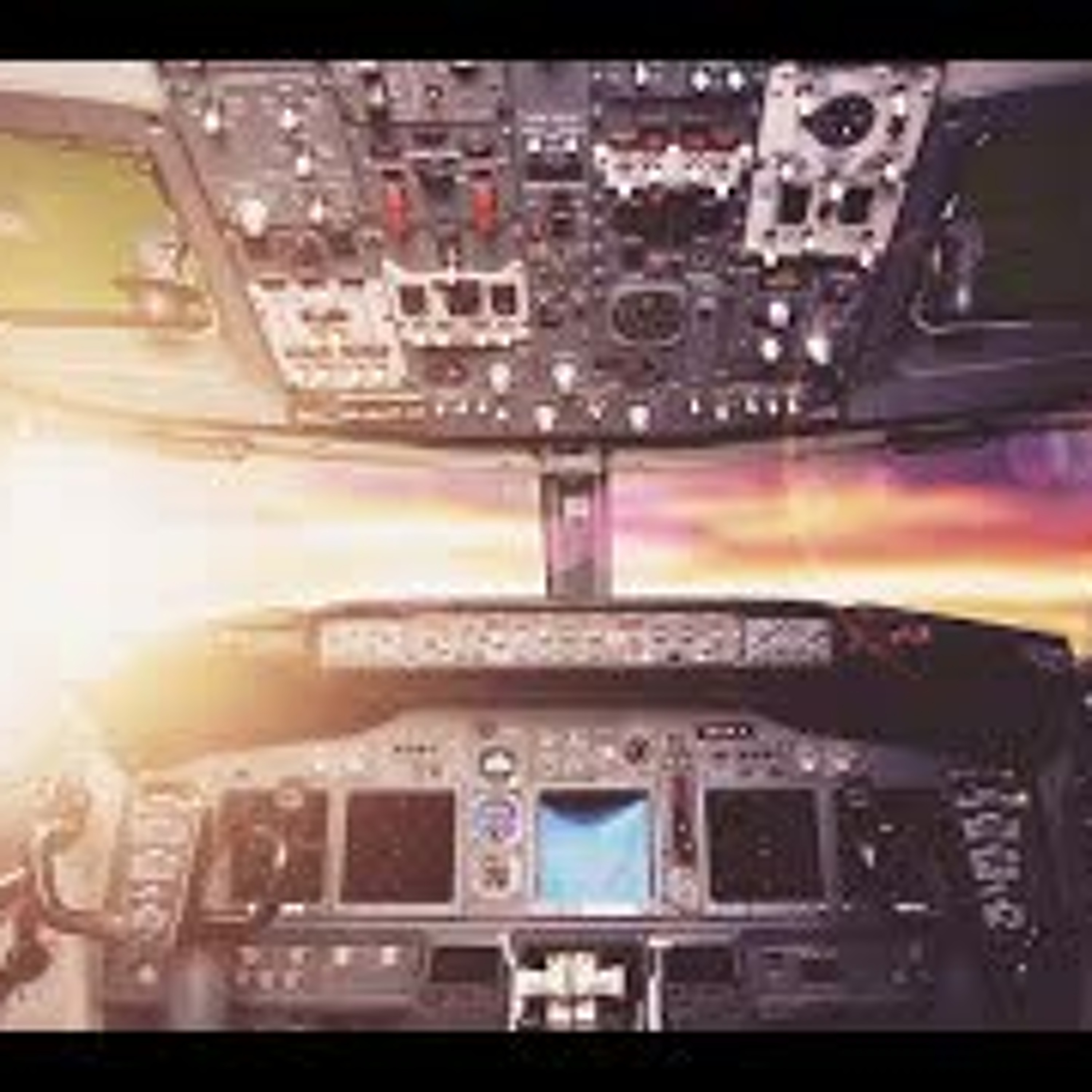
Mental Wellbeing and Human Performance
This webinar will focus on the new EASA regulation that airlines operating in Europe must implement by Autumn 2020 and also offer a unique opportunity to preview what the Conference in 2021 will have to offer. The FSF have published a document on aviation professionals maintaining personal wellbeing both under current circumstances and more broadly. The Guide is a short practical document, based on academic research, that is intended for individual use and can be found at the FSF website on the
May 18, 2020 • 1:08:19
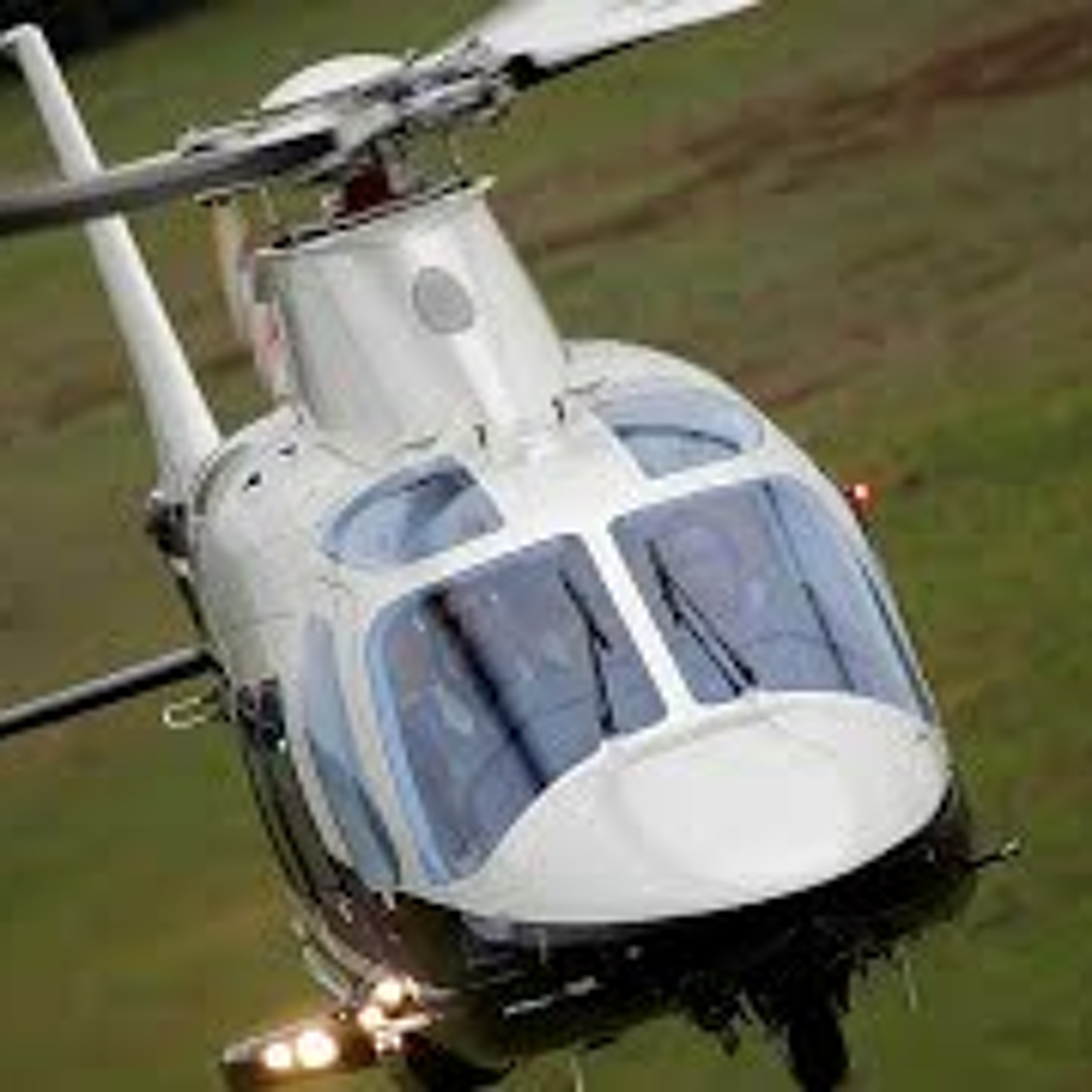
COVID-19: Helicopter transport – challenges & experience
The COVID 19 outbreak has presented challenges worldwide to the helicopter operator. A mixture of military, civil utility and aeromedical helicopters have been pressed into service to transport patients, and the rapid development of the pandemic has allowed little time for ‘best practice’ to be developed. In the face of operational pressures manufacturers, military regulators and operators have pressed solutions into service to meet demand. The purpose of this webinar will be to provide for the
May 18, 2020 • 1:53:26
Rewind - Handling the Olympic and Paralympic traffic at Heathrow by Andy Garner FRAeS
Putting tens of thousands of extra people through an airport in a short period is always a challenge, especially if they have three times the average amount of luggage containing such things as firearms, specialist wheelchairs and canoes – now try putting it through the world’s third busiest airport; a bad press might affect future plans and, by the way, twenty thousand of those additional customers are from the world’s media. Andy Garner, BAA’s London 2012 Director and the man responsible for
May 18, 2020 • 54:59
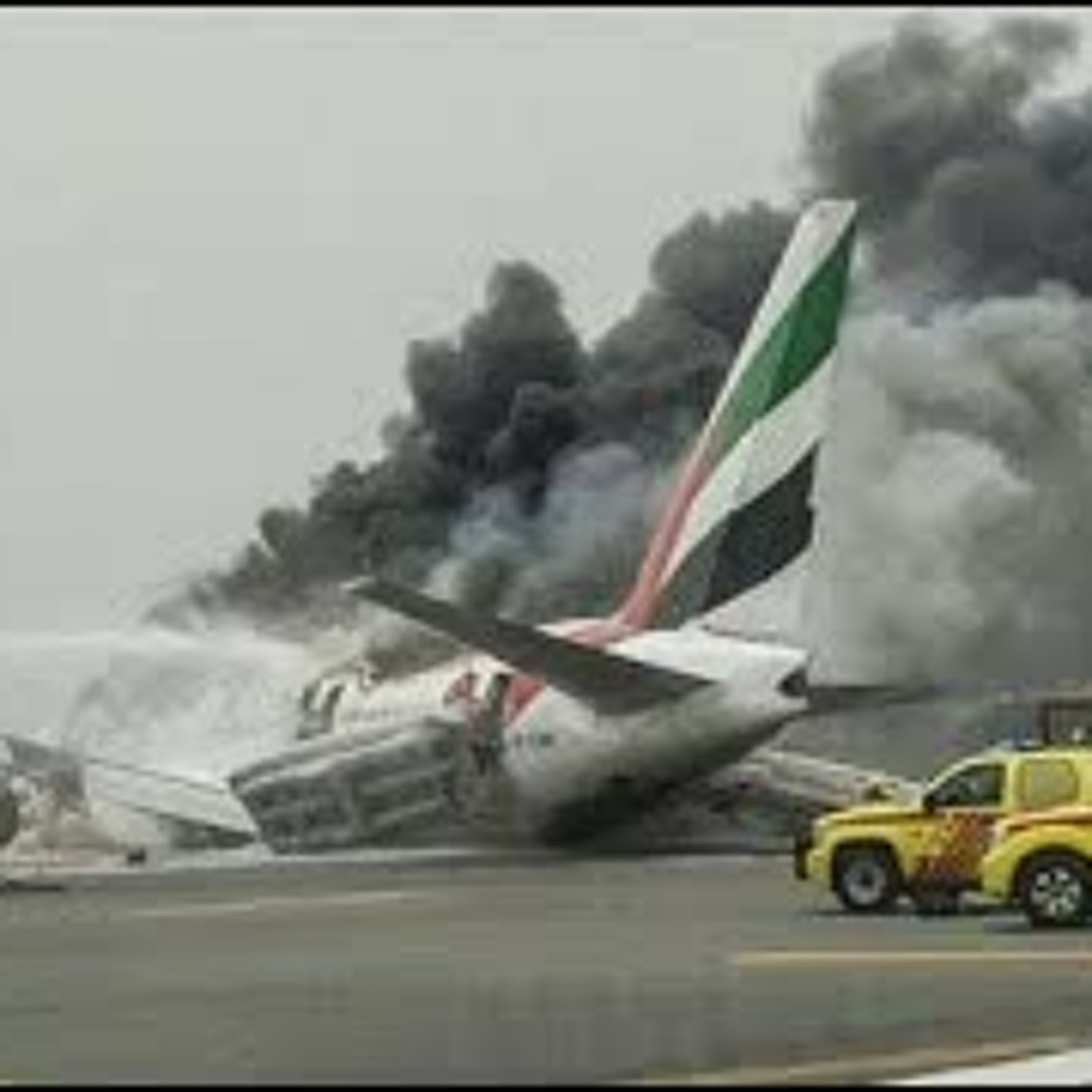
The Boeing 777 Accident at Dubai Airport (2016) - Lessons to be Learnt
On 3 August 2016, a Boeing 777-300 crash landed on the runway at Dubai, UEA, after an attempted ‘go-around’. On board were 282 passengers, two flight crew and 16 cabin crew. As the aeroplane slid along the runway, the No.2 (right) engine separated from the wing and there was an intense fuel fire in this area, as well as fire to the No.1 (left) engine. After the aeroplane came to a stop the Commander ordered the evacuation, but because of the high winds and the external fire there were several is
May 18, 2020 • 1:03:05
Rewind - The R.101 Airship Disaster - 80 years on by Peter Davison & Dr Giles Camplin
The dreams of British airship designers literally went up in smoke when the R.101 crashed, killing 48 onboard, including the Air Minister Lord Thomson and Sir Sefton Brancker, the legendary Director of Civil Aviation. After taking us through the development of the British airship programme, Peter Davison & Giles Camplin discuss the R.101 development programme, the run up to the airship’s departure on 4 November 1930 and their view of the events that happened in the early hours of 5 November. Pet
May 12, 2020 • 1:32:49
Rewind – Vulcan to the Sky : return of the Vulcan…nearly there by Dr Robert Pleming FRAeS
“There is something special…. about big delta aeroplanes. Somehow Concorde and the Vulcan capture the public imagination like no other jet aircraft.” 14 years after its last flight & with over £7 million spent, Vulcan XH558 roared into the air on 18 October 2007. Five months before the launch and right at the end of the project’s restoration phase, Robert Pleming, Chief Executive of Vulcan to the Sky Trust, gave members of the RAeS Historical Group insights into the technical and non-technical
May 5, 2020 • 1:03:18
Classic Lecture: The U-2 Reconnaissance Aircraft Incident of 1 May 1960 by Chris Pocock
The Cold War hotted up sixty years ago when a Lockheed U-2 spy plane, nicknamed "Dragon Lady", was shot down by a surface-to-air missile during a mission over the Soviet Union. In his lecture, historian Chris Pocock tells us the fascinating background history behind the series of missions that led to one of the USA’s most embarrassing post-war incidents. Chris Pocock addressed a joint meeting of the Royal Aeronautical Society’s Historical & Air Power Groups on 15 April 2010 and the podcast was e
May 1, 2020 • 1:45:26
Rewind: Circuits & Splashes: The History, Design and Flying of Water Aircraft by Capt Tony Irwin
Water aircraft captain Tony Irwin gives us insights into the world of marine aircraft, both past and present. After giving a brief history of water flying he explores the aircraft he has experienced through his long career, discusses his work developing the Seawind water plane, highlights the challenges faced by those designing and flying water planes and how they have been overcome, whilst telling anecdotes along the way. Capt. Tony Irwin addressed a meeting of the Royal Aeronautical Society’s
Apr 22, 2020 • 1:00:30
Classic Lecture: Cody and Roe - Two Remarkable Men by Philip Jarrett HonCRAeS
The race to be the first man in the UK to fly a powered aircraft brought two towering figures to the fore; the former cowboy and showman S. F. Cody, and the man who went on to form and run one of the UK’s major aircraft firms, A. V. Roe. Philip Jarrett takes us through the evolution of each man’s aircraft up to the first UK flight in 1908, before exploring how they both adapted their designs during the early days of the new era. The lecture is followed by a wide-ranging question and answer sessi
Apr 14, 2020 • 1:33:09
Classic Lecture: Recollections of a Pioneer, Igor Sikorsky by Sergei Sikorsky
In his fascinating and entertaining history of aeronautics, the son of Igor Sikorsky weaves his father’s story into the achievements of his fellow pioneers in the science and industry of powered flight. Sergei Sikorsky draws on his father’s views of figures such as Otto Lilienthal, the Wright Brothers and Charles Lindbergh to tell the story of Igor Sikorsky’s career designing and building aircraft in Imperial Russia, France and the USA before moving back to his first love, the helicopter. Sergei
Apr 7, 2020 • 47:12
Classic Lecture Series: 55 years of flying fun by Clive Rustin FRAeS
RAE and Fast Jet Test Squadron test pilot Clive Rustin recounts stories from some of the 165 aircraft types he flew over half a century of “flying fun”. Clive starts this barnstorming lecture by explaining how he moved into test flying to pursue his love of flying and to ensure that his father, whose hard work paid for him to go through university, did not think he had wasted his Chemical Engineering degree. After a time flying Hawker Hunters and English Electric Lightnings, he passed through th
Mar 31, 2020 • 1:36:21
Classic Lecture Series: The Real Space Race – Spy Satellites in the Cold War by Pat Norris FRAeS
Using the skies to monitor your foe is an essential part of the nuclear age; a task that was made more difficult once the crash of the American U-2 aircraft made it clear that it was too dangerous to use observation aircraft. Starting the story from the dropping of the first atom bomb, Pat Norris explores how and why satellites system such the USA’s CORONA and the USSR’s Zenit 2 were developed and used, before exploring what lessons can be learnt today. The lecture was addressed to the Royal Aer
Mar 23, 2020 • 1:18:27
From the Archive: F. M. Green on life at the Royal Aircraft Factory, 1910-17
Early aircraft designer, F. M. Green, talks about the best and most exciting years of his life – working at the Government’s aircraft factory in Farnborough, the precursor to the Royal Aircraft Establishment. In this short recording, he discusses his work on airships, how he helped to recruit Geoffrey de Havilland and their joint work “reconstructing” aircraft, such as the Royal Aircraft Factory BE2. The podcast was edited by Mike Stanberry FRAeS.
Mar 23, 2020 • 5:22
Classic Lecture Series - The Short Brothers before and after 1909 by Gordon Bruce FRAeS
Short Brothers were the first UK company to manufacture aeroplanes. On the one hundredth anniversary of the opening of their first aeroplane works, Gordon Bruce recounts the amazing story of how two of the three brothers became entranced by flying machines and, now joined by the third brother, produce their first powered aircraft and build versions of the Wright A aircraft. He then explores the ups and downs of the company’s history over the following century, both in Kent and in Belfast. The le
Feb 21, 2020 • 1:54:25
Classic Lecture Series – From gliders to jets : Hiller X-18 & Fairchild C-123 by Don Richardson
A test-bed for tiltwing and V/STOL aircraft and flexible assault transport aircraft both started life as a large assault glider in 1948. Both projects evolved with the demands of the United States Air Force and advances in technology, and both provided excitement and challenges for its designers and engineers, including a young Don Richardson. The lecture was addressed to the Royal Aeronautical Society’s Historical Group on 11 May 2006, the podcast was edited by Mike Stanberry FRAeS and it was
Feb 21, 2020 • 1:09:27
Affordable air power in the future: 'fully comp' or third party, fire & theft? By Sir Brian Burridge
What level of air power insurance should we take out and which add-ons should we get? Analysing the suite of air power options available in 2007 and where technology might take them, Sir Brian takes us through the six core roles of air power with the aim of addressing the questions of what is a sensible insurance policy for the future, how much capability risk can a nation take in reducing the premium it needs to pay, whether super-powers are the only ones who can afford “fully comp” and what co
Feb 21, 2020 • 58:06
Classic Lecture Series: Looking ahead with hindsight by Sir George Edwards Hon FRAeS
From the bouncing bomb to Concorde, one of the towering figures in post-war aeronautics gives a tour-de-force on his careers and the lessons that he learned along the way or, as he put it, “it is a great temptation when you are my age…to blather away about all of the things that you did in the past and it is a temptation quite frankly that I didn’t resist”. In 1934 Sir George fancied “a dabble in the aeroplane racket” and started as a draftsman at Vickers, before working with Barnes Wallis, Syd
Dec 23, 2019 • 1:16:58
Classic Lecture Series: Whittle, the legacy, by Sir Ralph Robins Hon FRAeS
Sir Frank Whittle’s work on the jet engine was arguably the most important mechanical engineering feat of the twentieth century. In the first RAeS Whittle lecture, the then Chairman of Rolls-Royce plc reviews the first sixty years development of Whittle’s basic ideas before exploring upcoming major advances along with the ongoing challenges to reduce product and operating costs. The inaugural Whittle Lecture took place on 4th February 1997, the podcast was edited by Mike Stanberry FRAeS and it
Dec 23, 2019 • 39:44
Classic Lecture Series: What now for the aerospace industry? by Sir Charles Masefield
In 1997 the leaders of Britain, Germany & France threw down the gauntlet to Europe’s aerospace companies, telling them to work together in order to succeed. In his Wilbur & Orville Wright Lecture, the former test pilot, President of BAe Commercial Aircraft, Commercial Director of Airbus and the then Head of the Defence Export Service Department at the MOD, explores the functions at play that led to the announcement and the unique issues and challenges that faced the airframe and platform integra
Dec 23, 2019 • 59:49
The 50th Stewart Memorial Lecture
The first Stewart Memorial Lecture was given fifty years ago at the Royal Aeronautical Society. Over the ensuing half-century, these eponymous lectures have charted the development of aerospace medicine through the eyes of those who have, through their lecture, commemorated the life and work of Air Vice-Marshal Bill Stewart. Many of those lecturers, whether from the UK or elsewhere, have worked at the former RAF Institute of Aviation Medicine (IAM) or its successor, the Centre of Aviation Medici
Dec 18, 2019 • 51:01
Classic Lecture Series - The Brabazon Committees by Sir Peter Masefield
The Vickers Viscount, the de Havilland Comet, the Airspeed Ambassador and many other civil aircraft designs of the 1940s and 1950s were specified by the recommendations made by three wartime government committees; two chaired by Lord Brabazon, affectionally known as ‘Brab’ and a third by Lord Beaverbrook. Sir Peter Masefield, secretary to the Beaverbrook Committee and later Chief Executive of BEA gives us an insider view of the work of the Committees, the projects they inspired and the personali
Nov 25, 2019 • 59:12
Classic Lecture Series - Aerospace in the 21st century by Alan Mulally
Boeing’s then President of Space & Defense Systems, Alan Mulally, explores the force of change that faced the aerospace industry at the dawn of the information age. Mulally starts his lecture by outlining the projects that dominated the company’s work in 1997, from civil projects such as the 737, 757 and 777, military projects such as the Joint Strike Fighter and space and defence projects including missiles and the International Space Station. Turning to the predictions of the futurists, he h
Nov 25, 2019 • 41:00
An interview with.... Col. Joe Kittinger
High-altitude balloonist and parachute pioneer Joe Kittinger recalls stories from his career at the forefront of aeronautical research. After discussing his happy childhood, Kittinger explores his early career as a research and development test pilot during the 1950s and 1960s. He swiftly specialised in aero-medical projects, including studies on the effect on humans in zero gravity, during rapid deceleration and in high-altitude escape; such projects led him to jump from the edge of space and b
Nov 25, 2019 • 56:21
Modern Airline Fleet Planning – Art or Science?
Choosing the right aircraft is just about the most important decision an airline can ever take, and it’s far from easy. Fleet planners need to consider not just the technical and operational characteristics of a bewildering array of aircraft types on offer, but they must also decide which aircraft is the best fit for the network, both today and a long time into the future. It’s not an easy task to analyse everything and make a recommendation. A wrong decision can prove disastrous, both for decis
Nov 20, 2019 • 47:19
Sopwith Lecture 2019
Sopwith Named Lecture was established in 1990 to honour Sir Thomas Sopwith CBE, Hon FRAeS. This year it was presented by Billie Flynn, F-35 Lightning II Test Pilot at Lockheed Martin who will talk about the transformational capabilities of the F-35 Lightning II, and his experiences of putting the aircraft through rigorous testing. The presentation covered areas such as advanced technologies, stealth, sensor fusion, air-to-air and air-to-ground capabilities, electronic warfare, ISR, and interoper
Nov 19, 2019 • 39:32
Classic Lecture Series: Observations on the First Fifty Years of the R.A.F. by AM Sir Victor Goddard
In his insider’s history of the first fifty years of the R.A.F., Sir Victor Goddard gives insights into the forces and personalities that formed and developed the RAF and made it into an equal partner with the other two armed services. Sir Victor’s career covered the pioneering years of service aviation; from a cadet in 1912 who co-presented to the Admiralty a scheme for an aircraft bombsight to a seat on the Air Council and a role contributing to the Berlin Airlift. From this insider’s view he
Oct 25, 2019 • 1:03:47
Classic Lecture Series: The R.N.A.S. & R.F.C. by ACM Sir Philip Joubert de la Ferte
Packed with stories of the great men he knew and served under, the former R.F.C and R.A.F. flying officer gives us insights into the army’s and navy’s flying services and the wider aeronautical community before and during the First World War. Sir Philip then turns to how these men considered the arguments of forming a joint service and how they went onto create the Royal Air Force in 1918. The lecture was delivered to the Royal Aeronautical Society's Historical Group on 25 February 1963. The po
Oct 25, 2019 • 1:06:36
From the archive: Sir Geoffrey de Havilland on his early days in aeronautics
Sir Geoffrey tells the stories of his first aeroplanes, the de Havilland Biplane No. 1 and how he improved it to become the de Havilland Biplane No. 2, before turning the story of how he created the Royal Aircraft Factory B.E.1 and the work of Edward T. Busk to improve the aircraft’s stability. The podcast was edited by Mike Stanberry FRAeS and it was digitised thanks to a grant from the Royal Aeronautical Society Foundation.
Oct 25, 2019 • 4:20
Forward to the Moon: NASA’s Strategic Plan for Lunar Exploration
NASA has led the charge in space exploration for the last 60 years, and through the Artemis program, NASA will once again set the tone and pave the way beyond low-Earth orbit to the Moon. By 2024, NASA will land the first American woman and the next American man on the South Pole of the moon, establishing a sustained presence on the moon by 2028, preparing us for human exploration missions to Mars. Dr. Jim Green, Chief Scientist at NASA will delve deeper into these future plans, demonstrating th
Sep 23, 2019 • 46:31
From the Archive: How to fly an aircraft by Sir Alan Cobham Hon. FRAeS
Join Sir Alan Cobham in the front seat of his de Havilland Moth for our first flying lesson. After starting the engine and taking off, the man whose panache and vision brought aviation to the people between in the 1920s and 1930s, stylishly talks us through the controls and explains how they affect flight, before taking us back down safely back to earth. The recording was edited by Mike Stanberry FRAeS and it was digitised thanks to a grant from the Royal Aeronautical Society Foundation.
Sep 17, 2019 • 7:10
The men who gave us wings : Britain and the aeroplane 1796-1914 by Peter Reese
The fascinating stories of the men who dreamed to conquer powered flight, those who harnessed the new technology and were tested by the early months of World War I are told by Peter Reese in this podcast. The path towards manned flight was far from straightforward. Starting with the gifted inventor Sir George Cayley, the father of modern aerodynamics, Reese moves to those who made further steps towards flight, such as Henson, Stringfellow and Pilcher, before examining the work of the Wright Bro
Sep 17, 2019 • 45:18
The rise, fall & rebirth of UK commercial aircraft development 1945-78 by Keith Hayward
Keith Hayward takes us along the corridors of Whitehall and into aero industry boardrooms to chronicle the false dawns and missed opportunities of the first thirty-three years after World War II. Starting with the Brabazon recommendations, he illustrates the competing interests of politicians, the aircraft industry and the airlines by examining project such as de Havilland’s Comet and Trident, the Vickers VC10 and the Airbus programme. The story ends when he reaches the “vale of tears in the ear
Sep 17, 2019 • 1:38:23
NASA Aeronautics and Strategy
Aviation is changing – from emerging UAS operations to Urban Air Mobility which is next on the horizon; to the re-emergence of supersonic transportation that will once again shrink our globe; to alternative fuels and electric propulsion for a greener future, aviation is on the move. Research, convergence, and entrepreneurialism is the driver for this exciting and impactful change. The NASA Aeronautics portfolio is tuned to deliver key enablers for this change. But NASA Aeronautics must also evol
Sep 2, 2019 • 47:04
Classic Lecture Series: The Miles M.52 project by Mike Hirst
Miles 1940s supersonic aircraft project could have been the first aircraft to break the sound barrier. Though the project was championed by Sir Frank Whittle, who worked with Miles to supply the engine, and was supported by the scientists at the RAE in Farnborough. However, the reasons surrounding the UK Government's secretive cancellation of the project has long been a mystery. In this lecture to the Royal Aeronautical Society's Historical Group, Mike Hirst explores the technical and political
Aug 23, 2019 • 2:12:06
Classic Lecture Series: Reminiscences of a Schneider Trophy Pilot by Group Capt. L.S. Snaith
Member of the victorious 1931 Schneider Trophy team, Group Capt. L.S. Snaith, gives a historical background to the Schneider Trophy contests before he gives insights into the last contest and the handling characteristics of the victorious Supermarine S6A & S6B. The recording was produced by Martin Snaith and was edited by Mike Stanberry FRAeS.
Aug 23, 2019 • 43:33
Classic Lectures: 50 Years of Engineering Learning - a lifetime with aero engines by F. R. Banks
One of the early aero engine pioneers, Air Cdre Rod Banks takes us thorough his early career working for Peter Hooker Ltd who held the British licences for Gnome and Le Rhone, the developments in fuel during these years and the part he played in concocting special fuel cocktails for the Schneider Trophy contests and the development of British and European military aero engines before and during the Second World War. The lecture was delivered to the Royal Aeronautical Society's Historical Group L
Aug 23, 2019 • 1:20:20
The Wright influence in Europe by Philip Jarrett
A year before their famous flight, the Wright Brothers’ seminal paper explaining their work with gliders awoke Europeans from the self-confessed torpor and set them experimenting; efforts which were reinvigorated by the Wrights’ flying demonstrations during their 1908 European tour. In this paper, Philip Jarrett takes his audience through the work of Europeans, most notably the French, during the first decade of the twentieth century. The lecture concludes with a question and answer session. T
Jul 19, 2019 • 43:49
Scientific & technical aspects of the Wrights’ achievement by Prof. D. I. A. Poll
Though Wilbur and Orville were the first to build and fly a powered aircraft, what contribution did the Wright Brothers make to aeronautics? In this paper, Ian Poll takes us through the progress that had been made up 1903 in four key technical areas which had to be addressed if powered, controllable flight was to be achieved: structures, aerodynamics, stability and control & propulsion, before judging the contribution made by the Wrights in those four key areas. The lecture concludes with a gene
Jul 19, 2019 • 44:51
The Wright Brothers : the United Kingdom connection by Gordon Bruce
In the concluding paper of The beginnings of powered flight conference, Gordon Bruce explores the relationship between the Wright Brothers and the land of their ancestors. Starting off by looking at how UK aeronautical figures shaped Orville and Wilbur’s thinking, Bruce tells the story of the UK Government’s reaction to their invention, how the Wrights worked with Shorts to manufacture the Short-Wright aircraft for the civil market, how a disagreement with the Smithsonian led to the 1903 Wright
Jul 19, 2019 • 1:04:05
Alan Bristow Memorial Lecture 2019 with Mark Alber
The Alan Bristow Memorial Lecture is held annually to highlight the legacy of the man who founded the largest international helicopter group that continues to bear his name. Alan was a true pioneer, a great innovator and fully supported progressive ideas for developing all aspects of aviation, in particular, Rotorcraft. Bristow continues to operate in this spirit, leading the industry in innovations, many of which are now standard in today’s operating environment.
Jul 10, 2019 • 46:40
Natter - Historic Step To Human Spaceflight
This Historical Group lecture will be presented by Brett Gooden, M.D., Ph.D., F.B.I.S. who will consider the world’s first manned vertical take-off rocket and its significance in relation to human spaceflight to come. Brett will describe the historic but tragic manned flight of a prototype Natter on 1 March 1945 and the critical lessons learned from it for future human vertical rocket flights. In the space of less than one year a team of engineers under the leadership of the talented engineer Er
Jul 8, 2019 • 59:14
Air Law Summer Lecture
John Harrison, Airbus’ General Counsel, has offered his thinking on how Airbus is navigating the ever-changing nature of global trade and politics. As Airbus celebrates 50 years, Mr Harrison will outline Airbus’ response to a challenging global environment, whether it be protectionism in Europe, WTO disputes or Brexit.
Jun 25, 2019 • 34:33
Twelve seconds that changed the world: the Wrights’ achievement of flight, 1903 by Peter L. Jakab
Wilbur and Orville Wright placed their names firmly in the pantheon of great American inventors and their creation of the world’s first successful, powered, heavier-than-air flying machine and inaugurated the aerial age, one of the defining characteristics of the twentieth century. In this paper, Peter Jakab takes us through the life and early career of Wilbur and Orville Wright, their approach to invention and how they developed their theories and their aircraft up to the momentous events of 1
Jun 20, 2019 • 41:42
The Americans, the Wrights & the early history of inventing flight by Richard P. Hallion
After the death of Otto Lilienthal, the vital impulse compelling research on man-flight passed from Europe to America. In this paper, Dick Hallion looks at the two of the Wright Brothers immediate contemporaries, Octave Chanute and Samuel Langley, before moving onto the early life and work of Wilbur and Orville Wright and the selection of Kitty Hawk as their test ground. The lecture concludes with a question and answer session. The lecture was part of a seminar, "The beginnings of powered fligh
Jun 20, 2019 • 58:36
From antiquity to the era of the Wrights by J. A. D. Ackroyd
Covering 2000 years of history in 40 minutes flat, John Ackroyd outlines the scientific and the practical paths to achieving powered flight. Starting with the theoretical achievements made by, amongst others, Sir Isaac Newton and Sir George Cayley, and the developments in aerodynamic knowledge brought by experiments of the whirling arm and an understanding of fluid flow, John Ackroyd moves onto looking at the late nineteenth century aircraft concepts of John Stringfellow, Horatio Philips, Otto L
Jun 20, 2019 • 53:18
An interview with…. Capt Hugh Dibely FRAeS on flying in the civil jet age
Captain Hugh Dibley FRAeS careers started at the dawn of the civil jet age, with the navigator using the stars as a guide. In this interview with AEROSPACE’s Tim Robinson, he describes life in the cockpit from the piston-engined airliners such as the Douglas DC7, to the de Havilland Comet, to Boeing 707 and 747 right up until Airbus FBW, as well a second career as racing driver in the swinging 60s and the clash in cultures between BEA and BOAC. Hugh Dibley was interviewed by Tim Robinson in 20
May 29, 2019 • 1:26:11
RAF Mental Health Services: Organisation. Delivery. Impact.
This Aerospace Medicine Group lecture presented by WO James Parkin RNMH BSc Hons, Specialist Nurse Advisor Mental Health, Royal Air Force. The lecture objectives are: - To explain how occupational mental health services are delivered in Defence and what the UK laydown is - To explain the care pathways and service provision of occupational mental health to Aircrew, ATC and RPAS Aircrew - To share annual outcome data of care pathways and return to unrestricted duties for those groups - To share th
May 22, 2019 • 33:45
An interview with…… Mike Savage on more selling with BAC
In this last part of his interview, aerospace PR man Mike Savage tells us about being the sole passenger on an Eastern Airlines Constellation; the incident aboard the banana freight DC-4 from South America to Miami, the piano-playing Dr Omar Fontana buying BAC 1-11s for cash, the incident of the exploding cigar at the BAC chalet at Farnborough; the lost BAC promotional radio tape in New Zealand; the Omani Royal VC10 and how Mike and the entire crew of a Saab 2000 were arrested for two days by mi
Apr 23, 2019 • 43:56
An interview with…… Mike Savage on selling with BAC
Touring the world in Concorde was a key part of Mike Savage’s public relations work for the British Aircraft Corporation. After explaining why he chose to leave the ailing Handley Page Limited, he tells stories of his early days at BAC including selling the BAC 1-11 to Gulf Aviation and why a Japanese man fell through a toilet floor, before moving onto his part in promotional and endurance testing flights in the Aerospatiale/BAC Concorde, including conversations with the Archbishop of Canterbury
Apr 23, 2019 • 33:48
An interview with…… Mike Savage on selling with Handley Page & his de Havillands apprenticeship
Aerospace public relations legend Mike Savage tells stories about his apprenticeship at de Havillands, including his interview that ended up with Mike, Geoffrey de Havilland and the entire interview board firing off toy rockets and being part of a recording-breaking team to break the long-distance record for driving a lawnmower from Edinburgh to London. After his time at Hatfield and a spell in the RAF, Mike’s move to Handley Page's public relations department created more anecdotes including a
Apr 23, 2019 • 48:29
Classic Lecture Series: Samuel Cody, the flying cowboy by Peter Reese
An American showman turned member of the British Army’s Balloon School, Samuel Franklin Cody used his imagination for aviation, endless courage and engineering virtuosity to become the first man in Britain to fly in an aircraft of his own making and to stand beside the Wright Brothers as the first people to be awarded the Royal Aeronautical Society’s medals. In this podcast historian Peter Reese tells the story of how a man moved from performing a Wild West Show to becoming an aeronautical pione
Mar 22, 2019 • 38:30
Classic Lecture Series: Flying aircraft in the First World War and beyond by Sir Vernon Brown
World War I RFC pilot and interwar RAF Officer Sir Vernon Brown describes the aircraft that he flew and managed during the World War I and into the interwar period. Packed with anecdotes, including becoming one of the first men to survive an aircraft spin, Sir Vernon takes us through his thoughts on aircraft of the period including the Maurice Farman Longhorn and Shorthorn, the Vickers FB5a Gunbus, the Royal Aircraft Factory BE2a and BE2c, the de Havilland DH1 and DH2 and Sopwith’s Triplane and
Mar 22, 2019 • 1:20:27
Classic Lecture Series: The first 50 years of aeroelasticity by A. R. Collar
Roderick Collar was at the centre of aeroelastic research during the interwar period and during World War II. In this lecture he shows an audience of historians how he and his fellow scientists unravelled the mysteries of how aerodynamics, elastic and inertia forces interact. Staring off by showing how the Wright Brothers overcame the problems in their kites and aeroplanes and how Griffith Brewer used an 1913 article in Flight to described how monoplanes wings collapsed in flight with often fat
Mar 22, 2019 • 54:52
Ups and Downs - 10 Years Flying with the Red Arrows
Squadron Leader Mike Ling MBE RAF, discussed: - His background in the Royal Air Force - A brief history of the Red Arrows - Team constitution/pilot selection - Who makes up the entire Red Arrows unit and what does it take to become a pilot?A - The Red Arrows Hawk TMk1 - An explanation of the Hawk and how those Hawks used by the Red Arrows differ - Flying the Red Arrows display - The techniques involved and how the display sequence is designed - Highs and lows during Sqn Ldr Ling's 10 seasons in
Mar 19, 2019 • 58:36
Hall, Stewart & Gardner on rotorcraft, aero medicine & the first 50 years of British powered flight.
This episode begins with Geoffrey Hall of Fairey Aviation looking to the future of rotorcraft and V/TOL aircraft, followed by Air Cdre W. K. Stewart, the then Director of the RAF Institute of Aviation Medicine, describing the different ways that research on humans at high altitudes has affected flight. The then Director of the Royal Aircraft Establishment, Sir George Gardner, looks towards the future of aviation. This is the sixth and last episode of Powered Flight, the British contribution to f
Mar 11, 2019 • 13:49
Edwards, Cunningham & Lombard on the jet engine, the Vickers Viscount & the de Havilland Comet.
This episode begins with Rolls-Royce’s head of aero engines, talking about the gas turbine engines of the 1950s, including the Rolls-Royce Tyne, before Raymond Baxter asks Sir George Edwards of Vickers about the turboprop generation of aircraft. The episode concludes with Gp. Capt. John Cunningham on test flying the de Havilland Comet series of aircraft. This is the fifth episode of Powered Flight, the British contribution to flying. It was a BBC Overseas Service documentary first broadcast in 1
Mar 11, 2019 • 13:52
Watson-Watt, Coryton and Constant on radar, developments in World War II and the jet engine.
This episode begins with AVM Sir Alec Coryton explaining how the Second World War spurred-on many technical innovations that the moved aeronautics rapidly forward, then Hayne Constant, a member of A. A. Griffith’s and Sir Frank Whittle’s teams, telling the story of the early development of the jet engine and finishes with the father of radar explaining the science behind the technology and how he and his team developed the technology that was so important to the British war effort. This is the f
Mar 4, 2019 • 13:39
Cobham, Jones & Sutton on the first long-distance and commercial flights and the weather
This episode begins with Sir Graham Sutton, Director General of the Meteorological Office, on the impact that the weather has on flying and how the science of aviation meteorology has evolved over time, before Raymond Baxter asks Sir Alan Cobham about the greatest problems that confronted him on his pioneering flights across the world and the establishment of the first aircraft charter company. The episode finishes with Captain O. P. Jones, recounting tales of flying the early scheduled aircraft
Mar 4, 2019 • 13:50
Aero - Mechanical Stabilisation Of Flying Wing Aircraft - Reducing Weight And Drag
The lecture is a continuation of an investigation into the reduction of an aircraft to the bare, uncompromised minimum using aero-mechanical servo techniques to provide stability and control of statically unstable configurations.
Feb 27, 2019 • 32:04
de Havilland, Bulman & Roxbee Cox on early aircraft development, engines and structures.
Sir Geoffrey de Havilland tells the story of how he designed his first aircraft, test flew and designed aircraft for the Royal Aircraft Factory during World War I, before Major George Bulman, the man charge of engine development at the Air Ministry for most of the interwar period, outlines how aero engines developed in the piston era. This episode finishes with Sir Harold Roxbee Cox, later to become Lord Kings Norton, who outlines the increasing amount of knowledge that interwar engineers could
Feb 25, 2019 • 13:45
Lord Brabazon & Gibbs-Smith on the early days of powered flight and those who made it possible.
Holder of GB’s first pilot’s licence and an eminent aero historian tells the story of British aeronautics up to 1910. Charles Gibbs-Smith explains the work of the early British pioneers including Sir George Cayley, John Stringfellow, W. S. Henson and Percy Pilcher, together with the work of the Wright Brothers. Lord Brabazon of Tara, holder of Aviators’ Certificate No. 1, then colourfully explains how he and his contempories brought powered flight to Britain and gives a colourful insight into th
Feb 25, 2019 • 9:19
Europe At The Space Frontier ESAs Vision For Space Exploration
David Parker gave the Society early insight into ESA’s vision for human spaceflight and robotic exploration beyond 2019, going forward to the Moon and on to Mars and aimed at securing Europe's central role in the new era of global space exploration, in which ESA plans to work with existing partners, such as the USA, with new partners such as China, as well as engaging with commercial players. ESA’s vision and the associated programmatic elements are to be presented for approval at the next ESA M
Feb 14, 2019 • 58:15
Air Race E: Electrifying Racing
A revolution in electric commercial aviation is coming. But it has already arrived in air racing. Air Race E has announced it will hold the first ever electric airplane race in 2020. And the technology that will be introduced in this series will trace a direct link to the technology that will carry us as passengers in the near future. Air Race E format will be based on the long-running established sport known as formula one air racing, with the exception of an all-electric powerplant. By launchi
Feb 5, 2019 • 41:58
Audio: Classic Lecture Series: The Evolution of the British Aircraft Industry by Dr Ron Smith
The story of the rapid expansions and retrenchments in our industry are explored by Ron Smith’s investigation into the six phases of the British industry after the Wright Brothers first flew in 1903. Starting with the period of exciting experimentation before 1914, Dr Smith gives us a snapshot of the major firms that were part of the industry in 1910. He then moves onto the second stage, the rapid developments brought World War I and gives a flavour of the larger and more diverse companies that
Jan 22, 2019 • 1:59:50
Audio: An interview with …. Henry Knowler FRAeS of Saunders-Roe
Saro’s Chief Designer in the era of flying boats and designer of the Saunders-Roe Princess talks about the projects that dominated his career. Knowler started with Vickers and worked on the Vickers F.B.5 Gunbus during World War I. After spells with A. M. Low and English Electric, he moved to S. E. Saunders and worked on flying boats. In this podcast he briefly describes working on the Saunders A.3 Valkyrie and the Saunders-Roe A7 Severn, A.17 Cutty Sark, A.27 London, S.36 Lerwick, S.R.A/1 and t
Jan 22, 2019 • 20:50
Drone Science over land and Sea
Terrestrial and oceanic ecosystems across the world are changing. There is a pressing need for data to deliver a functional understanding of the dynamic processes occurring in these ecosystems in a timely and cost-effective way. Until recently, scientists have relied on data from satellite systems for monitoring such Earth system changes. However, these data suffer spatial and temporal resolution limitations in some systems, which can restrict their utility. Examples of such systems include: - C
Jan 9, 2019 • 46:24
Stewart Memorial Lecture 2018
This annual Aerospace Medicine Group lecture will be presented by Dr Geoff Tothill, Chief Medical Officer at the International Medical Group. The transportation of patients by air has a history that is almost as long as aviation itself, early pioneers no doubt attracted to both the promise of better outcomes for their patients and the romance of flight. Since then, the techniques that we use and the services available have become more sophisticated, developing in parallel with technical advances
Dec 11, 2018 • 46:28
Classic Lecture Series: Flying Historical Aircraft by Andy Sephton
The then Chief Pilot at the Shuttleworth Collection, Andy Sephton, gives us the pilots view of the rotary engine powered aircraft that fly out of Old Warden, together with insights into flying the Shuttleworth’s Blériot XI and Westland Lysander. The lecture concludes with a wide-ranging question and answer session. This lecture was delivered to the Royal Aeronautical Society’s Historical Group on 12 October 2004. The podcast was edited by Mike Stanberry FRAeS and it was digitised thanks to a gra
Dec 4, 2018 • 1:29:25
Classic Lecture Series: Through the Looking Glass: development of Head Up Displays
The technology behind sighting weaponry on aircraft developed throughout the twentieth century. Starting from Sir Howard Grubb’s 1901 patent and the rapid progress made on the use of weaponry on aircraft during World War, Christopher Bartlett, then Chief Engineer of the Mission Avionics Division of GEC Marconi, explains how the technology behind weapon aiming evolved into the digital age and beyond. This lecture was delivered to the Royal Aeronautical Society’s Historical Group on 19 February
Dec 4, 2018 • 1:06:53
Classic Lecture Series: Aviation and the development of remote areas by HRH the Duke of Edinburgh
“Aircraft must be simple, robust, and easy to maintain….. this does not mean that aircraft have to be slow. If high speed makes them more economical to operate, so much the better”. In this lecture, delivered before 800 of Britain’s aeronautical elite, HRH the Duke of Edinburgh shows how aviation played a vital and integral part in the lives of those who reside in remote areas of the Commonwealth, through uses such as agriculture, pest control, surveying and shipping freight and challenges his
Dec 4, 2018 • 46:26
The Evolving Russian Air Threat in the UK
Dr James Bosbotinis will consider the evolving Russian air threat to the United Kingdom and its implications. Russia’s interest, including thinking on conventional strategic deterrence and de-escalation, and investment in developing a long-range strike capability within the context of its wider military modernisation efforts, will be discussed. Russia’s growing arsenal of air, ship and submarine-launched cruise missiles, alongside a nascent ground-launched cruise missile and air-launched ballist
Nov 29, 2018 • 43:43
Strategic Air Command In The UK
Between 1946 and 1992, Strategic Air Command (SAC) maintained a highly visible operational presence in the United Kingdom, including a nuclear capable bomber force, air refuelling assets, and strategic reconnaissance platforms. Despite claims to the contrary, SAC did not have a 'free hand' in treating England as its private 'aircraft carrier', and was instead routinely constrained to comport with British policy goals. This symbiotic relationship generally served the interests of both sides while
Nov 12, 2018 • 39:43
Transforming the Skies: Pilots, Planes and Politics in British Aviation 1919-1940 by Peter Reese
The interwar period revolutionised all aspects of aeronautics in the UK. In his lecture to the Farnborough Air Sciences Trust Association, historian Peter Reese brings out some of the stories and characters that shaped the period. In this lecture he describes the excitement of Alcock and Brown’s non-stop flight across the Atlantic, the Smith brothers’ flight to Australia and Alan Cobham travelling circus that bringing aviation to the British people and the mushrooming air transport industry. H
Oct 25, 2018 • 1:10:09
Classic Lecture Series: The Role of the Test Pilot by A. W. Bedford FRAeS
Hawker Siddeley test pilot A. W. “Bill” Bedford gives his audience an insight into the challenges facing test pilots in the 1960s and the years ahead. He also highlights the role and key qualities required of a test pilot, together with an appeal for the pilots and scientist to work closer together. The recording includes a fascinating discussion from the floor, with points raised by the leading test pilots of the day, including Brian Trubshaw, D. P. Davies and Capt. Eric “Winkle” Brown. There
Oct 25, 2018 • 1:39:11
The Clayton Knight interview
World War I pilot Clayton Knight reminisces about his training and hair-raising service on the Western Front in 1917 and 1918. Knight was one of the first 150 American aviators who were sent to Europe in the summer of 1917. In this recording he discusses his training, including staying in digs at a number of Oxford Colleges, before recounting a number of hair-rising stories about his service with the Royal Flying Corps on the Western Front, being shot down by Oberleutnant Harald Auffahrt on 5 Oc
Oct 25, 2018 • 1:08:40
Cierva Named Lecture 2018
The Rotorcraft Group's annual Cierva Named Lecture is presented by Igor Cherepinsky, Director of Autonomy Programs, Sikorsky Aircraft, a Lockheed Martin Company. The presentation will discuss the use of autonomy in current and future aircraft in concert with an onboard or offboard pilot/operator to greatly improve the safety and effectiveness of missions. Several use cases will be presented, where the use of autonomy greatly improves positive outcomes for a given mission. The presentation will a
Oct 9, 2018 • 53:20
Pakistan Air Force: Paving our way through Self Sustenance
Til the late 60s, the Pakistan Air Force (PAF) was dependent on foreign aircraft manufacturers for maintaining its fleet and a sizeable amount of foreign exchange was being spent for ensuring operational readiness. To achieve self-reliance in the shape of maintenance, repair and overhaul, generally known as Maintenance, Repair & Overhaul (MRO), of PAF’s fighter aircraft foundation stone of Pakistan Aeronautical Complex (PAC) was laid back in 1970s. Later on aircraft manufacturing capability was
Oct 3, 2018 • 18:45
Application of Air Power for Effective Counter Insurgency Operations
The presentation will cover the brief history of Application of Air Power for Counter Insurgency (COIN) Operations and will discuss in detail the Pakistan Air Force Counter Terrorism Operations Model. Moreover, detailed experience of Multi-Prong strategies employed by Pakistan Air Force during the Counter Terrorism and Insurgency Operations would also be discussed along with the challenges faced and how they were overcome. The talk will also enlighten the audience with a valuable experience gain
Oct 3, 2018 • 20:19
Aviation City Kamra: Future Regional Aviation Hub
The existing National Aerospace hub at Pakistan Aeronautical Complex (PAC) Kamra has come a long way in aggregating the experience in highly specialized part manufacturing, special process / coatings, maintenance, repair & overhaul (MRO) of military aircraft & turbojet / turboprop engines (over 1000 aircraft & 1000 engines overhauled at PAC since 1974), to manufacturing of Super Mushshak aircraft, co-production of Falco UAVs, co-development and manufacture with China of JF-17 Thunder Aircraft. B
Oct 3, 2018 • 18:10
Classic Lecture Series: Atlantic Flying – pioneering the route by flying-boat by J. C. Kelly-Rogers
Captain of one of the first transatlantic flying-boats, J. C. Kelly-Rogers takes his audience through the challenges and romance of setting up and flying the transatlantic passenger route. Starting with the agreements between the UK, Canada, Ireland and the USA to set up schemes in the late 1930s, he gives insights on how he and others helped Imperial Airways and then BOAC to overcome the challenges of establishing the first scheduled service, including surveying the route and establishing the
Sep 21, 2018 • 1:12:07
Classic Lecture Series: The V/STOL Wheel of Misfortune, a survey of V/STOL aircraft by John Farley
The Hawker Harrier test pilot John Farley, gives his views on each of the 45 V/STOL aircraft projects before 2006. Farley based his survey on the work “The V/STOL Wheel of Misfortune” which was put together by Mike Hirschberg of The American Helicopter Society. John Farley was one of the country’s foremost experimental test pilots. After time in the RAF and Royal Aircraft Establishment Aerodynamic test flight, he joined Hawkers and became heavily involved in the development of V/STOL aircraft su
Sep 21, 2018 • 1:14:56
Classic Lecture Series: UK aerospace – a personal view, by Sir George Edwards Hon FRAeS
One of the towering figures in post-war aeronautics, Sir George gives his views on the challenges and opportunities facing the British aerospace industry in the early 1970s, from his seat at the head of British Aircraft Corporation’s board. Starting off with a look at the growth of aviation and the state of British exports, Sir George turns to the advantages and disadvantages of international projects such as the SEPECAT Jaguar and Aérospatiale/BAC Concorde, discusses the BAC Intelsat IV satell
Sep 21, 2018 • 1:29:28
Tupolev Post World War II Airliner Projects
Tupolev Post World War II Airliner Projects by AeroSociety Podcast
Sep 5, 2018 • 56:48
Sopwith Named Lecture 2018
There has been an airfield in the vicinity of Marham, Norfolk since 1916. Marham’s history reflects an Air Force which has evolved over a 100 year period enabling the Station to provide world class Combat Air Power, using the most modern technology available, as and when it is required. 2018 sees a pivotal year in Marham’s already considerable history. The transition from Tornado GR4, the workhorse of RAF Combat Air Power for over 3 decades, to F35B Lightning, a truly Next Generation capability,
Sep 3, 2018 • 46:51
Classic Lecture Series: The Right Size Matters, lessons from a career in aviation by Peter Hearne
“It seems to me that....we frequently shot ourselves in the foot by making aircraft, engines or organisations either too large or too small. The right size really does matter.” In his lecture, Peter Hearne uses cases from his long career in aviation to illustrate his theme, and shows where he believed the British aviation industry went right and wrong after the Second World War. After looking at the merits of Flying Boats using his experiences working on the Saunders Roe SR 45 Princess, He
Aug 21, 2018 • 1:48:27
Classic Lecture Series: The Apollo 15 Mission by Al Worden
The Apollo 15 Command Module Pilot, Lt. Col. A. M. ‘Al’ Worden, takes a group of his fellow test pilots through the Apollo 15 voyage to the moon, as observed from the pilots’ seat. After a break to see the NASA film Apollo 15: in the mountains of the moon, Worden discusses the aftermath of the flight and NASA’s future programme. The Lecture was presented to the Royal Aeronautical Society’s Test Pilots Group on 3 May 1972. The podcast was edited by Mike Stanberry FRAeS and it was digitised than
Aug 21, 2018 • 1:29:42
RAeS History Podcast: Opening of the Lecture Theatre by Lord Brabazon of Tara, 2 December 1960
The Royal Aeronautical Society opened its first purpose-built lecture theatre in style, when it asked the holder the Royal Aero Club’s Pilot Licence number 1, Lord Branbazon, to cut the ribbon. The recording was made at an event to mark the opening of the Royal Aeronautical Society’s Lecture Theatre on 2 December 1960. The podcast was edited by Mike Stanberry FRAeS and it was digitised thanks to a grant from the Royal Aeronautical Society Foundation.
Aug 21, 2018 • 4:55
Amy Johnson Named Lecture 2018
This years Amy Johnson Lecture speaker Air Vice Marshal Susan Gray talks about women in Aviation and the RAF over the past 100 years; commemorating those inspiring women that came before her, whilst reflecting on her own 33 years of Service. She discusses the challenges and achievements along the way to becoming the first, and only, female 2-star Engineer in the Services. Changes in society, culture and technology are explored, whilst Gray discusses what this means for, and how we inspire, the n
Aug 14, 2018 • 23:13
The September 11, 2001 Terrorist Attacks and Litigation Aftermath
The terrorist attack against the United States on September 11, 2001 was a watershed event for many different reasons, not the least of which was the 16 year tort litigation against airlines, security companies and other aviation related defendants that ensued and recently was concluded. Desmond Barry of the Condon & Forsyth law firm was the lead counsel for American Airlines and the court appointed Defense Liaison Counsel in that litigation, and will highlight the various legal, factual and adm
Jun 26, 2018 • 51:04
Classic Lecture Series: Chris Yeo on the Eurofighter Typhoon
British Aerospace’s first Typhoon pilot and then Director of Flight Operations for BAe’s Military Aircraft Division, Chris Yeo, gives an insight into the development of the multi-role combat aircraft when it was about to start its flight demonstration programme and eighteen months after the first flight of BAe’s Development Aircraft 2. Then known as the Eurofighter 2000, Yeo tells his audience what had been achieved in the first two phases of the project by the three flying prototypes, together
Jun 8, 2018 • 1:30:21
Classic Lecture Series: Air Transport Auxiliary, its place in history by P. A. Wills.
The civilian flyers of the ATA ferried more than 309,000 RAF aircraft during World War II, very often without instruments and a knowledge of the aircraft gained from a series of short flying notes. So doing, they saved valuable flying hours for the RAF’s pilots. Leading glider pilot Philip Wills, was one of the first to join the new service in 1939 and went onto become the ATA’s second-in-command and Director of Operations. Full of stories of his time in the service, Wills shares his knowledge o
Jun 8, 2018 • 58:06
The Sir Harry Ricardo Interview
Engine pioneer Sir Harry Ricardo talks about his early career, the great men who influenced him and trends in engine development. After discussing working in his Grandfather’s railway engineering company, Ricardo goes onto talk about his big opportunity, when in the middle of the First World War he designed and manufactured engines for the Army’s great new weapon, the tank. Sir Harry also discusses many of the men who he influenced his work on diesel and petrol engines for both aeroplanes and
May 18, 2018 • 45:43
Classic Lecture Series: Lord Trenchard by Sir Dermot Boyle
Packed with stories of the “Father of the RAF”, the then Chief of the Air Staff, Sir Dermot Boyle, pays tribute to the first Chief of the Air Staff. Presented less than two years after Trenchard’s death, Sir Dermot outlines Trenchard’s career first in the Army and then in the fledgling RAF and explains how the “giant amongst men” sculpted the new service ready for the challenges that would be brought by World War Two. Boyle’s lecture is peppered with stories illustrating the man’s impishness, ki
May 18, 2018 • 57:09
Advanced Hawk Development
This presentation will discuss the BAE Systems Advanced Hawk Development Aircraft programme. From the drivers behind the requirement for further development of the Hawk, to the purpose of the flight trial; which was to explore improvements to both the aerodynamic performance and the cockpit displays. The talk will then discuss the modifications made to the company Hawk demonstrator, challenges leading up to the first flight and a summary of the flight testing performed. The presentation will
May 17, 2018 • 1:15:09
Alan Bristow Lecture 2018
The Annual Rotorcraft Alan Bristow Memorial Lecture will be presented by Vice Admiral Sir Simon Lister KCB OBE FREng Managing Director, Aircraft Carrier Alliance. The Queen Elizabeth Class carriers are a joint defence asset, designed to deliver air power and provide four acres of UK sovereign territory anywhere across the globe. With an expected service life of up to 50 years, the two highly versatile aircraft carriers will be able to meet the widest range of tasks. As Managing Director of the A
Apr 12, 2018 • 56:50
The Royal Air Force at 100
Air Chief Marshal Sir Stephen Hillier FRAeS, Chief of the Air Staff, Royal Air Force delivers this lecture to the Society as part of the RAF 100 celebrations. On 1 April 2018, the Royal Air Force celebrates its 100th birthday. To mark this occasion, they will be looking to reflect on their history and achievements across a number of events and celebrations of the work they are currently doing and look forward to the next 100 years.
Mar 27, 2018 • 34:44
Classic Lecture Series: Freddie Page, Aerospace Engineer & Businessman by Prof Keith Hayward
Sir Frederick Page played a leading role in both design and management in some of the most advanced post-war military combat aircraft programmes in the UK. However, he had a secret. Towards the end of his life he wrote his memoirs, sealed them in an envelope and entrusted it to the Royal Aeronautical Society for safe keeping. He left strict instructions that it should not be opened until after his death. The memoirs and now safely held at the National Aerospace Library. The first man to study Si
Mar 15, 2018 • 1:26:21
The Reggie Brie Interview
Cierva test and demonstration pilot R. A. C. Brie discusses his aeronautical life. After service during the First World War, Brie worked for Shell during the week and at the weekends was paid for joy riding aircraft in the. A flying accident led to him to rotorcraft and he tells the story of how he started working for the Cierva Autogiro Company. A Cierva he helped with the development of the Cierva C.19 and C.30, taking part in the “Flying Circuses” of the 1930s and establishing the Cierva Flyi
Mar 15, 2018 • 56:21
The Fleet Air Arm - Past, Present, and Future by Commander Graeme Rowan-Thomson
Pilot and serving officer in the Fleet Air Arm, Commander Graeme Rowan-Thomson, gives a short history of the Royal Navy’s air wing, before reflecting on the aircraft, helicopters and other technologies that that revolutionised the service in the 1950s and 1960s, before making predictions for the future. Commander Graeme Rowan-Thomson addressed the Royal Aeronautical Society’s Weybridge Branch on 4th November 1970. The podcast was edited by Mike Stanberry FRAeS and it was digitised thanks to a gr
Mar 15, 2018 • 56:38
NASA Flight Research, Past and Future
This presentation will cover the conduct of experimental flight research at NASA Armstrong flight research X-airplanes. The talk starts with the 70th anniversary of the X-1 supersonic flight and a discussion of why this type of flight test became focused at Edwards Air Force Base. Early accomplishments in supersonic and hypersonic flight will be highlighted. The speaker also discusses his involvement with the X-31, X-38, and X-43. The talk will then transition to a discussion of the future of x-
Mar 15, 2018 • 43:41
The History of Royal Flying
In celebration of last year's Centenary of Royal Flying on 17 July 2017, to mark the occasion, the RAeS Historical Group hosted ‘The History of Royal Flying’. The illustrated talk from Sqn Leader Graham Laurie MVO RAF (Ret) covers the early days of Royal Flying, the formation of The King’s Flight and The Queen’s Flight, up until the present day along with some personal reminiscences.
Mar 6, 2018 • 1:23:53
The Future of Human Powered Flight
The DaSH project is the first successful HPA that has flown in the U.S. since the mid-1990s. Leaning on and learning from the advice and knowledge of those that have been successful in the past was key to having DaSH fly well from the very first flight. Alec will talk about what choices were made in the design that led to that success, but most of all he will focus on all the interesting failures and setbacks that happened during the design and testing phases, and what has been learned from them
Feb 28, 2018 • 1:09:24
The Early Years of the RAF - RAF Museum 2018 Trenchard Lectures
Today the RAF has a history. An element of the contemporary RAF’s challenge is to innovate, while grappling with the legacy of one hundred years of existence and experience. In 1918 it did not have a history and this may well have been one of its most significant advantages. The newly-created RAF had to fight not only for its survival but to create a culture and sustainable pedigree with very little legacy. In this lecture, Sophy Gardner explores the nature of this advantage to the RAF in its ea
Feb 15, 2018 • 53:10
Classic Lecture Series: The V-Bomber Force, an Overview of its Operational History and Effectiveness
The V-bombers were the UK’s nuclear delivery system from 1957 to 1969. In this lecture, author and former Vulcan pilot with the V-Force, Wg Cdr Andrew Brookes, tells us the story of the characters who established the Force before going onto judge its effectiveness by taking us through the processes of launching and carrying out a nuclear strike against the Soviet Union and by telling the story of how the V-Force took part in a mission to test the US’s nuclear defence system in 1961. He then conc
Feb 9, 2018 • 1:35:41
Classic Lecture Series – Aircraft R&D at Dornier, 1954-65 by Silvius Dornier.
Silvius Dornier, son of the founder of the German aircraft company, discusses the STOL and other projects that occupied the company after it was re-established in 1954. Dornier began its post-war German designs with their Spanish designed Do 25 which then formed the basis for their German designed general utility monoplane, the Do 27, which went onto sell over 600 aeroplanes of various versions. He them moves onto the experimental Do 29 with tilting propellers, the Do 32 one-man helicopter and t
Feb 9, 2018 • 1:31:00
Classic Lecture Series: Sir Richard Glazebrook on Electrical Quantities
The ohm, amp and volt are now understood around the world. In this interview Sir Richard Glazebrook, a key figure in the international standardisation and determination of electrical quantities, discusses his research and committee work to define how electricity is measured today. Sir Richard was the first Director of the National Physical Laboratory, the first Chair of the Advisory Committee on Aeronautics and the 2nd Wilbur and Orville Wright Memorial Lecturer. Sir Richard Glazebrook talk wa
Feb 9, 2018 • 5:52
Revolutionising STOVL Flight Control for the Joint Strike Fighter
This flight test group lecture was delivered in 2013 by Justin Paines (Former Chief Flying Instructor, ETPS)Engineering Test Pilot, 2Excel Aviation Ltd.
Feb 5, 2018 • 1:16:36
Lanchester Named Lecture 2017
Dr James Luckring, Senior Research Engineer, NASA Langley Research Centre delivers the 2017 Lanchester Named Lecture at the Royal Aeronautical Society.
Feb 1, 2018 • 1:32:38
The Role Of Satellites In The Digital Society Of Tomorrow
Andy Start FRAeS, President, Inmarsat Global Government speaks at the Space specialist group lecture. Andy Start explains the key role of satellite in the future digital society, Inmarsat’s plans for future innovative networks, and how the UK can enhance its position in the high growth space industry.
Feb 1, 2018 • 46:24
2017 Stewart Named Lecture
This year’s lecture will review the past 10 years of progress toward preparing for routine space flight for members of the public. The lecture will review the regulatory and legal climate affecting preparations for flying commercial space flight participants under the auspices of the U.S. Federal Aviation Administration. Results from research conducted to evaluate the challenges presented by the broad range of individuals wishing to fly to space on commercial vehicles will be discussed. Dr. V
Dec 12, 2017 • 58:24
Wilbur and Orville Wright Lecture 2017
These are challenging times for air traffic management around the world. Demand is outgrowing supply. In the UK alone, 2017 was a record-breaking year in which volumes reached levels never imagined a few decades ago. Forecasts suggest more is to come but the airspace is already at maximum capacity which threatens not just this country’s aviation efficiency but that of the whole transatlantic corridor. Martin Rolfe FRAeS, CEO, NATS, explores the challenges and opportunities ahead for this importa
Dec 6, 2017 • 1:07:55
Brabazon Named Lecture 2017
Qantas Managing Director and Group CEO, Alan Joyce FRAeS gives an insight into how Qantas transformed its business in three years and the part technology played and is playing in supporting sustainable profitability and meeting customer expectations. He talks about taking delivery of the state-of-the-art Dreamliner which will connect Australia and Europe in one hop, and how Qantas has set its sights on the last frontier of aviation - the ultra long-haul flight from the east coast of Australia to
Nov 27, 2017 • 18:19
The Sir Barnes Wallis Interview
Sir Barnes Wallis Hon FRAeS takes listeners through his technical life story. Starting with his time designing airships, he moves into talking about the Second World War when he designed the dam-destroying Bouncing Bomb and 22,000 lb ‘ten-ton’ bomb. He also discusses his contribution towards the geodetic structure of the Vickers Wellington bomber. The podcast was edited by Mike Stanberry FRAeS and it was digitised thanks to a donation from the Royal Aeronautical Society Foundation.
Nov 24, 2017 • 46:45
Classic Lecture Series - Igor Sikorsky on the Wright Brothers & Charles Lindbergh
In his 1967 Acceptance Speech for Wright Brothers Memorial Trophy, the pioneer of large aircraft designs and helicopters tells his audience about the primary innovations behind Orville and Wilbur Wright’s first powered flight and the major contribution Charles Lindbergh made in publicising aviation. Digitised from an original Sikorsky Aircraft Gramophone Record with permission received from Igor I. Sikorsky Historical Archives, Inc. © 2017.
Nov 24, 2017 • 19:48
Classic Lecture Series - Sir Frederick Handley Page, the Birth of the World's First Big Aeroplane
Shortly after the outbreak of World War I, the Admiralty asked Handley Page to build a strategic bomber; work on Britain’s first large aircraft was begun. In a lecture given just months before his death, Sir Frederick Handley Page HonFRAeS tells the story of how he and his company designed, built and tested the Handley Page O/100 (H.P.11), O/400 (H.P.12) and V/1500 (H.P.15) and how these aircraft were used in war and peace. Sir Frederick Handley Page HonFRAeS addressed a meeting organised by the
Nov 24, 2017 • 1:23:45
Principia - A Journey of a Lifetime
From the launch in Baikonur to re-entry, the presentation brings the audience through ESA Astronaut, Tim Peake's (HonFRAeS) journey to space and life on the International Space Station, with special highlights on science and research, education activities and Tim Peake’s spacewalk.
Nov 10, 2017 • 37:03
Test Flying The Spitfire - Jeffrey Quill
Jeffrey Quill FRAeS masterminded the development and production test flying of all 52 variants of the Spitfire and, in this lecture from 1984, describes the evolution of the Spitfire and its Rolls-Royce Merlin engine in all their marks from the Schneider Trophy aircraft of the 1930s onwards. Quill goes onto describe how the war shaped the development of the Spitfire marks and how they met the challenge. Edited for podcast by Mike Stanberry FRAeS, the digitisation of the recording was funded thro
Nov 6, 2017 • 1:44:32
The Jeffrey Quill Interview
Vickers-Supermarine Spitfire test pilot Jeffrey Quill FRAeS discusses his career in aviation, the highlight of which was making the first flights and masterminded the development and production test flying of all 52 variants of the Spitfire. Edited for podcast by Mike Stanberry FRAeS, the digitisation of the recording was funded through the Royal Aeronautical Society Foundation.
Nov 6, 2017 • 48:28
An Interview With John Cunningham
John ‘Cats-Eyes’ Cunningham HonFRAeS - de Havilland’s Chief Test Pilot - recounts highlights from his postwar career, including stories of flying the experimental DH.110 during a total electrical failure, the DH.108 following the death Geoffrey de Havilland Jnr and the DH.106 Comet 1. Edited for podcast by Mike Stanberry FRAeS, the digitisation of the recording was funded through the Royal Aeronautical Society Foundation.
Nov 6, 2017 • 1:16:06
Sopwith Named Lecture 2017
Tony Wood FRAeS, Chief Operating Officer, Meggitt looks at the concepts of uncertainty and disruption and how history has much to teach us. He examines today’s global challenges: from emerging political ‘curve balls’ to economic, sociological and technological imperatives. Tony addresses the issues these challenges bring to bear on the Aerospace and Defence industry and how organisations, and Meggitt in particular, are setting up to win.
Oct 18, 2017 • 47:44
Handley Page Named Lecture 2017
There is a review of the early NASA and Ryan aircraft company projects to make a flying jeep (the Fleep) using Francis Rogallo’s wing, the development of the Rogallo wing through hang gliding and the experiments to add power to them.
Oct 11, 2017 • 57:54
Cierva Named Lecture 2017
Helicopteres Guimbal was founded as an independent company in order to develop and manufacture the Cabri G2 as a modern, certified helicopter. The goal was to bring new technologies to the personal and training market. Bruno Guimbal, President, Guimbal Helicoptérès delivers the 2017 Cierva Named Lecture.
Oct 10, 2017 • 43:15
The D. P. Davies Interview on the Boeing 747, the Trident, VC10, One Eleven & the Boeing 727
The D. P. Davies Interview on the Boeing 747, the Trident, VC10, One Eleven & the Boeing 727. “The test pilots’ test pilot”, former CAA Chief Test Pilot D. P. Davies talks frankly about the civil aircraft that he put through his paces before being certified as safe in the UK. In the third of four interviews, the author of commercial pilots bible “Handling the big jets”, talks in detail about the flight testing of the Boeing 747. The interview was conducted by Rodney Giesler in 1992 and edited by
Sep 15, 2017 • 1:09:56
The D. P. Davies Interviews on Concorde and the V-bombers.
“The test pilots’ test pilot”, former CAA Chief Test Pilot D. P. Davies talks frankly about the civil aircraft that he put through his paces before being certified as safe in the UK. In the last of four podcasted interviews the author of commercial pilots bible “Handling the big jets”, recalls the time he was asked to fly the Avro Vulcan, the Vickers Valiant and the Handley Page Victor V-bombers. The interview was conducted by Rodney Giesler in 1992 and edited by Mike Stanberry FRAeS.
Sep 15, 2017 • 41:16
The D. P. Davies Interview on testing the Comets, Boeing 707, Britannia & Brabazon
The D. P. Davies Interview on testing the Comets, Boeing 707, Britannia & Brabazon. “The test pilots’ test pilot”, former CAA Chief Test Pilot D. P. Davies talks frankly about the civil aircraft that he put through his paces before being certified as safe in the UK. The interview was conducted by Rodney Giesler in 1992 and edited by Mike Stanberry FRAeS.
Sep 15, 2017 • 1:44:17
The D. P. Davies Interview on his service in the Fleet Air Arm.
The D. P. Davies Interview on his service in the Fleet Air Arm and the Handling Squadron during the 1940s. “The test pilots’ test pilot”, former CAA Chief Test Pilot D. P. Davies talks about his early career first training and then serving in the wartime Fleet Air Arm, including reminiscences of the naval test pilots course, the Empire Central Flying School at Hullavington and the Handling Squadron. The interview was conducted by Rodney Giesler in 1992 and edited by Mike Stanberry FRAeS.
Sep 15, 2017 • 1:14:42
The John Morton Interview(Part 1)
John Morton talked to Paul Harrison in 2013 about his service in the Fleet Air Arm, at Boscombe Down and his time putting rotorcraft through their paces, most notably the Fairey Rotodyne. In his first interview, Morton covers his career from 1942 to 1955. Here he recalls wartime pilot training in the USA in some detail and the process by which a naval aviator was qualified.
Aug 17, 2017 • 1:01:14
The John Morton Interview (Part 2)
In the second interview covering 1955 to 1982, Morton recalls how his career in the aircraft industry developed with Fairey and Westland, with emphasis on the tip-jet designs, Ultra light and Rotodyne. The ‘Rationalisation’ of the British aircraft industry in 1960 resulted in Fairey becoming part of Westland he moved to Yeovil in 1965 and was responsible Scout Wasp and Lynx until he retired to live in New Zealand in 1982. The Royal Aeronautical Society would like to thank Paul Harrison and Dave
Aug 17, 2017 • 52:15
The Harald Penrose Interview Part 2
Early Westlands chief test pilot and aviation historian Harald Penrose discusses some of the great figures he met during his career in the aircraft industry, including T. O. M. ‘Tommy’ Sopwith, Barnes Wallis and Sydney Camm. He also talks about Vickers test pilots E. R. C. ‘Tiny’ Scholefield and Joseph ‘Mutt’ Summers, together with their chief designer Rex Pierson, before going onto discuss working with test pilot Jeffrey Quill when Westlands built Supermarine Seafires and when he flew the proto
Jul 21, 2017 • 28:06
The Harald Penrose Interview Part 1
Early Westlands chief test pilot and aviation historian Harald Penrose tells us his experiences of the very early days of test flying his career. He starts off talking about his early life and learning to fly, before telling us about test flying for Westlands between 1928 and 1953. Stories include accounts of high altitude flying in the Houston-Westland PV3 that was used to make the first flight over Mount Everest and his work on the tailless Westland Pterodactyl series designed by Captain G T.
Jul 21, 2017 • 55:12
Urban Mobility by Airbus, An Innovation Challenge
Rush-hour traffic is unbearable for many commuters today – and the problem is growing. By 2030, 60% of the world’s population will live in cities, which is 10% more than today. To address this rising concern, Airbus is harnessing its experience to make the dream of all commuters and travellers come true one day: to fly over traffic jams at the push of a button.
Jul 5, 2017 • 32:06
Amy Johnson Named Lecture 2017
As the main external face of Airbus amongst UK stakeholders, Katherine Bennett OBE FRAeS speaks about her approach to the role of public affairs and to developing future talent in a global aerospace company.
Jul 3, 2017 • 30:56
Courtroom Animation vs Simulation
If a picture is worth a thousand words, a courtroom animation is worth a million words. In a courtroom, technology is used to show the jury and judge how a patented device works, how an accident happened or biochemistry in action to help see that side of the case to provide a persuasive argument. Animations to recreate cases inside courtrooms (e.g. PowerPoint animation, 2-D animation and 3-D animation) have become an important part of litigations, particularly in the U.S. The big problem (or pe
Jun 20, 2017 • 46:12
The Ted Sturmthal Interview
North American test pilot Ted Sturmthal takes listeners through what it was like to take the Valkyrie bomber up to speeds of Mach 3 and gives some other technical insights into the programme. He also describes some of his earlier work on the Boeing B52H, Martin B57F & Convair B58 programmes. The interview took place in 1979 and was conducted by Rodney Giesler and was edited by Mike Stanberry FRAeS.
Jun 16, 2017 • 44:20
The Philip Lucas Interview
Hawker’s Chief Experimental Test Pilot, Philip Lucas, gives insights into the problematic development of the Hawker Typhoon, together with his experiences of test flying the Hawker Hurricane and Tempest, and the pressures of developing aircraft in the heat of World War II. The interview took place in 1979 and was conducted by Rodney Giesler and was edited by Mike Stanberry FRAeS.
Jun 16, 2017 • 56:01
The Peter Bugge Interview
In this wide-ranging interview, de Havilland test pilot Peter Bugge takes us through his pre-World War II career in the Royal Norwegian Air Force, before escaping from Norway and Sweden to join the RAF and taking up night-fighting duty in North Africa. After the War, Bugge re-joined Gp Capt John Cunningham at de Havilland test flying the Comet & Trident, together with the Vampires and Venoms for overseas clients. The interview took place in 1993 and was conducted by Rodney Giesler and edited by
Jun 16, 2017 • 1:40:19
Sir Sydney Camm Lecture 2017
The UK military already fights in a joint way, but in the future it will increasingly move beyond this and into a new paradigm, one where interdependence and multi-domain approaches are increasingly the norm. In this 2017 Sir Sydney Camm Lecture, General Sir Gordon Messenger, the Vice Chief of Defence Staff, will critically examine what this means for UK Defence and discuss his role in delivering competitive military advantage for the UK.
Jun 12, 2017 • 1:03:43
Ann Welch Lecture 2017
The presentation will focus on how the British Gliding Association have turned a small group of enthusiastic Junior pilots into a thriving brand that has flying associations from around the world seeking to copy the model. It will include an introduction to sport gliding, the UK Junior Gliding brand and how it is encouraging participation in aviation (both sport and commercial) and will conclude with what we believe the future holds. The presentation will hope to provide guidance for other air s
May 25, 2017 • 1:17:15
The Handel Davies Interview
A prime mover in many of the UK’s leading aircraft designs, Handel Davies discusses his time working with the World War II Aero Flight at RAE Farnborough, advising the Ministry of Aviation on Civil and Military projects during the 1960s through to working for the British Aircraft Corporation in the 1970s. The interview was conducted in 1980 by Rodney Giesler and were edited by Mike Stanberry FRAeS.
May 19, 2017 • 1:17:40
The Capt Eric 'Winkle' Brown Interview
Legendary test pilot Captain Eric “Winkle” Brown talks about his work at the Royal Aircraft Establishment in Farnborough and his experiences of Germany after World War II. The interviews were conducted by in 1979 by Rodney Giesler and were edited Mike Stanberry FRAeS.
May 19, 2017 • 1:46:44
Alan Bristow Memorial Lecture 2017
The Alan Bristow Memorial Lecture is held annually to highlight the legacy of the man who founded the largest international helicopter group that continues to bear his name. Alan was a true pioneer, great innovator and fully supported progressive ideas for developing all aspects of aviation in particular, rotorcraft. Bristow continues to operate in this spirit, leading the industry in innovations, many of which are now standard in today’s operating environment. Bristow joined forces with Sky-Fut
Apr 20, 2017 • 1:23:09
The Chuck Yeager Interview
Chuck Yeager, one of the most famous test pilots in US aviation history, takes listeners though the development of the rocket-propelled Bell XS-1 / X-1 in which he became the first man to fly faster than the speed of sound in level flight, including taking us through the test flights and politics of the X-1 flight programme. Yeager also discusses the flight tests of the X-1a, Northrop X-4 Bantam and McDonnell F-4 Phantom, then discusses some of his contemporaries in the test pilot seat, includin
Apr 13, 2017 • 57:16
The Scott Crossfield Interview
North American test pilot Scott Crossfield, the first man to fly at twice the speed of sound Douglas D-558-2 Skyrocket, describes the achievements of the flying characteristics of the X series and also gives listeners the benefit of his thorough understanding of the engineering and aerodynamic aspects of the project, including the development of the North American Aviation X-15 rocket plane which brought man to the edge of space. The interview took place in 1979 and was conducted by Rodney Giesl
Apr 13, 2017 • 1:11:39
The Bill Humble Interview
Bill Humble MBE takes us through his time as one of Hawker’s World War II test pilots. After he describes how he talked his way into flight testing at Hawkers, he provides an insider’s chronology of the firm’s aeroplanes including insights to the Fury, the Tempest and the problems caused by tail flutter in the Typhoon. He also talks of his fellow test pilots and other figures in the company, including Sir Sydney Camm. The interview was conducted by Rodney Giesler and was edited by Mike Stanberry
Apr 13, 2017 • 1:32:08
RAF Harrier in the Cold War
This lecture will address the birth of the Harrier’s predecessors at a time of uncertainty over the future of manned combat aircraft and the continuing efforts by those who believed in their validity. The presenter will describe the development of the aircraft dispersed concepts of operation which went on to serve the country superbly at times of need. Jock will touch on the conflicting views within the Ministry of Defence in 1976 over the options for enhancing the Royal Air Force offensive supp
Mar 9, 2017 • 43:02
The Political History of the VC10 and Trident
Following the mixed success of the Brabazon programme of civil aircraft development immediately after the Second World War, from the early 1950s, the Conservative government sought to encourage "private venture" civil projects. This policy depended on orders from the nationalised airlines: in return they expected to shape specifications - with a direct affect on two key airliners. By the end of the 1950s, both the VC10 and the Trident were experiencing commercial problems at a time when the gove
Mar 9, 2017 • 51:34
40 Years on from the first Kremer Prize
This lecture, organised by the Human Powered Flight Group will be presented by John K Edgley MRAeS, Silver Medal Winner at the RAeS 2016 Medals & Awards Ceremony. John Edgley will discuss and compare the progress that has been made in Human Powered flight in the 40 years since the first Kremer Prize was won by Paul MacCready for the figure of eight flight made by Gossamer Condor. By reference to Aerocycle 3, and other modern HPA aircraft, John will look at how current design has developed, and h
Feb 27, 2017 • 1:19:37
Leading The Way To The Flightdeck
Capt Marnie Munns is working within easyJet to change the perception of commercial flying as a 'male only' role. In 2015 easyJet launched the Amy Johnson Flying Initiative with the aim of doubling the number of female new entrant pilots to 12% over two years. The initiative was really successful with over 600 applicants and so easyJet was able to achieve the 12% target in year one - recruiting 33 female new entrant pilots.
Feb 24, 2017 • 27:49
The Col Pete Knight Interview
The one time USAF and NASA Test Pilot discusses the workings of the ultimate rocket plane, the X15, as well as his work on the X20 Dynasoar F104, F100 and T38 programmes. The interview took place in 1979 and was conducted by Rodney Giesler and edited by Mike Stanberry.
Feb 23, 2017 • 45:31
The Dick Johnson Interview
The one time USAF and Convair/General Aviation Test Pilot discusses the confusion caused when the F86 created the first sonic booms, the development of the XF91 and the flight trials and characteristics of the X1, F100, F102, F102A, F106 and B58. He also describes the trials on high angle of attack approaches and compares the 707 to the XF92. The interview took place in 1979 and was conducted by Rodney Giesler and edited by Mike Stanberry.
Feb 23, 2017 • 1:01:05
The Al White Interview
The one time North American Aviation Test Pilot discusses his career World War II P51 pilot, before discussing his work as principle pilot on the XB70 Valkyrie Mach 3 bomber. Also discusses the F100 and F107 programmes. The interview took place in 1979 and was conducted by Rodney Giesler and edited by Mike Stanberry.
Feb 23, 2017 • 1:47:24
OneWeb 648 - Enabling Rural Broadband Access
In 2012, Greg founded OneWeb with the mission of enabling Internet access for everyone. Setting a goal of connecting every unconnected school in the world by 2022, he built a team and designed a satellite constellation to achieve that vision. Greg discusses the development of the OneWeb constellation and the mission of bridging the digital divide.
Feb 22, 2017 • 39:20
Amy Johnson Named Lecture 2011
Carolyn McCall delivered the inaugural Amy Johnson lecture on Women in Aviation from the perspective of the Chief Executive of the UK’s largest airline. Carolyn talks about the history of women in aviation and discuss's easyJet’s ambition to become Europe’s preferred airline. She reveals the lessons that she, and the airline, have learnt in the year since she joined easyJet and offer her views on delivering business success in the face of challenging external factors.
Jan 27, 2017 • 22:35
Lanchester Named Lecture 2011
This lecture recognises the background and distinguished work of Frederick William Lanchester, and notes that Dr John E Lamar’s background has similarities with his, especially parts of his research in aeronautics and vortices.
Jan 24, 2017 • 1:02:49
Wilbur and Orville Wright Lecture 2016
The RAF is busier than ever on operations around the world. At the same time, the RAF is planned to increase significantly its front-line capability, as a result of the SDSR in 2015. Against this backdrop, in his first lecture at the Royal Aeronautical Society since taking command, Air Chief Marshal Sir Stephen Hillier, Chief of the Air Staff, discussed the challenges, risks and opportunities which he faces in growing the future RAF.
Dec 6, 2016 • 36:30
Fairey Delta Lecture
The lecture was held in 2006 and includes John Fairey of Fairey Aviation, Harold Colliver, Fairey’s project designer, Norman Parker, Fairey Ground Crew and Peter Twiss, Fairey’s Test Pilot and the man who broke the record. This lecture was digitised by Mike Stanberry MRAeS.
Dec 1, 2016 • 1:51:33
Cierva Named Lecture 2016
On November 8th, 2015 Donatella Ricci achieved the new world gyroplane altitude record reaching 27,556 feet with a Magni Gyro M16. This lecture brings together all the lessons Donatella learned along the nine month journey to achieve such a record.
Nov 21, 2016 • 1:06:16
Tony Lucking Debate 2016
We are facing the most significant change in how we travel since the introduction of low-cost carriers in the market. Traditionally passengers struggle to the airport with their luggage which they only get to off-load it at check-in. Low-cost carriers brought in the model of ‘pay extra’ for most things including luggage that is be checked-in. In response, we have seen many Airlines starting to sell cabin bags only tickets. This is driving passengers to carry as much cabin baggage as the size /we
Sep 15, 2016 • 1:29:30
Sopwith Named Lecture 2016
AM Julian Young FRAeS, Air Member for Materiel and Chief of Material, DE&S, delivers the Society's 2016 Sopwith Named Lecture.
Sep 6, 2016 • 41:32
Do Airlines Really Understand Pilot Suicide?
In this lecture Stephen will broach the very sensitive topic of pilot suicide by looking at historical evidence and whether “pilot suicide” is distinct from “suicide” within the general population. He will give consideration to the potential causes of pilot suicide and further consider some of the reasons underlying it. He will also consider what can be done to improve current support systems, how to identify pilots at risk and other ways of preventing another serious incident. Finally, Steve wi
Jun 28, 2016 • 38:51
Harold Caplan Memorial Lecture
This lecture honours the passing of Harold Caplan, the founder member of the Royal Aeronautical Society's Air Law Group.
Jun 24, 2016 • 1:07:44
Beaumont Named Lecture 2016
Much has been written and said over the past 12 months about open skies, state ownership of airlines, subsidies and support, and the impact of Gulf carrier competition on the US and European aviation markets. The discussion kicked-off in the US in January 2015 with the US legacy carrier white paper accusing the three Gulf carriers of unfair state subsidies, and then has expanded into subway billboards, celebrity advertisements and a multi-department public consultation process and is now colouri
Apr 25, 2016 • 31:20
Sir George Cayley Lecture
C. H. Gibbs-Smith gives a Royal Aeronautical Society Historical Group lecture on 9 October 1973 on Sir George Cayley.
Apr 21, 2016 • 58:39
LISA Pathfinder Lecture
LISAPathfinder: Motivation, Instrumentation and Current Status Timothy will begin with the scientific motivation for LISAPathfinder (LPF) which rests firmly with the case for putting a gravitational wave observatory in space. LISA was proposed to the European Space Agency (ESA) as such an observatory in the mid-1990s and Timothy will describe the scientific potential of this type of payload as a candidate for the ESA L3 mission. From there he will outline the technology challenges and show how
Apr 18, 2016 • 1:18:03
Alan Bristow Memorial Lecture 2016
The advent of a civil certified tiltrotor offers operators of rotary wing fleets the chance to revolutionise their business models, achieving a new level of fleet optimisation and a step change in actual customer value. The tiltrotor will not simply replace traditional rotary and fixed wing types but it will work in concert with both to allow each type of aircraft to be used to its most efficient best purpose. Working together, AgustaWestland (AW) and Bristow have developed an increasingly clea
Apr 12, 2016 • 52:11
Winkle - A Life at Full Throttle
This lecture looks back at the life of Captain Eric Brown – universally known as ‘Winkle’ who sadly passed away earlier this year.
Mar 16, 2016 • 1:05:41
Concorde - Flying into the Future
A panel of speakers from the original 'core' Concorde crew team speak at the Society for the 40th anniversary of the start of successful supersonic passenger services.
Jan 20, 2016 • 1:57:50
Wilbur And Orville Wright 2015
Nigel Whitehead OBE FREng FRAeS CEng, Group Managing Director - Programmes and Support, BAE Systems plc delivers the 2015 Wilbur and Orville Wright Lecture.
Dec 9, 2015 • 36:57
Brabazon Lecture 2015
James Hogan FRAeS, President & Chief Executive Officer, Etihad Airways talks at the Society for the 2015 Brabazon Named Lecture.
Nov 6, 2015 • 24:14
Aeromedical Aspects of Flight Simulation
Commercial airline pilots undergo six monthly simulator assessments throughout the length of their entire career where they are comprehensively examined on both their technical and non-technical performance. This lecture will review the history and development of flight simulators and synthetic training devices from an aeromedical perspective. It will then briefly look at the content of a typical simulator assessment and consider how these training devices can be used at different stages of a pi
Oct 6, 2015 • 58:27
Capt Ray Jones Memorial Lecture 2015
This lecture honours Capt Ray Jones, one of the Flight Simulation Groups founding members and celebrates his contribution to the development of the group, the advancement in the art and science of flight simulation and in particular application in the training of civil airline pilots. This year's lecture will be entitled 'Improving Instructor Standards and Regulating for the Best Safety Use of Flight Simulators' presented by Roger Weeks, Senior Manager Operations Safety at the Civil Aviation Saf
Sep 29, 2015 • 46:07
The Vickers Wellington
In this lecture Steve Bond discussed elements of his latest book, the subject of which is a major history of the Vickers Wellington - the only RAF bomber to have served in its original role from the first day of World War II to the last, and in every theatre.
Sep 7, 2015 • 1:06:54
Sopwith Lecture 2015
James Arbuthnot discusses the current government position on nuclear weapons, SDSR and the proposal that all NATO countries should move to spend 2% on defence at the 2015 Sopwith Named Lecture.
Jun 25, 2015 • 34:37
NASA Administrator Lecture
Maj. Gen. Charles Bolden Jr, Administrator, NASA speaks at the Society for this Space Group Lecture.
Jun 18, 2015 • 48:32
Edwin A Link Named Lecture 2015
This year's lecture, 'Investigation in Simulation', was given by Nathalie de Ziegler, Investigating Officer, Bureau d'Enquêtes et d'Analyses (BEA). She described the interest of simulation during investigation, with a focus on human performance, and precautions to be taken which will be illustrated by a real case study.
Jun 9, 2015 • 43:28
Air Power and the Defence Aerospace Industry in the Whole Force Era
The Royal Air Force, UK air power and the defence aerospace industry are at a critical point in their evolution. After 12 years of enduring stabilisation operations, UK air power is now reconfiguring towards Future Force 2020. But just what that future holds is unclear: greater complexity, less certainty and increased insecurity is the prediction. Air Marshal North offered the Royal Air Force view that the answer lies in adjusting how the two work together in the decades ahead, suggesting their
Jun 8, 2015 • 1:16:18
Ballantyne Audio 2015
Ballantyne Audio 2015 by AeroSociety Podcast
May 29, 2015 • 2:38:22
30 Years at the European Space Agency
In this lecture Jean-Jacques Dordain share his experiences of working at the European Space Agency (ESA) for nearly thirty years, the last twelve of which he has been the Agency’s Director General. Mr Dordain will step down from this position in June 2015.
May 20, 2015 • 57:37
Commercial Aviation Trends - Past, Present and Future
Sir Roy McNulty, Chairman of Gatwick Airport Limited discusses the principal trends which have affected the industry in the UK over the past 40 years and looks ahead at the future challenges facing commercial aviation.
Apr 29, 2015 • 34:52
Contemporary Royal Naval Helicopter Operations
The first operational Wildcat HMA Mk2 crews are being trained to achieve the required high level of tactical and technical proficiency on entry-into-service. Training of the Wildcat crews has taken training to new levels using a purpose built training centre, the Wildcat Training Centre, conceived and developed through team work among the MoD and the Industrial partnership of AgustaWestland, Indra and Pennant. This lecture will describe the operational capability provided by Wildcat and how its
Apr 28, 2015 • 54:28
8 Ton Glider to Autorotating Helo in 12 Seconds
The AW609 is an AgustaWestland (AW) twin engine tilt rotor aircraft that is being certified in the FAA powered lift category. Its lineage can be traced back through the V-22 Osprey to the XV-15 and the XV-3. The AW609 will be certificated in the FAA powered lift category. Paul Edwards, AW609 Test Pilot discusses the the flight testing challenges.
Apr 24, 2015 • 57:49
Rosetta: How We Landed on a Comet
This lecture provided an update on the Rosetta mission after the lecture delivered at the Society in June 2014, prior to the landing. It briefly summarized the objectives of the mission and the most important milestones of the 10 year flight, before concentrating on the most recent events: the arrival at the comet, the challenges of developing the comet model while orbiting it, and of course the landing. The exciting operations on the day of the landing and over the 2.5 days on the surface will
Mar 18, 2015 • 1:02:19
Out of the FOG
Commercial aviation safety is the best it has ever been, and flight operations are effectively and efficiently moving forward. While recognising the many successes in aviation, there are increasing expectations of safety, new technologies, new airspace operations, new generations of aviation professionals and other factors that are changing aviation. There are both challenges and opportunities in these changes, and fundamental questions to be answered. This lecture will discuss those challenges
Mar 17, 2015 • 32:47
History And Development Of Sailplanes
Howard Torode, Chairman, Tehcnical Committee, British Gliding Association and Afandi Darlington, Senior Inspector of Air Accidents (Engineering), AAIB speak about gliding and soaring having held a mutual relationship with mainstream aviation developments ever since the experiments of Sir George Cayley in 1852, through to the birth of modern aviation in the 1900’s and to the present day. This lecture discussed the experiences of sailplane designers throughout the twentieth century, in pursuit o
Mar 16, 2015 • 1:02:12
RPAS Applications
This lecture considered the 'Within' and 'Beyond' line of sight applications of remotely piloted applications and their commercial potential.
Mar 11, 2015 • 1:05:16
Flight Testing the e-Go
Keith Dennison, Chief Test Pilot, related the testing story that started in August 2013, illustrating how the inevitable development issues were resolved. e-Go aeroplanes was formed in 2007 to develop and market a range of light aircraft, of which the single-seat e-Go is the first.
Feb 17, 2015 • 1:11:00
Laser Communications in Air and Space
The presentation reviewed the current state-of-the-art, and historical achievements, in laser communications (LOS/BLOS) in air and space. Current and future trends were discussed, as well as an outline of current and future developments.
Feb 12, 2015 • 1:07:21
The Rapid Development of the Scorpion Aircraft
Dale Tutt, the Scorpion Programme Manager, and Dan Hinson, the Chief Test Pilot, relate the story of the Textron AirLand Scorpion from a clean sheet design to the first flight of the Scorpion in less than 2 years.
Jan 14, 2015 • 1:00:22
Wilbur and Orville Wright Lecture 2014
The Wilbur & Orville Wright Lecture is the principal event in the Society’s year, given by distinguished members of the US and UK aerospace communities. The 2014 Lecture will be delivered by Patrick M Dewar, Executive Vice President, Lockheed Martin International.
Dec 11, 2014 • 30:17
Beaumont Named Lecture 2014
The Hon. Sir Charles Haddon-Cave, High Court Judge, Judiciary of England and Wales delivers the 2014 Beaumont Named Lecture and discusses the lessons learned from the Nimrod Review.
Nov 24, 2014 • 49:01
TDS - 1 and UKube - 1 Satellites
This Space Group lecture will be split into two parts and be given by Doug Liddle from SSTL and Steve Greenland from Clyde Space.
Nov 24, 2014 • 1:03:40
Brabazon Named Lecture 2014
John Holland-Kaye, CEO Heathrow Airport addresses the Society on the Sir Howard Davies Airport Commission and Heathrow’s ambition to expand. He outlined how Heathrow’s expansion will bring economic growth, create jobs and apprenticeships, connect the UK to growth markets and support the local community.
Nov 11, 2014 • 37:06
Healthcare of European Space Agency Astronauts in Space and on Earth
This presentation explored the medical services provided to European astronauts and examined the challenges that come out of this, the training of astronauts and the medical health care providers. It concluded with a view of future space medicine on exploration class missions.
Nov 11, 2014 • 1:21:16
Cierva Named Lecture 2014
Prof Dr Heinrich Bülthoff from the Max Planck Institute of Biological Cybernetics in Germany discusses the EU funded project ‘myCopter’.
Oct 1, 2014 • 55:08
An Introduction to the Airlander
Chris Daniels & Andy Barton give an overview of Hybrid Aircraft and the Airlander, outlining how it combines the best of aerodynamic and aerostatic lift. They explain why this green and innovative form of flying is so ground-breaking.
Sep 8, 2014 • 35:07
Sopwith Named Lecture 2014 - The Aerospace Technology Enterprise: Latent Growth or Losing Ground?
Sir Brian Burridge, Vice President Strategic Marketing, Finmeccanica speaks at the 2014 Sopwith Lecture and discusses the sustainability of 'Growth Partnerships' in the aerospace and defence sectors and what are the long-term implications for the creation of intellectual property in the UK?
Jul 8, 2014 • 55:41
New EU Frameworks for Consumer Complaints: Time for an Air Ombudsman?
Professor Hodges is the leading expert on consumer ADR systems and explain the options for air carriers and the strategies that need to be addressed moving forward.
Jul 2, 2014 • 1:01:57
Europe's Comet Chaser
This lecture, delivered by Paolo Ferri, Head of Mission Operations Department at the European Space Operations Centre within the European Space Agency, introduces the Rosetta mission and its scientific objectives, describing also the spacecraft, its payload and its lander.
Jun 25, 2014 • 54:24
The Introduction of the RAF Jet Aircraft: Engineering and Supply Issues
This lecture explores the categories of influence against the build-up of jet aircraft in the period from 1945 -1955. It will cover the significant contribution made by Sir Frank Whittle to in-service jet engine reliability and maintainability, the issues of new types of fuel and lubricants, flight line hazards and handling, aircraft support and aircrew survival systems, trade skills and technical organisation as the RAF entered the jet age.
Jun 9, 2014 • 48:31
Edwin A Link 2014- Simulation - Before, During and After Flight Test
This lecture reviews the use of simulation during the early development of the 787, and then highlights how flight testing contributed to the final development of the 787 training simulators.
Jun 4, 2014 • 52:12
NASA Exploration Programme - A Path To Mars
This lecture provides an overview of NASA’s plans to develop a human exploration pathway to Mars, including plans for a human mission to an asteroid, with a specific focus on how science and technology will shape, and be shaped by, these ambitious plans. Dr Stofan also discusses the opportunities for international cooperation.
May 23, 2014 • 33:56
Handley Page Named Lecture 2014
The 2014 Handley Page Named Lecture was delivered by Dr Gareth Williams and considering the Clean Sky Programme.
Apr 29, 2014 • 56:04
Train Aerodynamics
This presentation gives an overview of the current concerns in the field of train aerodynamics and describes the work being carried out by the Aerodynamics team at the Birmingham Centre for Railway Research and Education, using computational techniques, physical models and on-track measurements.
Apr 28, 2014 • 55:47
Howard Pixton: Britain's First Schneider Trophy Winner
This Historical group lecture is delivered by Philip Jarrett. In only four years from his first involvement with aviation in 1910, Cecil Howard Pixton established himself as a leading British pioneer aviator. He will forever be remembered as the first pilot to win the Schneider Trophy seaplane race for the Great Britain, which he did a century ago, on 20 April 1914, flying a Sopwith Tabloid. As well as describing that event, Philip Jarrett surveys his early flying with Avro, Bristol and Sopwith,
Apr 14, 2014 • 1:15:03
Small Satellites - Fad or Fantastic?
Modern small satellites, taking advantage of the dramatic advances in commercial ‘off-the-shelf’ (COTS) technologies developed for the industrial and consumer markets, have developed capabilities that are rivalling their conventional large satellite counterparts but at considerably lower cost and shorter timescales to launch. This is changing the approach to space and enabling new business models. What is the reality of small satellite missions and how far can they go?
Mar 24, 2014 • 1:08:11
Stewart Memorial Lecture 2014
The rapid changes in technology as well as commercial and environmental pressures in Air Traffic Management are discussed. Dr Roberts also explores how these may impact on the human element of air traffic control and the implications this may have on safety.
Mar 4, 2014 • 50:25
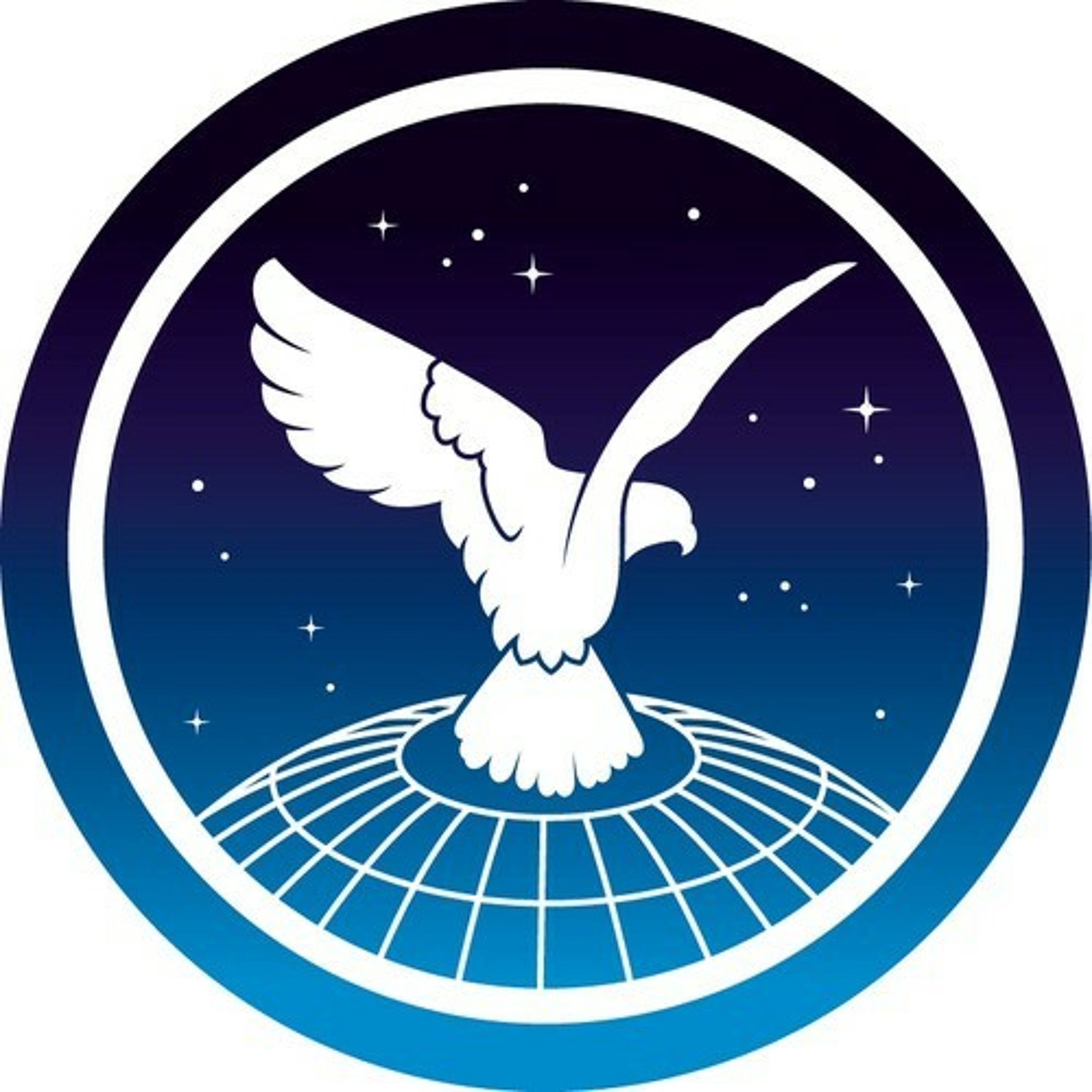
Wilbur and Orville Wright Lecture 2012
AUDIO: TONY PARASIDA, PRESIDENT, GLOBAL SERVICES & SUPPORT, BOEING DEFENSE, SPACE & SECURITY speaks at the Society for the 2012 Wilbur and Orville Wright Named Lecture. Thanks to Boeing for supporting the event.
Dec 12, 2013 • 34:40
Wilbur and Orville Wright Lecture 2013
The Wilbur and Orville Wright Lecture was established to honour the pioneering mechanical engineers who completed the first successful controlled powered flight on 17 December 1903. The 2013 lecture saw Dr Tom Enders, CEO, EADS ask how we can build a thriving industry that supports a flourishing society.
Dec 12, 2013 • 31:30
The Royal Flying Corps at War: The Early Years
This lecture examines the origins of the Royal Flying Corps who travelled to France in the aircraft they had. Driven by the necessity of war, there were resulting developments in tactics, equipment, communications and weapons in the first year of the Great War.
Nov 11, 2013 • 1:11:54
Brabazon Named Lecture 2013
Richard Deakin, CEO, NATS speaks about the anticipated arrival of the Single European Sky, where air traffic is managed according to operational efficiency rather than national boundaries. What are the challenges and how do we find solutions that Europe can sign up to?
Nov 6, 2013 • 57:33
Dynamics Challenges: Pushing Human Physiology Through the Stratosphere at Mach 1.25
Art Thompson CEO, Sage Cheshire Aerospace and Technical Director for the Red Bull Stratos jump speaks at the Royal Aeronautical Society about the Red Bull Stratos Project.
Oct 24, 2013 • 1:12:03
British Overseas Airways Corporation: 1940-50 and its Legacy
This lecture covers the first ten years of British Overseas Airways Corporation (BOAC) up to 1950 when Civil Aviation in the UK was about to dispense with the age of Flying Boats and was shortly to move into the Jet Age with the Comet 1.
Oct 14, 2013 • 1:08:30
Equator Aircraft - The Impact of Industrial Design
This Royal Aeronautical Society lecture provides a short version of the story and process that led up to Equator Aircraft Norway SA and the P2 project being created, and the methods that were used to create the aircraft.
Oct 3, 2013 • 1:09:49
The Evolution of the Upset Recovery Training Aid
Capt Rockliff discusses his near 20 year association with upset recovery and focuses on the Genesis and evolution of the Airplane Upset Recovery Training Aid, positive value versus the limitations of simulators to conduct Upset Recovery Training and the risk of negative training.
Sep 25, 2013 • 58:10
Gaia - Mapping a Billion Stars
The European Space Agency’s (ESA) Hipparcos satellite improved our knowledge of the position and velocity of 120,000 stars by two orders of magnitude in the 1990s and ESA’s Gaia satellite is due to repeat that feat for a billion stars. This is the most exciting of the world’s space science launches in 2013 and it is described by ESA’s Gaia Project Manager, Giuseppe Sarri.
Sep 20, 2013 • 48:05
Lanchester Named Lecture 2013
Prof McGuirk illustrates the aerodynamic challenges in modern combustion systems, and outline both experimental and computational research conducted to provide the improved understanding and enhanced design methodologies for the next generation of aero-engine combustion systems.
Sep 17, 2013 • 1:11:23
2013 Beaumont Named Lecture
Tony Tyler, Director General and CEO, IATA delivered this named lecture which honours Major Kenneth Beaumont CBE, DSO, MA (Oxon), AFRAeS. Beaumont was the UK’s most prominent name in air law in his age.
Jul 24, 2013 • 35:33
An Update on Thomson Airways’ ATQP: The Annual Training Event (ATE) Scheme
Capt Stuart Gruber, Head of Flight Technical & Training at Thomson Airways summarises the ATE scheme and provides a deeper insight into ATQP.
Jul 23, 2013 • 56:31
2013 Sopwith Named Lecture
Craig Kreeger, CEO of Virgin Atlantic Airways explains the current activities planned by Virgin Atlantic Airways and discusses the future opportunities and challenges faced.
Jul 17, 2013 • 46:45
2013 Amy Johnson Lecture
Gretchen Haskins, the Safety Director for the UK Civil Aviation Authority speaks about safety risk management in the Aviation Sector. She also discusses the key risk controls in place in the aviation system, and ways that these are monitored and assessed.
Jul 8, 2013 • 32:47
Aviation Safety - Did we just get here by accident?
This lecture considers the current state of aviation safety and the various mechanisms that help us to achieve superior performance
Jul 1, 2013 • 47:15
Edwin A Link Named Lecture
From the beginning of manned flight there has been a symbiotic relationship between the aeroplane and simulation in all of its different forms. The role of simulation and flight simulators in aeroplane development, training and evaluation has evolved significantly over the last 80 years, often in response to technical innovations in both the airplane and ground support systems. Dr David White's presentation looks at this evolving relationship.
Jun 12, 2013 • 59:46
Sir Sydney Camm Named Lecture
The Sir Sydney Camm Lecture was established in 1971, following his death in 1966, to commemorate his significant achievements in the field of aeronautical engineering. Sir Sydney Camm CBE FRAeS was one of Britain’s most distinguished aircraft designers. At this year’s Sir Sydney Camm Lecture, Sir Stephen Dalton, Chief of the Air Staff for the Royal Air Force, outlines the vital contribution that Air Power has made to international security during the last hundred years.
Jun 10, 2013 • 29:22
Flying Boats Of The Empire
This lecture was given at the Royal Aeronautical Society by Richard Knott, a highly acclaimed author and researcher on 20th century history who discussed the turbulent history of the 42 Empire Flying Boats built by Short Brothers.
May 16, 2013 • 52:54
Ann Welch Lecture 2013
The 2013 Ann Welch Named Lecture was delivered by Wg Cdr Ken Wallis MBE.
May 9, 2013 • 1:30:04
Alan Bristow Memorial Lecture 2013
Sqn Ldrs Reed and Muldoon and Sgt Willoughby share their personal experiences and highlight their individual roles as they take us on a journey encompassing today’s military rotorcraft operations, particularly working with the latest technology Merlin helicopter.
Apr 30, 2013 • 1:02:10
History Of Accident Investigation
This Royal Aeronautical Society lecture traces the story of aircraft accident investigation in the UK from the setting up of the Public Safety and Accidents Investigation Committee of the Royal Aero Club in 1912 to the present day.
Apr 11, 2013 • 1:26:51
Jet Transport Stalls
This joint lecture by Airbus and Boeing looks at stall requirements, predictive validation and flight testing. The speakers highlight where their respective approaches share common ground as well as exploring the areas in which they differ on technical approach.
Mar 14, 2013 • 1:46:41
Stewart Named Lecture - Aircrew Protective Equipment
This lecture look at aircrew protective equipment including helmets, clothing and other protective equipment for the military aviator - starting with leather flying caps and a mackintosh. In addition Dr Trudgill will discuss the equipment used for the protection of airmen, exploring how it has developed from rudimentary outdoors clothing worn by Edwardian pioneers, through to the complex systems employed by present day military aircrew.
Mar 5, 2013 • 57:06
Rotron Engines: From Conception Through Development and into Production
Founder of Rotron Engines, Gilo Cardozo, gives a sparkling account of the small super charged Wankel rotary engine in the backpack propulsion units that took him and Bear Grylls on their record breaking paraglider flight to the summit of Everest in 2007.
Feb 12, 2013 • 53:20
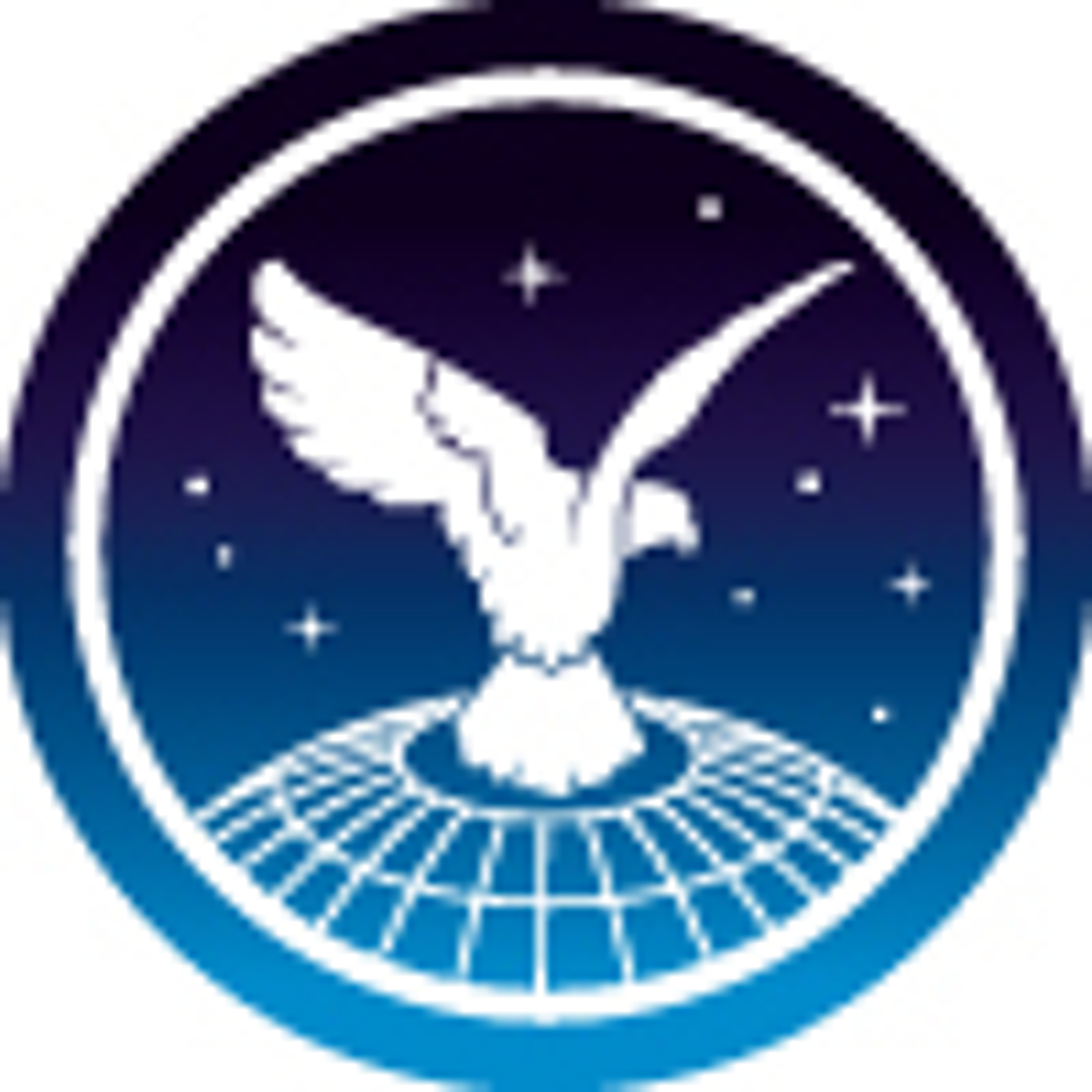
Brabazon 2012
Brabazon 2012 by AeroSociety Podcast
Nov 7, 2012 • 30:03
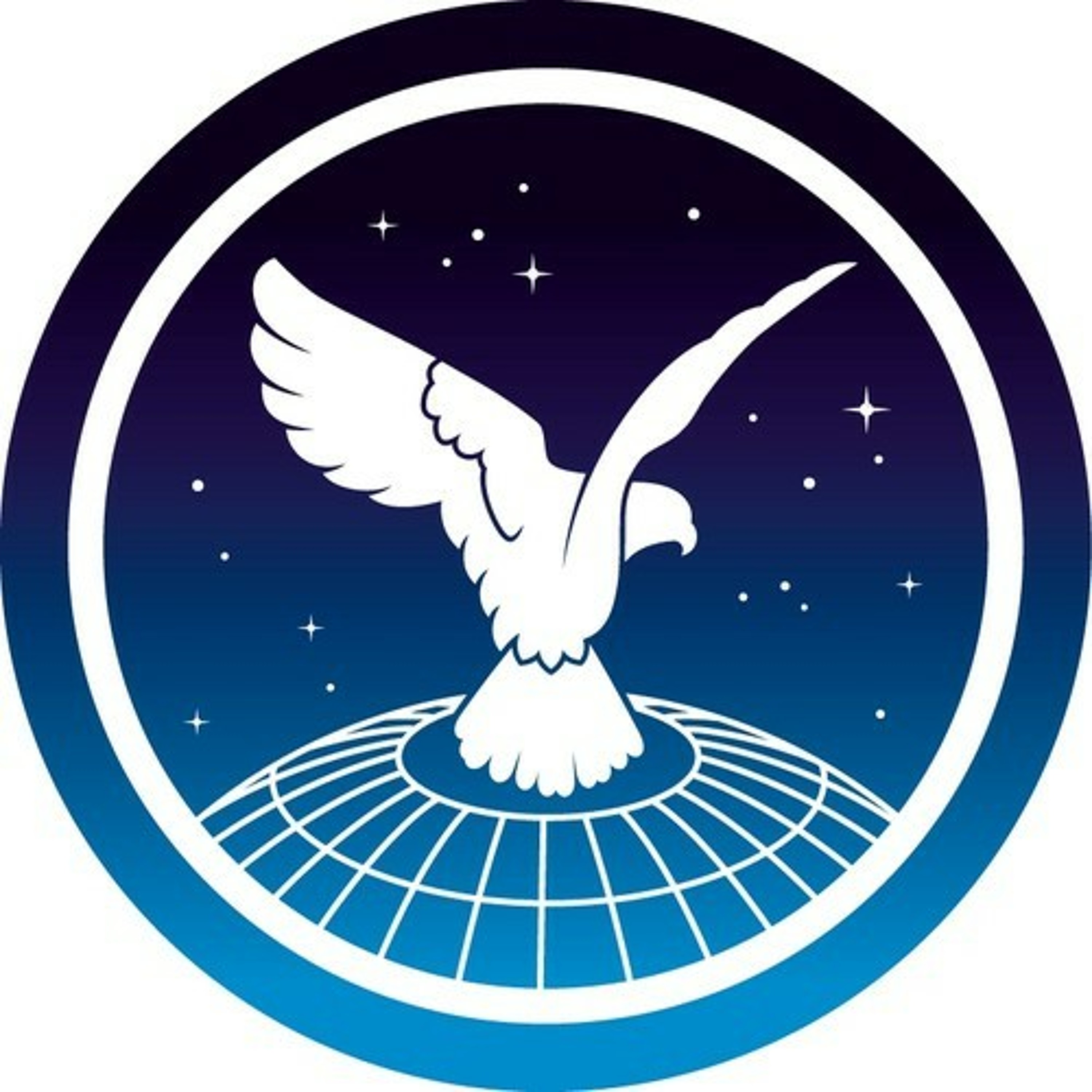
Curiosity, The Next Mars Rover
AUDIO: MATT WALLACE, MSL FLIGHT SAFETY MANAGER, NASA'S JET PROPULSION LABORATORY speaks at the Society for this Space Group Lecture. Thanks to Astrium for supporting the event and to the Space Group for organising the lecture.
Jul 17, 2012 • 47:49
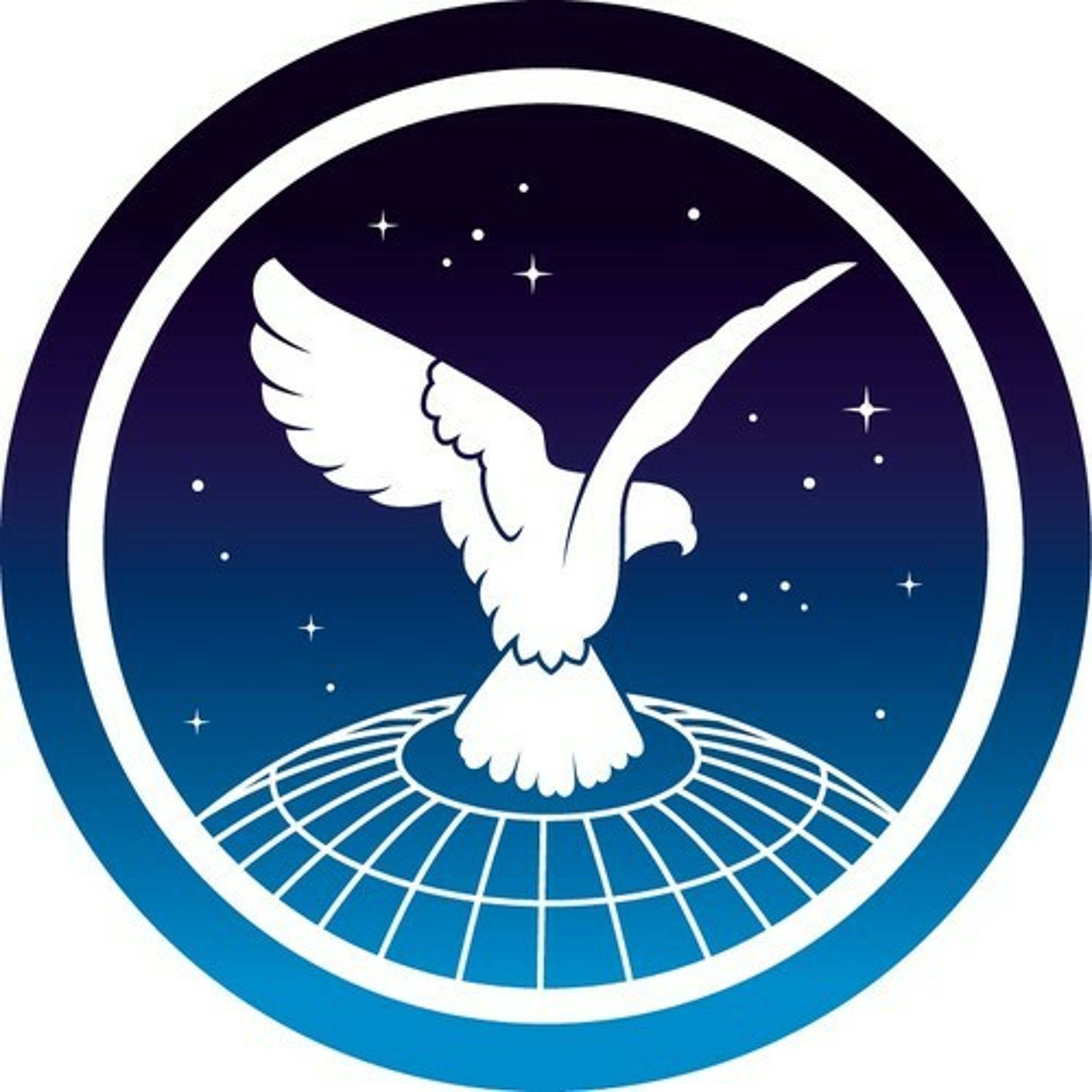
Aerodynamics And Aerodynamic Research
AUDIO: WILLEM TOET, HEAD OF AERODYNAMICS, SAUBER F1 TEAM speaks at the Society for the 2012 Lanchester Named Lecture. Thanks to CD-adapco for supporting the event and to the Aerodynamics Group for organising the lecture.
Jul 17, 2012 • 53:57
Changing Course While Losing Altitude: Anglo – American Aerospace and Defence in an Age of Austerity
AUDIO: MARION BLAKEY, PRESIDENT AND CEO, AEROSPACE INDUSTRIES ASSOCIATION speaks at the Society for the 2012 Amy Johnson Named Lecture. Thanks to Airbus for supporting the event and to the Women in Aviation and Aerospace Group for organising the lec[...]
Jul 5, 2012 • 46:41
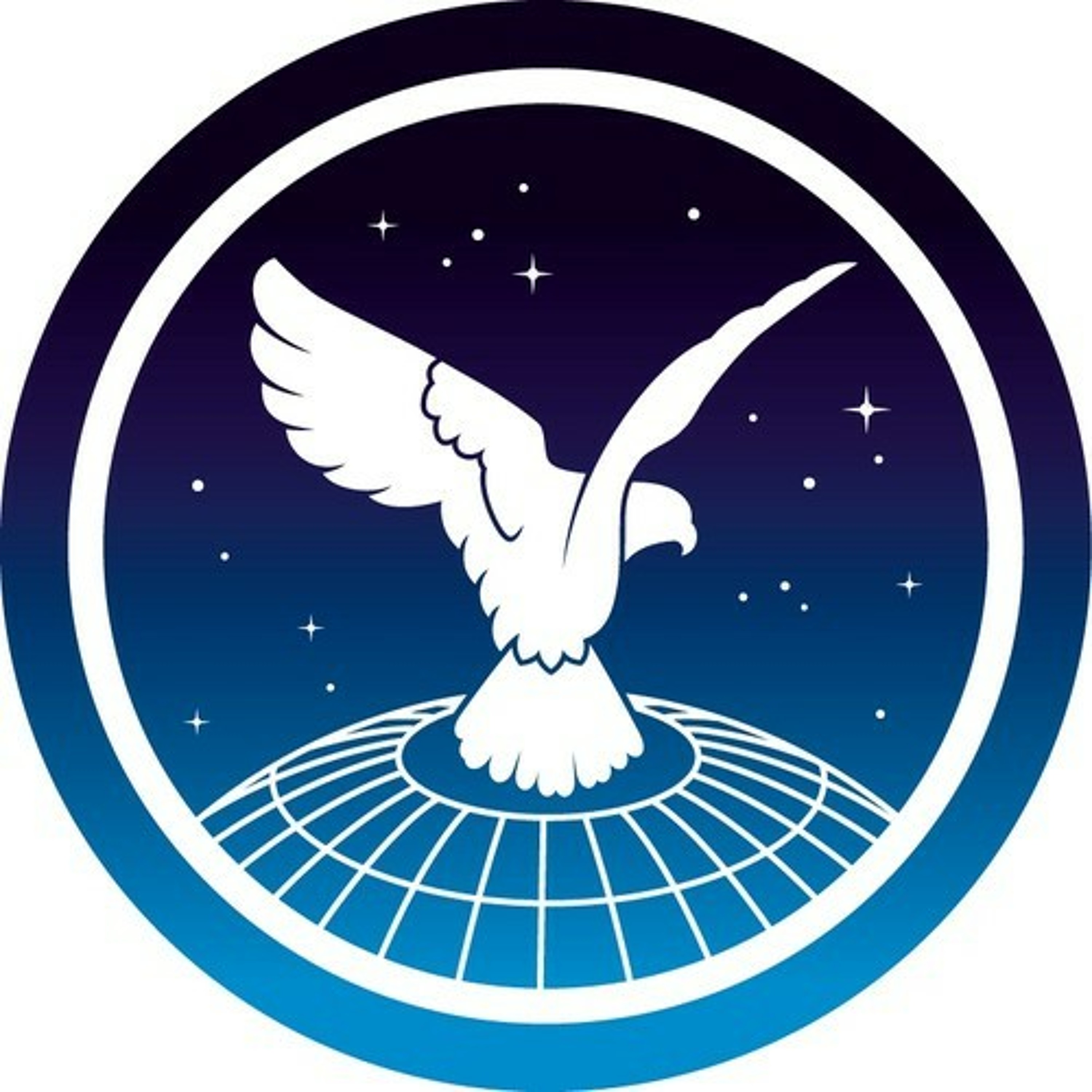
Delivering Capability Through Partnership
AUDIO: RICHARD THOMPSON, CHIEF EXECUTIVE, AIRBUS MILITARY speaks at the Society for the 2012 Sopwith Named Lecture. Thanks to Airbus Military for supporting the event.
Jun 21, 2012 • 36:32
